

content magazine, san jose phase 7.4 $9.95 CONTENT Issue 7.4 PHASE display until DEC. 2015 Issue 7.4. siliconvalley’S &INNOVATIVE CREATIVE CULTURE madeinsanjose,ca
Corazon
Featuring: Uproar Brewing Company Redemption Boutique San Jose Bike Clinic RockBar Theater Roberto Romo Third Space Poki Bowl DJ Cutso
El
by Roberto Romo

2 N. MARKET STREET, SUITE 100, SAN JOSE, CA 95113 / P: 408.293.4242 / UMBRELLASALON.COM

CCONTENT
Issue 7.4
“Phase”
Nov / Dec 2015
The Makers:
Cultivator
Daniel Garcia
Managing Editor
Flora Moreno de Thompson
Editor
Julianne Jigour
Circulation/Distribution
Elle Mitchell
Brand Director
Julia Canavese
Production
Kristen Pfund
Publisher
Silicon Valley Creates
Marketeer
Sarah Garcia
Senior Editor
Odile Sullivan-Tarazi
Designer
Daniel Millan, Elle Mitchell
Omar Rodiguez, Gustaf Fjelstrom
Photographers
Stan Olszewski, Mark Chua
David Ho, Scott MacDonald
Writers
Mark Haney, Brandon Roos
Anna Bagirov, Chad Hall, Gillian Claus, Kate Evans
Michelle Runde, Antoinette Siu
Nathan Zanan, Leah Toeniskoetter
Kevin Biggers, Diane Solomon
I keep waiting to arrive at some point in my life where I feel like I’ve “made it,” or where I can settle. But in reality there is nowhere to settle: life moves in one long movement through its various stages: high school to college, college to career, even onward to retirement.
When I was a kid and my sister or I would act up, she’d roll with the emotions and say, “It’s just a phase.” I guess it’s not that we “arrive” at something, we merely leave one phase and enter the next. I believe that this is the healthiest way to look at our journey of life—we are just passing through.
In this issue, we feature locals who are at different phases in their lives. Some are going through these phases either personally or professionally, while some are helping others through transitions of their own, like the folks behind the Awesome Foundation, Chamber of Commerce, and Downtown College Prep. These are just a few of the great stories of people helping and serving others in our community as they move from phase to phase.
Enjoy.
Daniel Garcia The Cultivator
IN THIS ISSUE
Artik / Matt Mahood / Jennifer Adaluz / RockBar Theater / San Jose Bike Clinic
To participate in Content Magazine: editor@content-magazine.com Subscription & Advertising information available by contacting Elle@Content-Magazine.com

Content Magazine is a bimonthly publication about the innovative and creative culture of Silicon Valley, published by .
cut up and rewired
Dale vN Marshall (UK) solo exhibition
Dale vN Marshall retur ns to Anno Domini for his second solo exhibition entitled Orbital–cut up and rewired, which documents a reflective jour ney through the painted object

Marshall has cut up and reworked parts of a 30 foot self-portrait on recycled cardboard. It was first exhibited on the streets of Bristol with the title: We need to transfer you home, which withstood torr ential wind and rain leaving it in a demoralized state The r eworked paintings in this exhibition focuses on a personal trauma from nature’s wish to be treated, revised and rebor n; a parallel for Marshall of once being sectioned in a mental facility during his for mative years as a young graf fiti artist
Exhibition: October 2–December 12, 2015
presents Anno Domini // the second coming of Ar t & Design 366 South Fir st Street, San Jose, CA 95113 www galler yAD com 408 271 5155 Gallery hours: Tuesday - Friday Noon–7pm, Saturday Noon–5pm & First Fridays 7pm–11pm Orbital


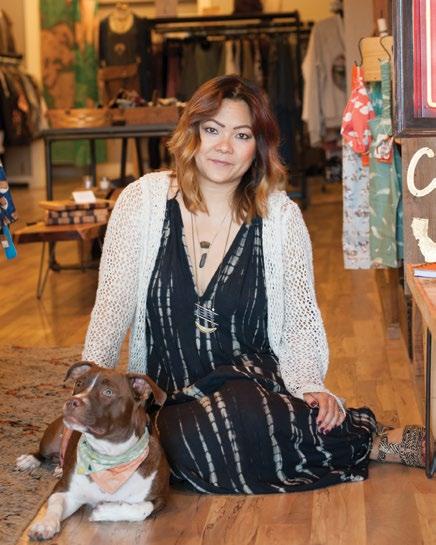

Content phase 7.4 All materials in Content Magazine are protected by United States copyright law and may not be reproduced, distributed, transmitted, displayed, published, broadcast or modified in any way without the prior written consent of Silicon Valley Creates, or in the case of third party materials, the owner of that content. You may not alter or remove any trademark, copyright or other notice from copies of this content. For further information, or to participate in the production or distribution, please contact us at editor@content-magazine.com
Nov/Dec 2015 San Jose, California
Uproar Brewing Company, pg. 32
Fashion by Jeremy Castillo, pg. 64
Day Trip 8 Pescadero, Ca CULTURE 10 Transportation ART & Design 12 ANML Design, Doug Hughmanick 16 Artist, Roberto Romo 22 Artik Art & Architecture, Bill Gould Profiles 24 Third Space, Lance Miller, Danielle Valley, & DJ Downs 26 Roxanne’s Biscotti, Roxanne Vinciguerra 28 Poki Bowl, Joey Nguyen 32 Uproar Brewing Company 36 San Jose Bike Clinic 40 Awesome Foundation 44 Biz Phase 48 Redemption Boutique, Tammy Liu 52 Chamber of Commerce, Matt Mahood 56 Downtown College Prep, Jennifer Andaluz 60 RockBar Theater, Susan Cramer Style 64 Her Dance, Jeremy Castillo Music 74 Jeff Conley Band 76 DJ Cutso 78 Album Picks, Tommy Aguilar Writing 80 Author, Evelyn So 82 Content Calendar 84 Content LABS
DJ Cutso, pg. 76
Redemption Boutique, pg. 48
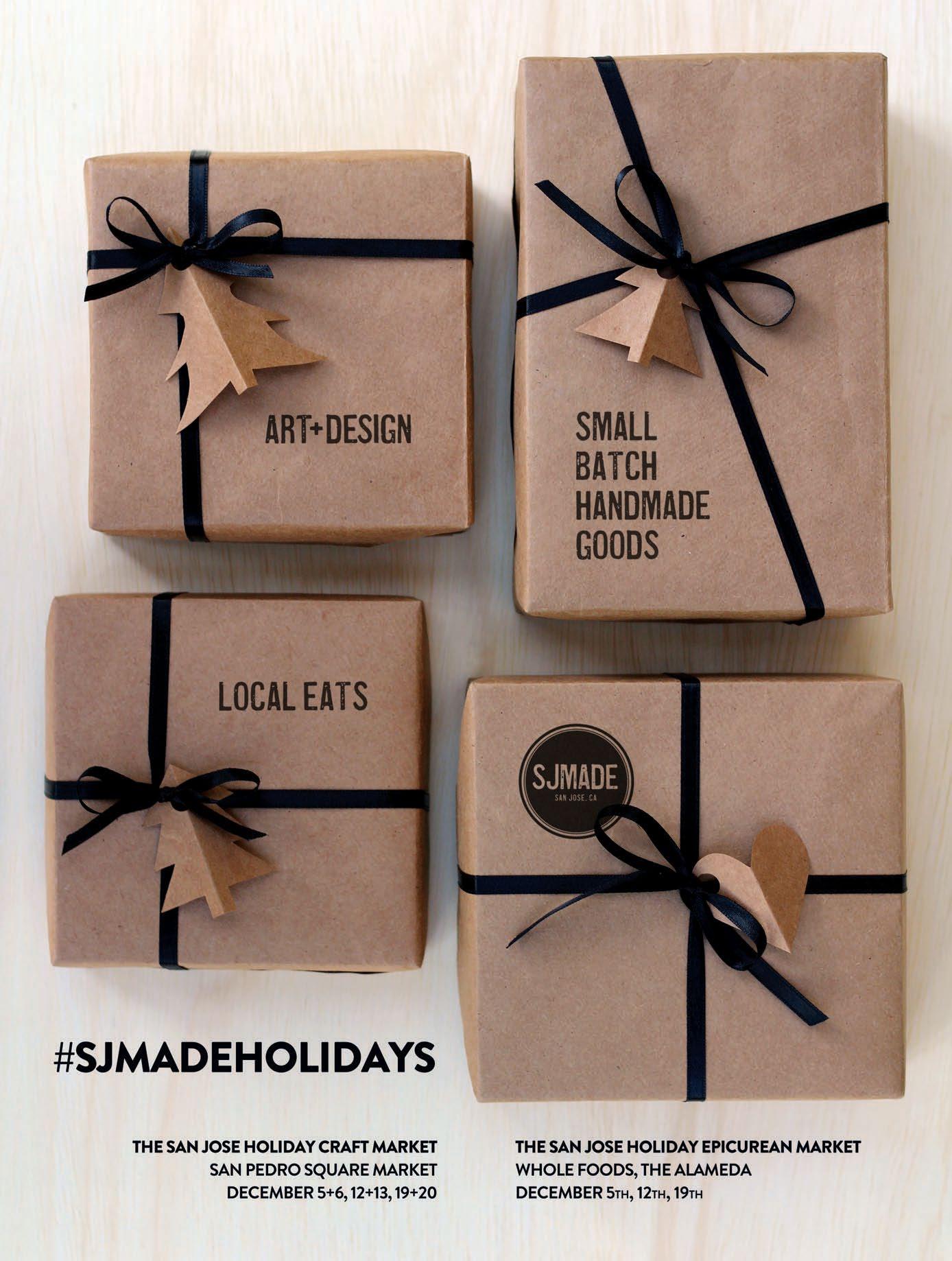
Need an escape? Don’t have a lot of time? Living in Silicon Valley provides you with all kinds of options for a short getaway. From the beach to the mountains, wineries to windsurfing, the South Bay is one of the best hubs for launching into world-class scenery and activities. So why not take a day trip?
Pescadero, Ca.
Article and Photography by Flora Moreno de Thompson
Day tri p 408
Directions from SOuth BAY
•Take I-280 N to Sand Hill Rd
Exit 24 from I-280 N 21 min (21.8 mi)
•Take CA-84 W
La Honda Rd to CA-1 S 37 min (21.4 mi)
•Turn left onto CA-1 S 6 min (4.6 mi)
•Continue on Pescadero Creek Rd Drive to North St in Pescadero 5 min (2.3 mi)
Welcome to Pescadero, CA Population: 643
There’s always plenty to see and do in Silicon Valley. But sometimes you just need to get out of town and off the grid. A drive to Pescadero can fix that. While only about an hour away from San Jose, this “slow coast” town feels much farther away. With views of the ocean along the Pacific Coast Highway and untouched coastal landscapes along the way, even the journey to Stage Road—Pescadero’s main street—is part of the adventure.
Start the day trip with a coffee and some friendly ambiance from Downtown Local. The baristas double as DJs, playing records while making drinks to order. The quirky cafe is also a boutique, featuring a meticulously curated selection of vinyl records, vintage goods, and local wares. Be sure to check out the little theater in the back, too.
A great place for lunch is the Pescadero Country Store, just a few doors from Downtown Local. The menu features wood-fired pizza, sandwiches, and a few other classic dishes and daily specials. You can take your food order outside and enjoy the beautiful weather on their large, grassy (and pet friendly) patio.
There are a few small boutiques along Stage Road, including SLOWCOAST. Although small, this little shop is hard to miss. Everything sold inside is made by local artists and supports a local cause,
from coastal preservation to feeding local schoolchildren.
A visit to Pescadero is not complete without a loaf of artichoke garlic herb bread from Arcangeli Grocery Company / Norm’s Market. This little market with a very long name is full of house-made gourmet food items like salsas, baked goods, and wine. Don’t forget to bring a beach blanket from home, because these make for a great picnic—head over to Pescadero State Beach after you’ve picked out a few goodies. You might want to grab an extra loaf of artichoke bread to take home, too.
If you’re a fan of goats (or goat cheese), be sure to visit kid-friendly Harley Farms while in Pescadero. Sign up for a tour on their website in advance (they fill up quickly), or just arrive and stroll around the farm on your own. After you’ve visited with the goats and llamas, stop by their gift shop and pick up some freshly made ricotta or chevre cheese.
The pace in Pescadero moves a lot slower than in Silicon Valley, but that’s what makes a day trip here so enjoyable. The next time you feel like heading out of town for the day, check out Pescadero and savor all that this little coastal town has to offer.
8
Downtown Local 213 Stage Rd Pescadero, CA 94060 650.879.9155
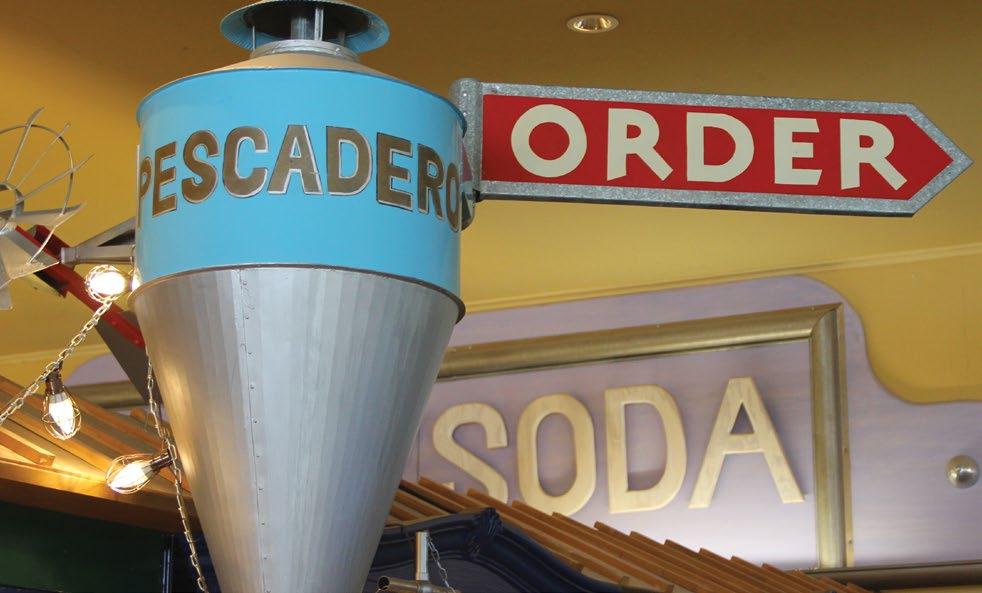
SLOWCOAST slowcoast.org
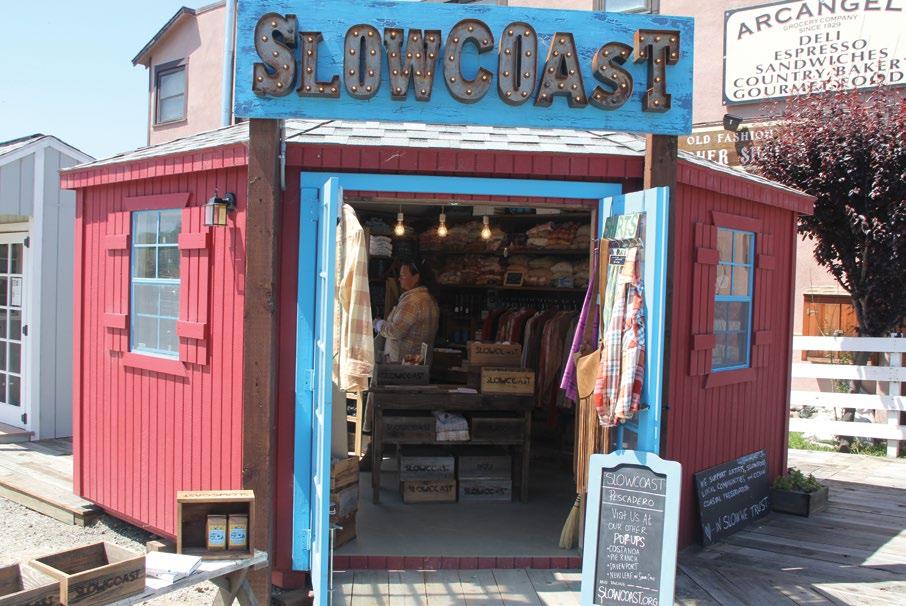
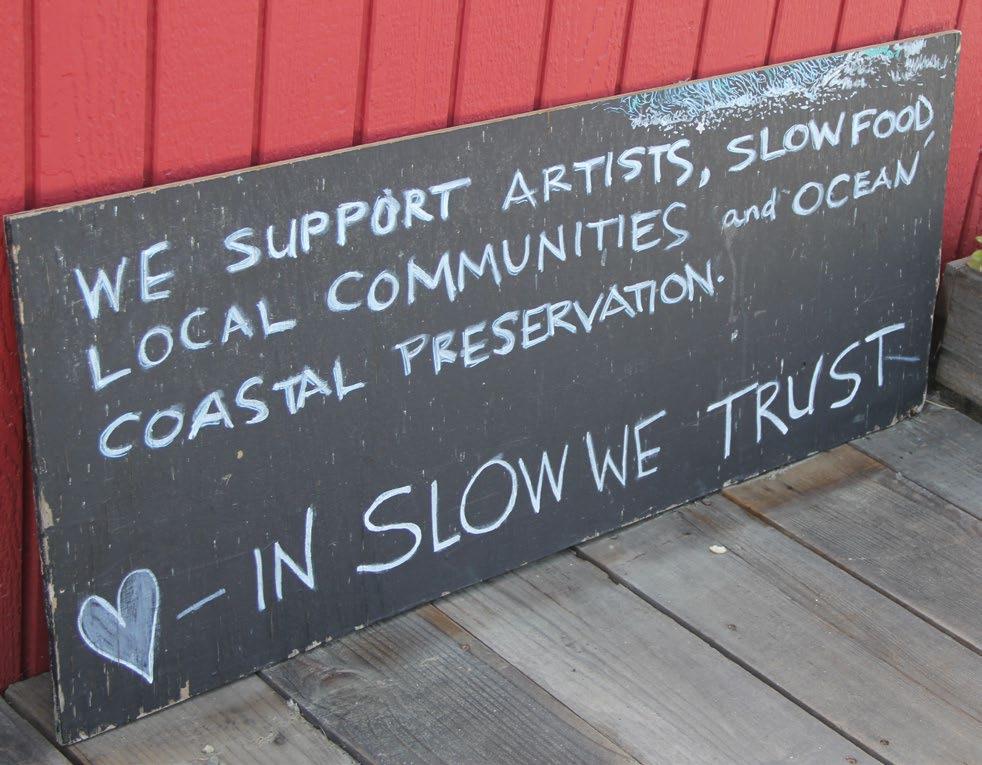
Pescadero Country Store 251 Stage Rd Pescadero, CA 94060 650.879.0410
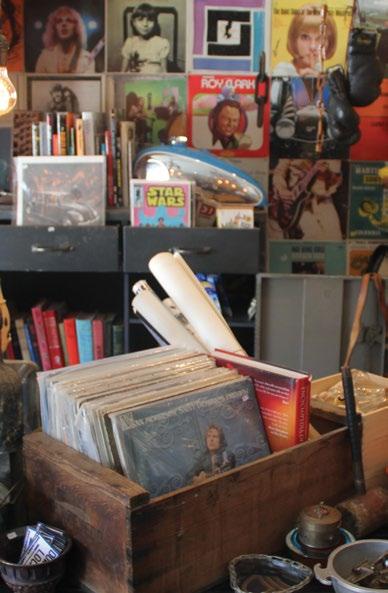
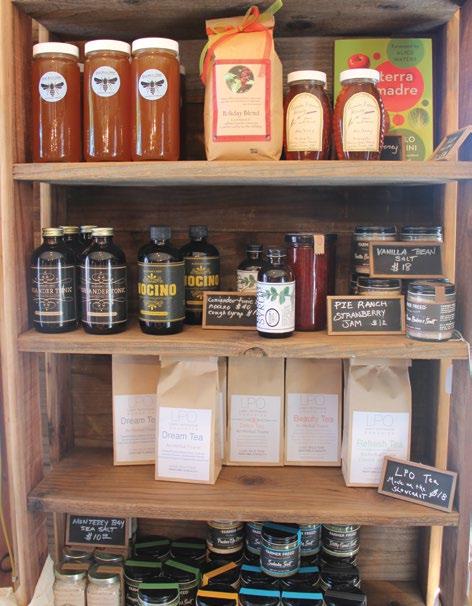
Arcangeli Grocery Co. (Norm’s Market) 287 Stage Rd Pescadero, CA 94060 normsmarket.com
Harley Farms 205 North St Pescadero, CA 94060 650.879.0480
9
transit
transformation
REIMAGINING DIRIDON STATION AS AN URBAN MECCA AND SYMBOL OF SAN JOSE PRIDE
Walk into NYC’s Grand Central Station and the grandeur and energy takes your breath away. It’s a shining symbol of civic pride that distinctly, proudly announces, THIS is New York City.
What if our Diridon Station could become San Jose’s Grand Central? What if this station, soon to become the best-connected rail hub in California, could be a symbol of the energy and dynamism of Silicon Valley?
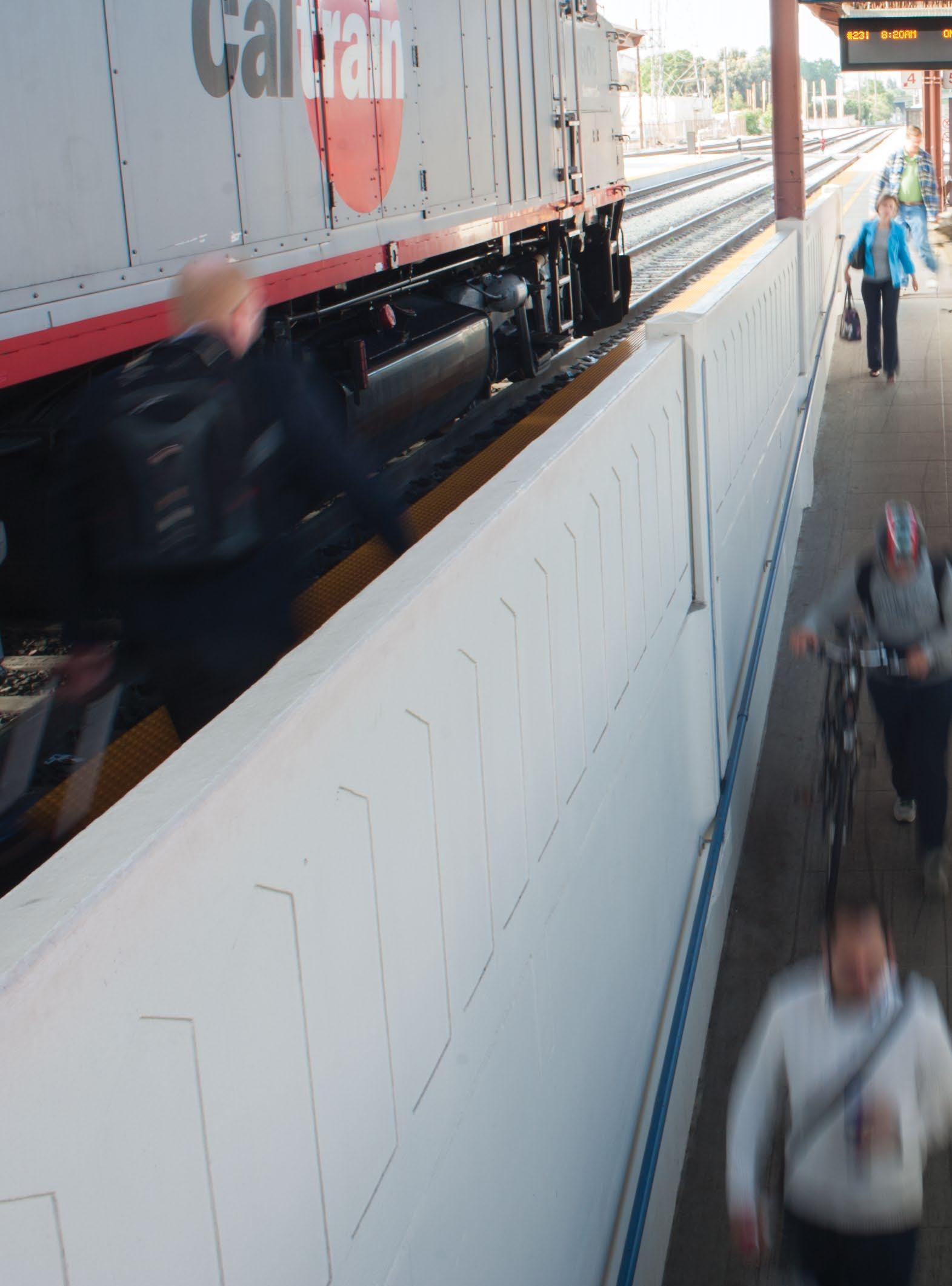
San Jose’s Diridon train station connects more regional rail lines than any other station in northern California. Once high-speed rail and BART get here, it will serve more rail lines than most other stations in the country.
But you wouldn’t know this based on how you as a passenger experience Diridon today. It’s not easy to find your way around the historic station or to find the right platform or gate to catch your train or bus. If Diridon is your stop by train, it’s even harder to figure out how to get to your final destination. There are no signs leading you toward downtown, SJSU, or the Sharks Arena.
To the west, the train station is lined by residential neighborhoods; to the east, there are acres of surface parking lots taking up space that holds amazing potential. So…what if in place of all that parking, there were a real destination? What if Diridon weren’t near a bustling urban center, but in one? What if a passenger could walk out of the station and right into a place buzzing with activity?
Let’s start dreaming about the station. What if Diridon were not only great to look at but intuitive to navigate? What if each station entrance had attractive, easy-to-read signage explaining where passengers could find the transit service they need, whether it be Caltrain, Amtrak, Altamont Commuter Express (ACE), light rail, or bus? What if real-time information about incoming and departing trains were located at the base of each rail platform? What if the ramps between the underground tunnel and platform level were wide enough to accommodate a full train of people exiting at one time, allowing for easy flow? Let’s not stop there…what about art in the station? Or a restaurant? Or a retail shop?
Written by Leah Toeniskoetter, San Jose Director, SPUR Photography by Daniel Garcia
What if all transit operators, City leaders, and residents got behind a clear and compelling vision, one that could lead us to our own Grand Central?
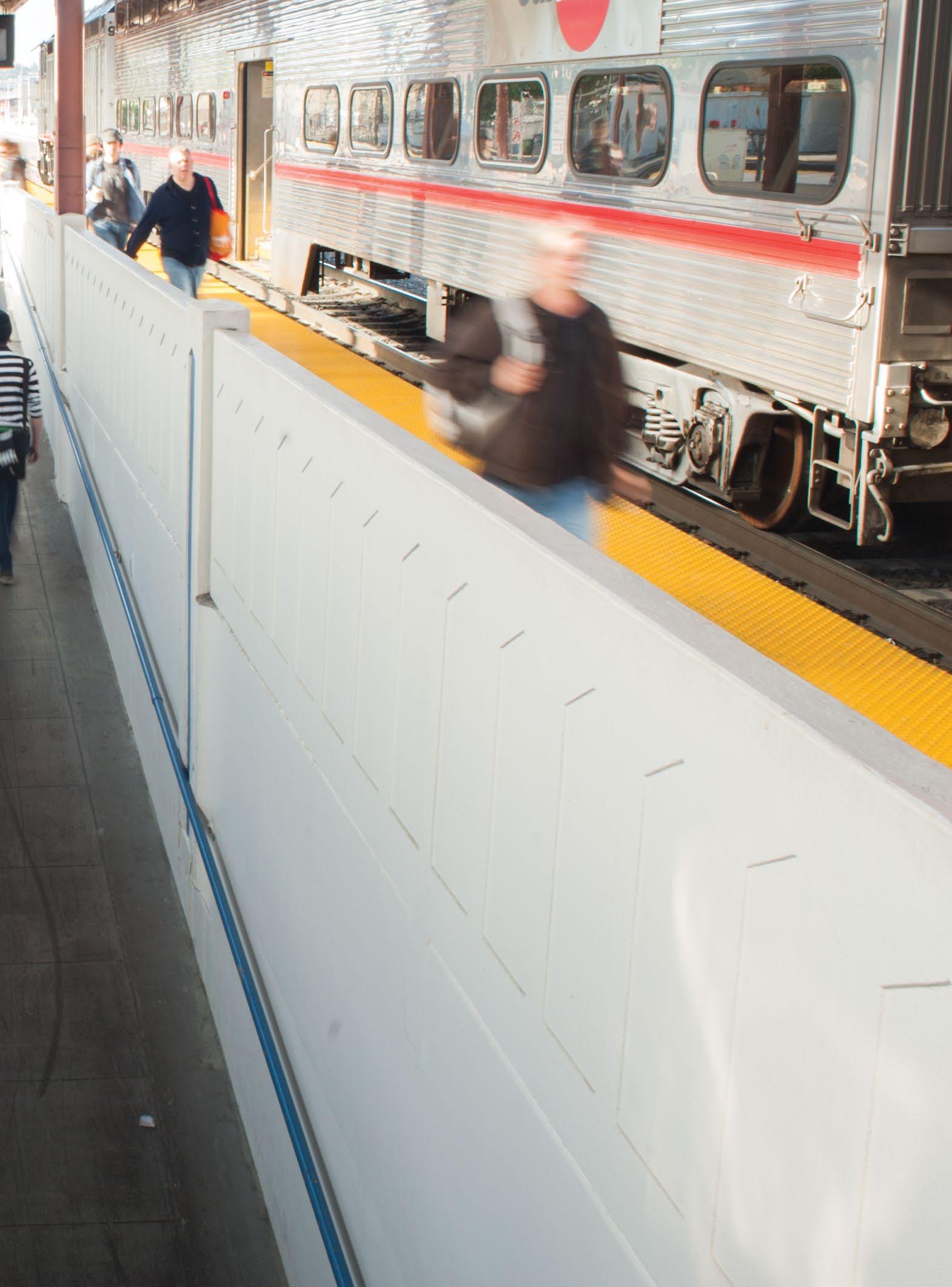
Now let’s think bigger. What about a total redesign, integrating the historic station into a grand 21st century landmark? When BART and high-speed rail meet at Diridon, which could happen in the next 10 to 20 years, there will be six regional rail lines connecting San Jose to the rest of California. What if that station were one, super-connected, fully integrated experience of the sort we see in New York City, Washington, D.C., and most European countries? One where you could drop off your dry-cleaning, buy a fresh loaf of bread, and shop in specialty stores that represent San Jose, much like the ones our San Jose Airport has introduced in its terminals? What if the station housed all transit lines under one roof, making connections seamless and stress-free? What if the transit systems could work together so that one transit card could work for every one of them? What if all transit operators, city leaders, and residents got behind a clear and compelling vision, one that could lead us to our own Grand Central?
Now, what if, when a traveler left Diridon and headed downtown, she stepped into a fabulous place? What if there were interesting architecture, great retail and restaurants, greenery, an active paseo that connected with our existing Paseo de San Antonio? What if this were a destination worth seeking out, even if you weren’t getting on a train? A place to see and be seen, to dine, to stroll? An easy place to get to on transit, by bike or walking? What if the path downtown toward Santa Clara or San Fernando were an inviting walk rather than today’s sea of parking lots? What if the buildings along Los Gatos Creek and the Guadalupe River and Park took advantage of their waterfront locale with riverside cafes, making it feel more like a place to linger than one to pass through quickly?
There is one place in San Jose that has the potential to completely transform everything around it, especially the urban center of the South Bay, our downtown: it’s Diridon Station and the surrounding area. Let’s start dreaming big, San Jose!
spur.org 76 South First St San Jose, CA 95113 408.638.0083 infosj@spur.org
ANML
design
As a teenager, Doug Hughmanick’s creative outlet was graffiti: spray paint was his medium of choice, and the South Bay was his canvas. Someone suggested he channel his artistic abilities into art school, an idea he had never thought of before. Hughmanick found out about Academy of Art in San Francisco and was intrigued. Not so much for the art education, but to find new places to graffiti. “I was 18 wandering around SF with a skateboard and trying to figure the whole thing out,” Hughmanick says. Two years into the art school experience, he realized a career in design was his future.
“I started thinking, ‘OK I need to take this seriously,’ and flipped the script,” he says. “I got tired of getting in trouble and got a real design job and then just left the graffiti behind because I was getting the same satisfaction for my need to create with design as I was from graffiti.”
What’s the biggest surprise for you in starting your own agency?
Probably just all the different things that go into it. It’s not just design anymore when you take that on. You’ve got to think about hiring people. You got to think about giving people benefits and competing with all the tech companies around here—it’s very challenging. It’s tough.
You got to think about all your accounting, you got to think about how you’re going to pay rent on a building, and all that stuff is outside all of the creative stuff. And you still have to be a rock star in the creative world.
What part of your job that you’re currently doing do you love the most?
I really like when you get to work with a client like Autodesk or a client like Yummly, or—we have another client that’s pretty confidential right now—clients we get to help change the way old things are done.
For Autodesk, we got to work on a piece of software for them. It’s almost like if you’re building the controls of Photoshop. Their designers use it to build new parts of a city...infrastructure software. If a designer goes, “Let’s take a new part of San Francisco—Mission Bay or Dogpatch. We’re going to develop Dogpatch now. We need waterways.
We need drainage. We need new bridges over canals.” This software is what they use to do all that. Someone’s going to use this to create a new area or a new park or whatever it might be. You’re involved in that process somehow. These projects really excite me.
What do you like most about the creative process?
I like the stage when we have figured out how everything is going to work and we begin marrying the design language to the functionality. I get excited when I start to see work come to life and begin to interact with it.
What do you do outside of work?
I love being outside, going on trips, and my wife and I love traveling. It’s getting harder and harder, but we took a trip to Patagonia a while back. We went to Argentina, Chile, Peru. Years before that we went on a two-month adventure all through Southeast Asia.
I’m also a huge mountain biker. Mountain biking’s really my thing, which is possibly because it puts me out into nature. It turns my brain off. I get out of the digital world and I’m surrounded by trees. It really balances me out, kind of recharges me. I come back to the land of computers and I’m refreshed.
Have you always been kind of an outdoors person?
I’ve always been into adventure and I think that’s one of the things that attracted me a lot to the whole graffiti world, just being out there exploring and finding the places that most people didn’t go to. It’s the same thing with mountain biking—finding new trails and exploring the woods. I think that that just helps me balance out.
Industry-wise, what trends do you see in digital design and digital advertising?
We do a lot of product stuff. We’re starting to get a lot more into designing things that are tools, as opposed to just straight marketing, as opposed to designing advertisements that might live on a website and die.
I think the minimalistic approach—less is more—is taking over a little bit. You hear some people talk a lot
Interview and Photography by daniel garcia
“I WAS GETTING THE SAME SATISFACTION FOR MY NEED TO CREATE WITH DESIGN AS I WAS FROM GRAFFITI.”

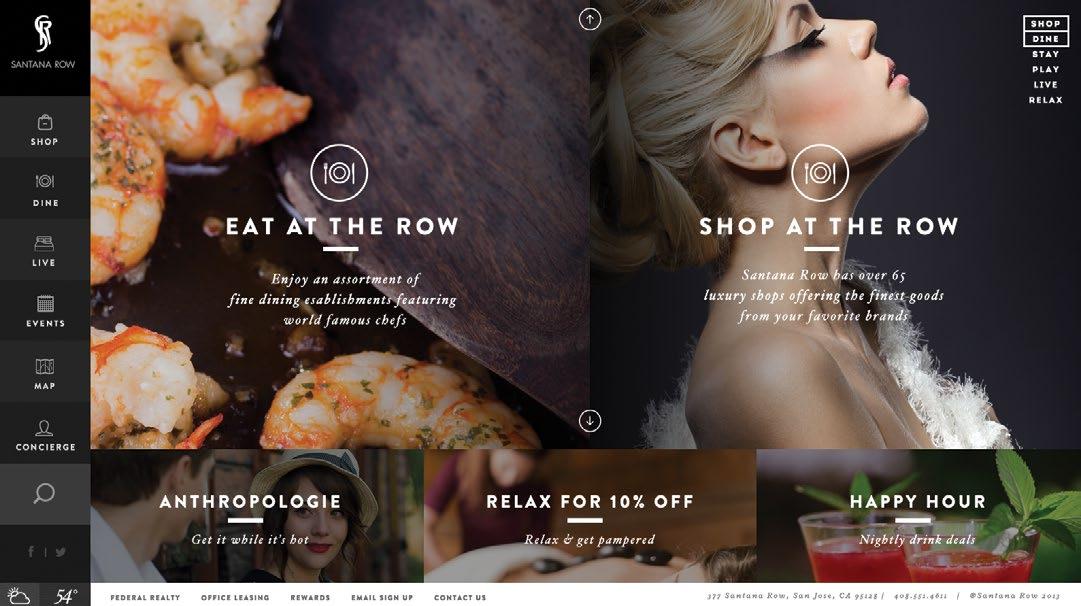


about having a lot less choices in interface design and making it very simplistic and guiding people through experiences. I think that is definitely a trend that I’ve been noticing happen: just a lot more simplicity.
How has being a designer changed your view of humanity? The way you look at things.
I look at everything as a user experience. It changes your thinking. You go into Philz Coffee, for example. I’m like, “I don’t know what the fuck I’m supposed to do. I’m standing at the counter. There’s a guy over here, there’s people over here. Who’s in line? Where do I pay?”
I walk up to the register. I’m like, “What happens if nobody pays?” He goes, “I don’t know. If it happens, we’re not going to worry about it.” Just things like that. You start thinking, “How can this be better designed to make this more clear?” You start looking at the physical world in user experience terms.
Was that already in your personality, you think, to problem-solve? As you went from graffiti into design, then is your brain now thinking that way, or did you already have that....
No, it started with doing this interaction design. Before, it was all quick fixers. “Let’s make it look awesome,” all sorts of that. You get so caught up in that, you don’t think about if it’s the best way for it to work.
Think about your audience, don’t just design for yourself. Be willing to think, who is viewing this piece? Who’s using it? Because it could look beautiful, but if it doesn’t work, all you’ve got is a pretty picture.
I think that happened along the way when people started to question my work. They’re like, “How does it work? It doesn’t make sense.” I’m like, “But it looks cool.” They’re like, “If you just did this, it’d be so much easier.” I’m like, “No, I really like that little button I put right there. It’s shiny and it’s cool.”
Some people are siloed, like I only design user experience and I only do visual design, but I don’t feel like that creates the best end product. You need to consider both.

What is the most challenging thing for you on the creative side at this particular point?
Probably the most challenging part of it is staying fresh. You always have to stay ahead of the game. You always have to think into the future.
Is that as far as the tools that you’re using? Design trends? The look. Yeah, flat design is super-trendy right now. What’s next? I don’t want to do just a flat design anymore, because if everybody’s doing that, how do you stay ahead of the pack? That’s always the challenge. You’ve got to stay on your toes.
ANML.com
ANML
15
instagram:
facebook: ANMLstudio
ROBERTO ROMO

AND EDUCATOR ROBERTO
CORAZON AND CREATIVITY
ARTIST
ROMO IS ALL
Written by Anna Bagirov Photography by daniel garcia
Roberto Romo was born, as he puts it, “in the middle of nowhere” in the Sierra Madre; and throughout his early school years, he moved back and forth between Mexico and the US, which frequently put him behind in classes. When he did not understand a lesson, he would doodle. Today he is a MALI (Multicultural Arts Leadership Institute) graduate, the first in his family with a college degree, and he’s active in the San Jose arts community as a freelance illustrator, an art director at the newspaper El Observador, and a teacher.
For the Opera Cultura Theatre production Cuentos de Peregrinacion (Tales of Pilgrimage), Romo was commissioned to distill the Mexican migrant experience into five paintings. In “Working in the Fields,” a strawberry pierced by a nail dominates the scene, serving as pedestal for a pale gold hummingbird, its wings serenely lifted as though ready to take flight. The strawberry’s sweetness is juxtaposed with the physical pain and financial struggle of the migrant worker: that sweetness comes at the cost of someone else’s bitter sweat and tears. The hummingbird represents the migrant’s ability to adapt to and to survive, with grace and resolve, any situation. In “Leaving Mexico,” the Mexican eagle perches proudly before the Statue of Liberty as caballero, its familiar features distinctly Mexican, an ochre cowboy hat set firmly atop its head. The symbols of the two cultures are deftly interwoven into one whole, one new identity. In “Crossing the Border,” a silent trio of compass, water, and vulture conjures up the death that awaits so many who undertake that long and harrowing trek through the desert. “The empathy of the artist is universal,” Romo observes.
Empathy is only the start. For Romo, the drive to create is bound inextricably also to the drive to examine and analyze. At the School of Arts and Culture, he introduces art as a way to guide students to live their lives more consciously, exposing the dangers of not looking at the world with awareness, of not questioning, of too readily assuming that what is routine in life is also truth. Art, for Romo, is the cornerstone of mind, spirit, and individual
thought: it is the magic created from meditation. “Art is there to recover what is hidden and what has been lost,” he says. “I paint to provoke. Art starts a dialogue within yourself.”
His current project, La Nueva Loteria , explores what he calls his hybrid self: the intersecting bloodlines of aboriginal and European. This 54-painting series is based on the widely played card game in Mexico, brought from Europe and assimilated into Mexican culture hundreds of years ago. “We are a society that has been vandalized,” Romo says. “We’ve been obligated to survive by any means.” Romo’s reenvisioning of the cards brings to the fore the symbols of a Mexican and an Aztec culture smudged out of existence by a dominant European system. In the original deck, La Muerte, the card of death, features the standard Grim Reaper of European religion and folklore. Romo has depicted instead a skeleton reclining, as if sleeping, on a pillow, an homage to the aboriginal view of death as a long sleep. In his vision of El Corazon, the heart is fully realized in ultra-realistic anatomical detail, with two delicate gold bands beside it, anchoring love within marriage and family.
The exhibition is scheduled for this coming November at the School of Arts and Culture, and Romo’s goal is to have the paintings available in card form as a real game: La Loteria reinterpreted for the new millennium.
In a world of ready mechanization and assimilation, a world too formed of and by mass culture, Romo pushes himself, his students, and us to question the picture of reality the world offers, calling upon all of us to press past that picture and to see what really is. In this quest, the artist leads the way. “We form matter out of antimatter. We are like God, like creators. Artists provoke the spirit,” he says. “We artists are the earthquake. Everyone stops and listens.” To do this, to be this, sometimes means leaving the comfort and safety of the established. But do not shrink from the task, Romo tells us. “You are a coward if you don’t launch yourself at the unknown,” he urges. “Go out and get it.”
robertoromo.net
“ART IS THERE TO RECOVER WHAT IS HIDDEN AND WHAT HAS BEEN LOST.… ART STARTS A DIALOGUE WITHIN YOURSELF.”

el corazon
el diablito

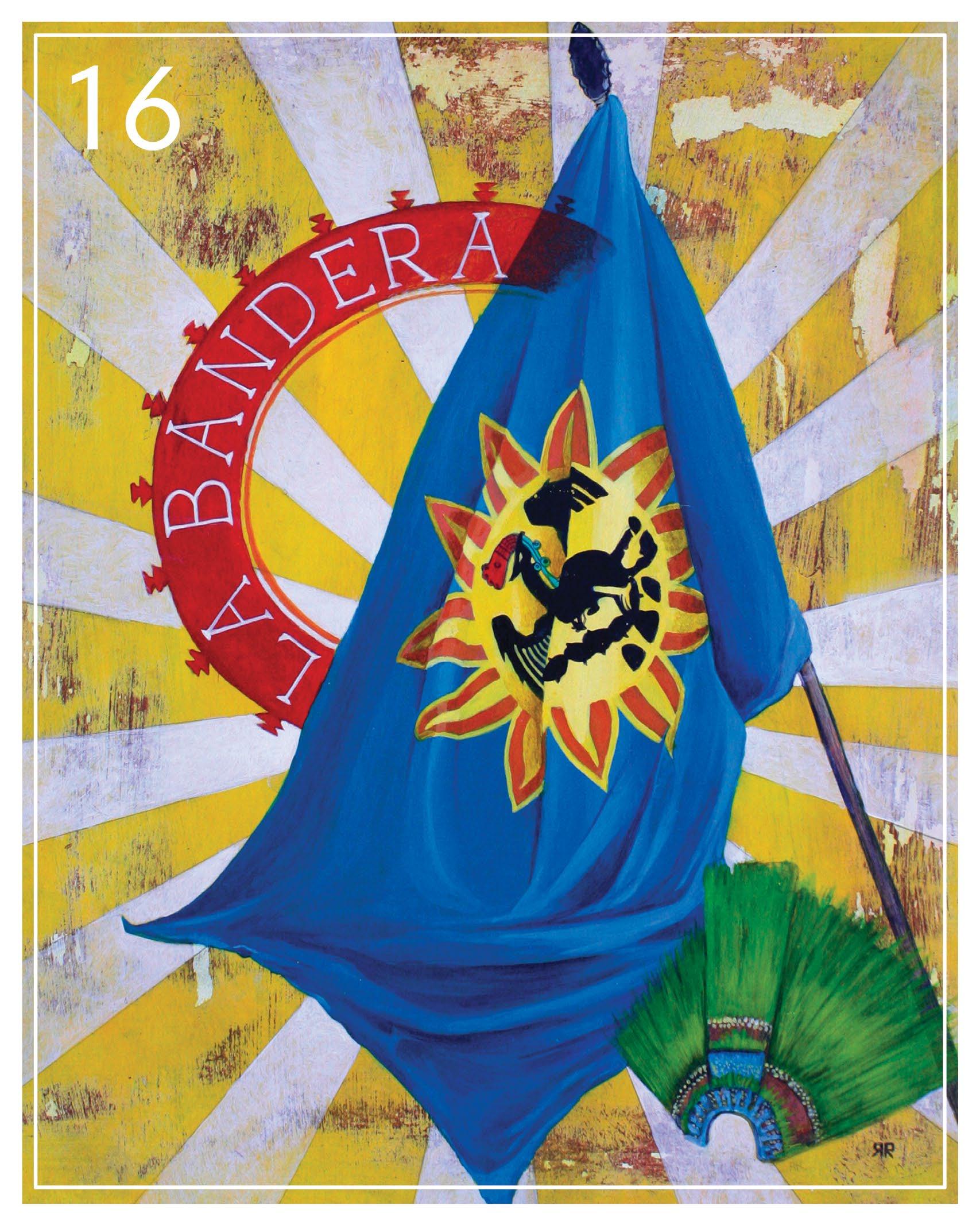 la bandera
la bandera
 la muerte
la muerte
WANDERING INTO ART
ARCHITECT BILL GOULD’S LIFE WAS DESIGNED FOR ART
Written by Michelle Runde Photography by Daniel GArcia
Walking through Artik Art & Architecture, a San Jose–based architectural design and public art service, is like going down the rabbit hole with Alice: there are unique and quirky art pieces hanging from the ceiling, mock-ups for statues, conceptual designs, all vying for your attention. This wonderland of art and design reflects the style of Bill Gould, Artik’s founding principal architect. Gould has been creating public art for years, and with his eye for organic beauty and a constant will to try new things, it’s no wonder his unmistakable work is sought after.
Gould was born in San Jose and grew up in the Bay Area. In high school, he developed his interest in design while working at the San Jose Civic Light Opera. There, he was cast in a performance of Peter Pan. While acting wasn’t his strength, he loved being involved in the world of theater. He stayed with the opera to assist in design, paint sets, and help out wherever he could.
At 17, fed up with high school, Gould left to work at a print shop. At the suggestion of a mentor, he then enlisted with the Navy—in the midst of the Vietnam War. When a commanding officer heard Gould had design experience, he was sent to work at the Navy’s photo lab, where he spent his three years of enlistment.
After the Navy, Gould worked a succession of odd jobs before deciding to pursue a theater arts degree at San Jose City College, where he began working as an assistant technical director. No matter where he was in life, Gould always came back to design.
But, ever restless, Gould left SJCC early to work as a stagehand for a summer stock series with a Shakespearean theater company in Pennsylvania. The experience was intense and fast-paced—and Gould loved it. Continuing his bout of wanderlust, Gould next traveled to Europe with nothing more than a guitar and 100 dollars in his pocket. He survived mainly by playing music in the underground stations in Paris and London. After three months of hard living, he returned to the US and to his roots at the San Jose Civic Light Opera, where he’d worked in high school.
He became the technical director, but eventually he found he’d lost his thirst to work in theater. It was time to find a new path.
Returning to his natural eye for design, Gould entered the architecture program at the University of Oregon. It was there that Gould, required to take English 101, met Jill Hensen, a professor of literature. A few years later, Gould and Hensen would begin to date. And this time, the prompt to move came from without. Hensen was transferred to teach in Florida, and while there, she received a Fulbright Scholarship to teach literature in Poland. She called Gould, still in Oregon, to ask whether he’d go with her abroad. He didn’t have to be asked twice. The spring break before they left for Poland, they returned to San Jose to reunite with a courthouse marriage. Then, they flew across the Atlantic to their new home.
In Poland, Gould noticed there was practically no public artwork in the community or surrounding area. Most buildings bore somber, post-war architecture with little color or variation. Gould used his connections within upper Polish society to propose a public art project. It met with much resistance at first, but with the help of family friends and the support of a few key people, Gould achieved success with the unveiling of Maki (Polish for poppy) in 2014. Maki is an enormous sculpture of wild poppies, towering over a grown man. Hanging from the petals of the poppies are clay tiles made by children and residents of the community. Gould notes that if not for the community’s involvement with the tiles, the project might not have been finished.
Now, back in San Jose, Gould focuses his creative talents into Artik Art & Architecture. The organization makes almost exclusively K-12 school-centered projects, as well as public pieces for local parks. Art and architecture are conjoined, and the users of each site are encouraged to participate in the creative process.
The wandering designer has come home, bringing his gifts of design to the community.
22
GOULD HAS BEEN CREATING PUBLIC ART FOR YEARS, AND WITH HIS EYE FOR ORGANIC BEAUTY AND A CONSTANT WILL TO TRY NEW THINGS, IT’S NO WONDER HIS UNMISTAKABLE WORK IS SOUGHT AFTER.
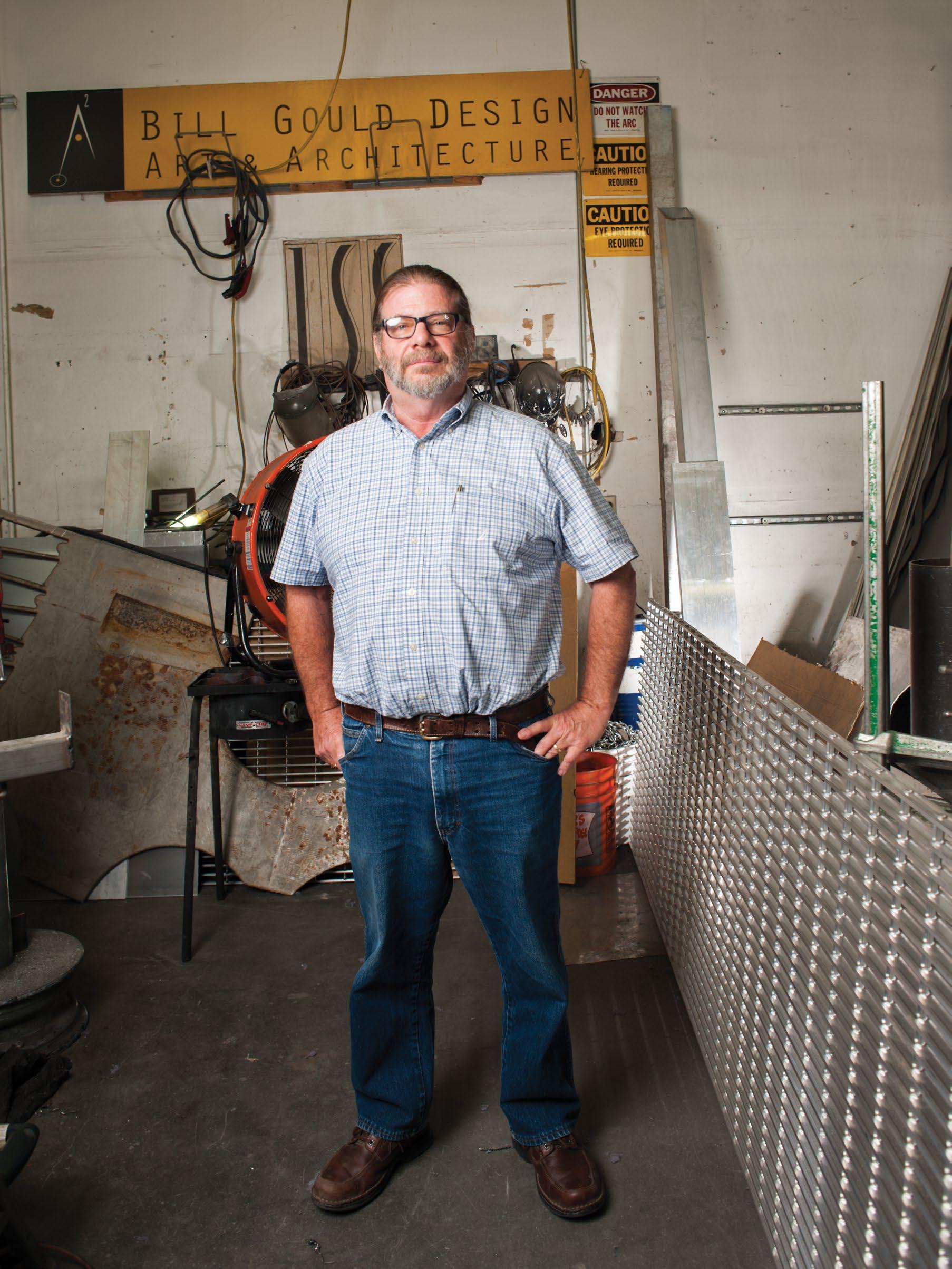
artika3.com Artik Art & Architecture 394-A Umbarger Rd San Jose, CA 95111
Artik Founder Bill Gould
third space
bringing art and community back to personal health
Written by Jennifer Elias Photography by Stan Olszewski
Aperson’s “third space” is the sociocultural construct that each person derives their identity from three places: your home space, your workspace, the place you seek community—your third space. It’s a classic theology that dates back to the 1900s, but ThirdSpace Fitness is bringing it to the forefront of its business model in current-day Silicon Valley, smack dab in the middle of downtown San Jose’s SOFA district.
There are no machines at this gym, but a lot of open space, weights, and ribbon-like contraptions hanging from the natural wood rafters of the second floor’s high ceilings. With the exception of new bathrooms, no changes were made to the former Metro building. The rooms are bright and airy. Outside the yoga room, a striking sunset shows. “The building kind of spoke for itself, so we just allowed it to do so,” co-founder Lance Miller says.
Co-founders Lance Miller, Danielle Valley, and DJ Downs spent a year planning a fitness space for those who have a lot of want, but not a lot of time—a centralized place. “We noticed we were all going to different places for a yoga class, going to a chiropractor, getting massage services,” Miller explains. “Not to mention taking time and money going from place to place, and having to coordinate all these resources on our own.”
Miller owned CrossFit San Jose, the oldest CrossFit location in Northern California. Valley owned Breathe Yoga in Los Gatos. And Downs owned CrossFit Los Gatos. The trio fell to talking and found they shared a concern for centralizing health and wellness resources in one place, a place that also involved the community. “We all came into it,” Miller says, “with the idea of there’s so much more that needs to go into training an athlete than just the strength and conditioning.”
ThirdSpace offers educational classes and social events around downtown San Jose. It’s also an art gallery, a place intended, in Miller’s words, to nourish body and soul. Miller has a background in film production. Valley, a BFA
in art history. ThirdSpace represents a marriage of their passions: art and fitness. “People come to yoga to learn how to move their body and breathe. Our main thing is teaching people how to take care of their bodies, and the goal-setting aspect to teach you how to create the process to get you there,” Valley says. “The art is in the journey.”
February was ThirdSpace’s first “First Friday” as residents of downtown’s SoFA district. One of Valley’s art teachers from Santa Clara came in with a group of students for what seemed like a full-circle-moment. “It was a way of showing off the place to people who are important in our lives without knowing it was even happening,” Miller chimes in. “I think those students made it extremely special, probably very hard to re-create.”
ThirdSpace doesn’t follow the typical gym model. It isn’t focused on the quantity, but rather on the community. “You’re not going to see people come in here, put on their headphones, do their workout, and go home,” Miller says. “You’ll see people really interact, stay longer than classes, come before classes.” And—if Miller has his way—think of the space as their second home.
“We don’t really accept people leaving, and by that I mean, if someone isn’t getting what they need from the community, then the community has to change and that’s just a lot of research on our part,” Miller says. “We still need to be a community,” Valley agrees. “We can’t have people who are invisible in this place. It’s like a family.”
ThirdSpace is also a place focused on recovery, a component Miller says is missing in today’s gym culture. “We go-go-go, and expect to wake up and go-go-go some more,” he says. ThirdSpace sets out to be restorative. It sets out to be not simply a space, but a state of mind. One to help us recover from our (in Valley’s words) “highvibration” Silicon Valley lifestyles. We need instead to stop, she says, to take time to slow that process down, to take care of ourselves. To know that once we take care of ourselves, we can take care of others.
24
thirdspacefit.com
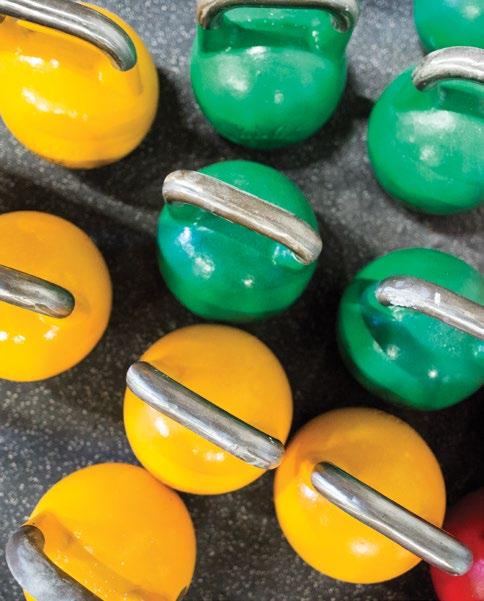
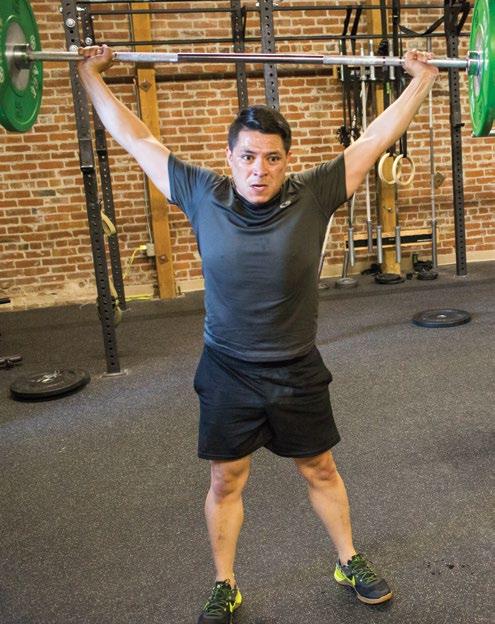
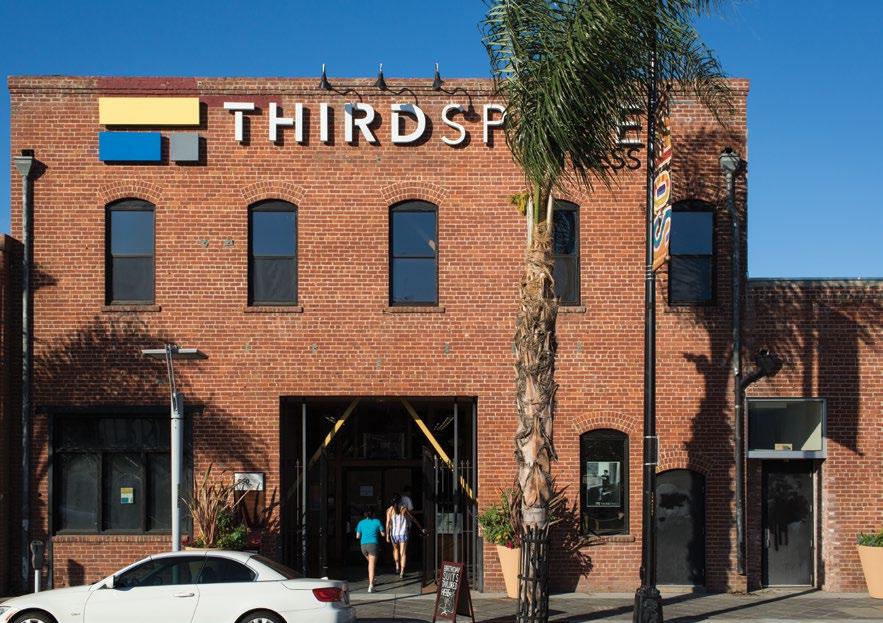
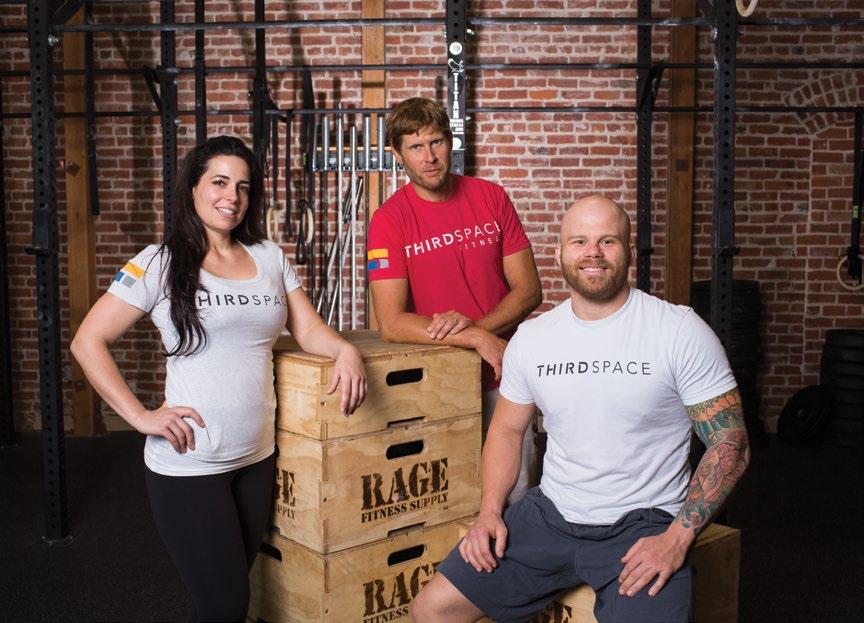
instagram: thirdspace_fitness twitter: thirdspace_fit
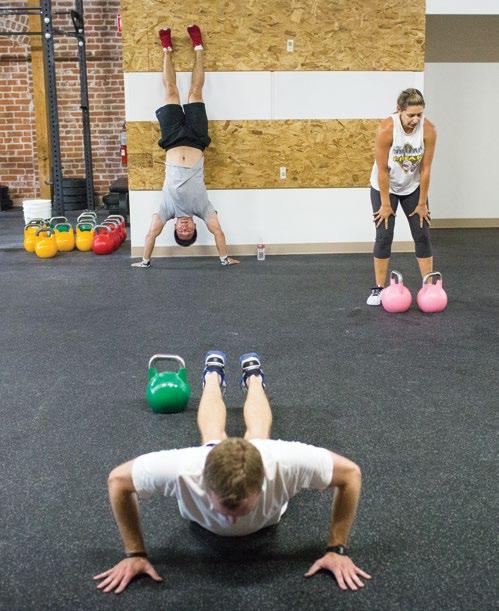

25
Co-founders Danielle Valley, Lance Miller, and DJ Downs
BISCOTTI
TURNING BISCOTTI FROM A NICHE SNACK INTO A MAINSTREAM TREAT
While words don’t make the food, if we’ve learned anything from the boomtown that is internet foodie culture, words can certainly point you in the right direction. So if you will, let me share with you what it’s like to eat butterscotch biscotti from Roxanne’s Biscotti, baker of what are sometimes called “the best biscotti ever.” You just might find yourself pointed in the direction of your next foodie find.
As soon as you slice open the cellophane, a sweet buttery perfume bursts into the air, enveloping you in the scent of an early morning bakery. Now, remove one perfect biscotto. Scattered across the surface of the biscuit are dots of almond and chips of butterscotch, and the biscuit has been individually hand-brushed between the first and second bake for silky smoothness.
With the first bite, your teeth crunch into the crispy outer layer, and you work the piece for a moment before you hit a soft point, driving your teeth through it to reach the pure satisfaction that is the softening and surrendering of the biscotto into flavor-filled crumbs. The interplay of the sticky sugariness of the butterscotch, the quiet nuttiness of the almonds, and the buttery bliss of the biscotto
itself results in a sweet bready aroma that fills your mouth and lingers like the ghost of a great beer.
Most biscotti do not taste like this. Most biscotti tend to taste one-dimensional, a bready bluster that’s too hard to be eaten without being drowned first in a cup of coffee—which is often the point of eating biscotti in the first place, to complement a cup of coffee. Nothing more.

Not Roxanne’s Biscotti. “People find my biscotti is crunchy and can be eaten as a cookie,” Roxanne says while explaining that no coffee, or any other liquid for that matter, is necessary for enjoying her biscotti. (Though when dunked in a nice tawny port or dessert wine, they can achieve a certain boozydessert transcendence.)
When I visited the commercial kitchen she owns, uses, and rents out to other local bakers in Morgan Hill, I caught her in between the first and second bakes of her biscotti—the point at which the biscotti have the chewy texture of a brownie. It became evident then that nurturing this softness during the second bake is what gives her biscotti their signature texture, one of the reasons for their popularity. “The texture is acquired by a careful balance of wet and dry ingredients, and special care while
Content Magazine Maker Series is curated by sjmade | @SJMade
Written by Kevin Biggers Photography by daniel garcia
mixing,” she says. “I use high-end, fresh, seasonal, and locally sourced products to achieve that great flavor. Nothing I use has been in cold storage or has preservatives.” Altogether, this is about a five-hour process of pouring, mixing, baking, cooling, slicing, baking again, and cooling again before packaging. It is a process that Roxanne has been developing and perfecting over the past 30 years.
In October, Roxanne became the very first maker to be featured in Whole Foods San Jose’s Made Right Here program—a program where Whole Foods selects a product, made by an exemplary local maker, to re-create in their own kitchen for largescale in-store selling. “I was excited to hear of the Made Right Here opportunity,” Roxanne says, “not only for the exposure but also for the challenge and creativity aspect.”
Challenge and creativity perfectly encapsulate
what Roxanne’s Biscotti has done and is continuing to do. As a zero-waste maker, Roxanne already sells the toasted ends of her biscotti, which most producers discard, and which have become an instant hit. In the future, she plans to debut her biscotti crumbs, made from the shavings of biscotti left aside after slicing, as an alternative to pie crusts or the bottom layer of cheesecakes, or as a snack to be eaten from the bag as is. On top of this, she’s currently developing savory biscotti, as well as expanding her line of granola mixes.
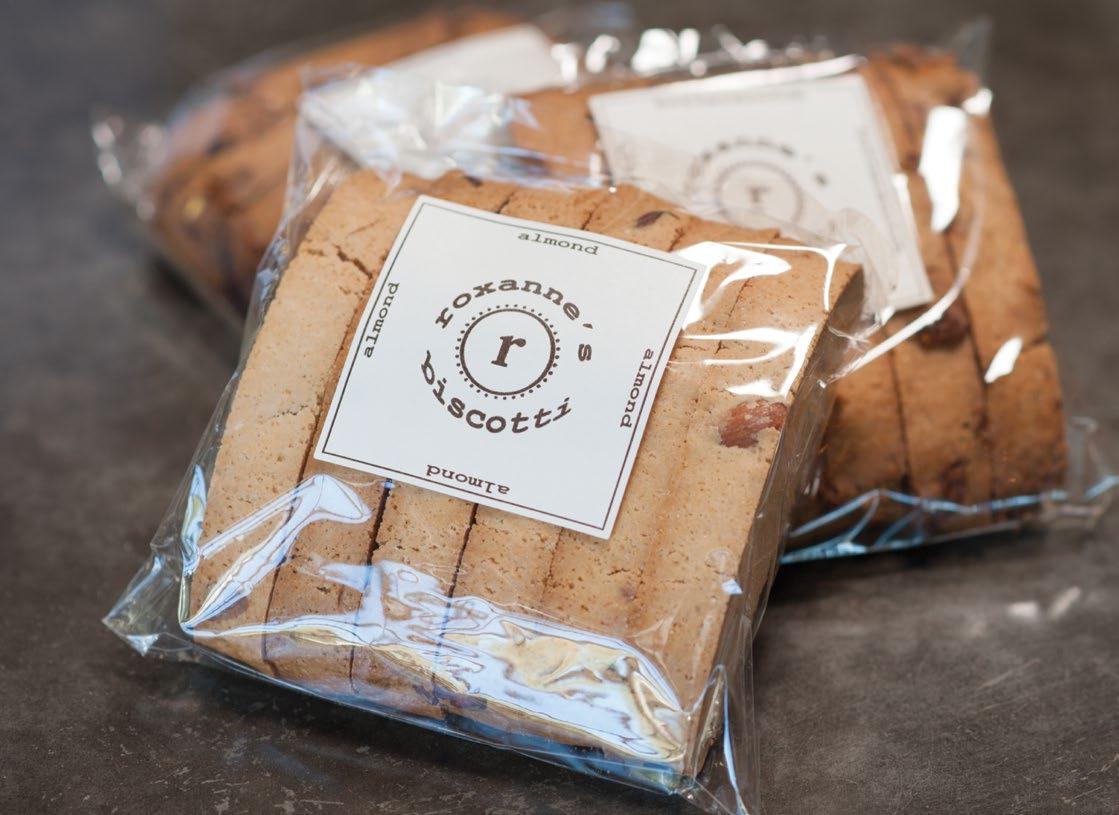
“Every day I look for inspiration in flavor combinations and new ideas,” Roxanne says. “Success starts with a delicious product, but you also have to believe in your product—which means knowing how great it really is—and be proud to share your awesome goodies with everyone.”
roxannesbiscotti.com
instagram: roxbiscotti
IN OCTOBER, ROXANNE BECAME THE VERY FIRST MAKER TO BE FEATURED IN WHOLE FOODS SAN JOSE’S “MADE RIGHT HERE” PROGRAM.
27
POKI BOWL
In a nondescript shopping center on Almaden Expressway at lunch time, a line of customers snakes its way through the parking lot. These people are waiting for a bowl of poke from Poki Bowl, a new restaurant with a large following gathered solely by word of mouth and social media. Since opening in July, owner Joey Nguyen’s fast casual restaurant (think Chipotle but with poke instead of Mexican food) has been a runaway success.
What sets his poke restaurant apart:

I think the biggest thing from our concept is you get to customize it. When I was in Hawaii, they made poke for you, you ate it the way they did it. I don’t eat spicy foods, or I don’t eat that much spice. For me, some of that stuff was way too spicy. Some days I wanted this. Ahi is the most used fish for poke, but I was like, “You know, I love yellow tail. I love taco with octopus.”
In the first week, I had customers that came back three or four times. When you go to the store and there’s a line, I can’t change the line, but I can make that experience from the time that you get your rice, your salad to the [time you get to the] cash register as fast as I can possibly make it.
On finally doing what he loves:
Somebody was like, “Dude, you kind of found what your passion was.” Food isn’t just about the product that’s in that bowl. It’s an experience. It’s how people receive it. There is that connection through food.
I really got to just float around and see what is going to make me happy, and really just be like, “This is what I want to do. Let me do everything that I think a restaurant should do. Let me give what I want as a consumer.” Because I’m a very critical consumer, too.
On his restaurant’s competition:
We’ve raised the bar. There is competition that’s coming into play. They better have a darn good image on social media. They better have a really cool looking storefront. They better have a phenomenal product. I want everybody that comes into this industry saying, “We better try to be better than this.”
On the biggest challenges: Work doesn’t stop when you close that door. I was up until three or four o’clock at night making schedules and
28
Interview and photography by Daniel Garcia
JOEY NGUYEN’S PASSION FOR POKE AND CUSTOMER SERVICE

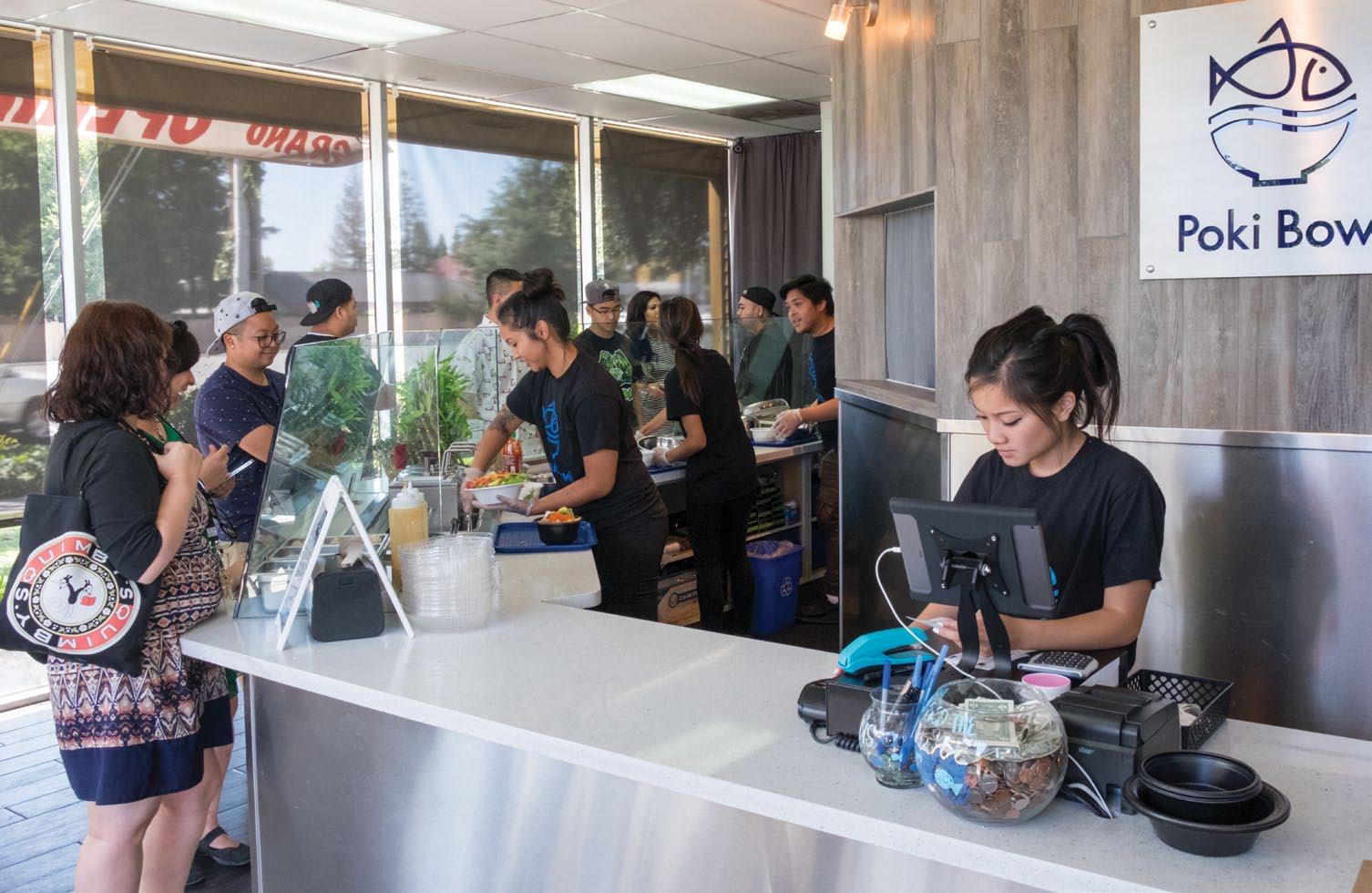
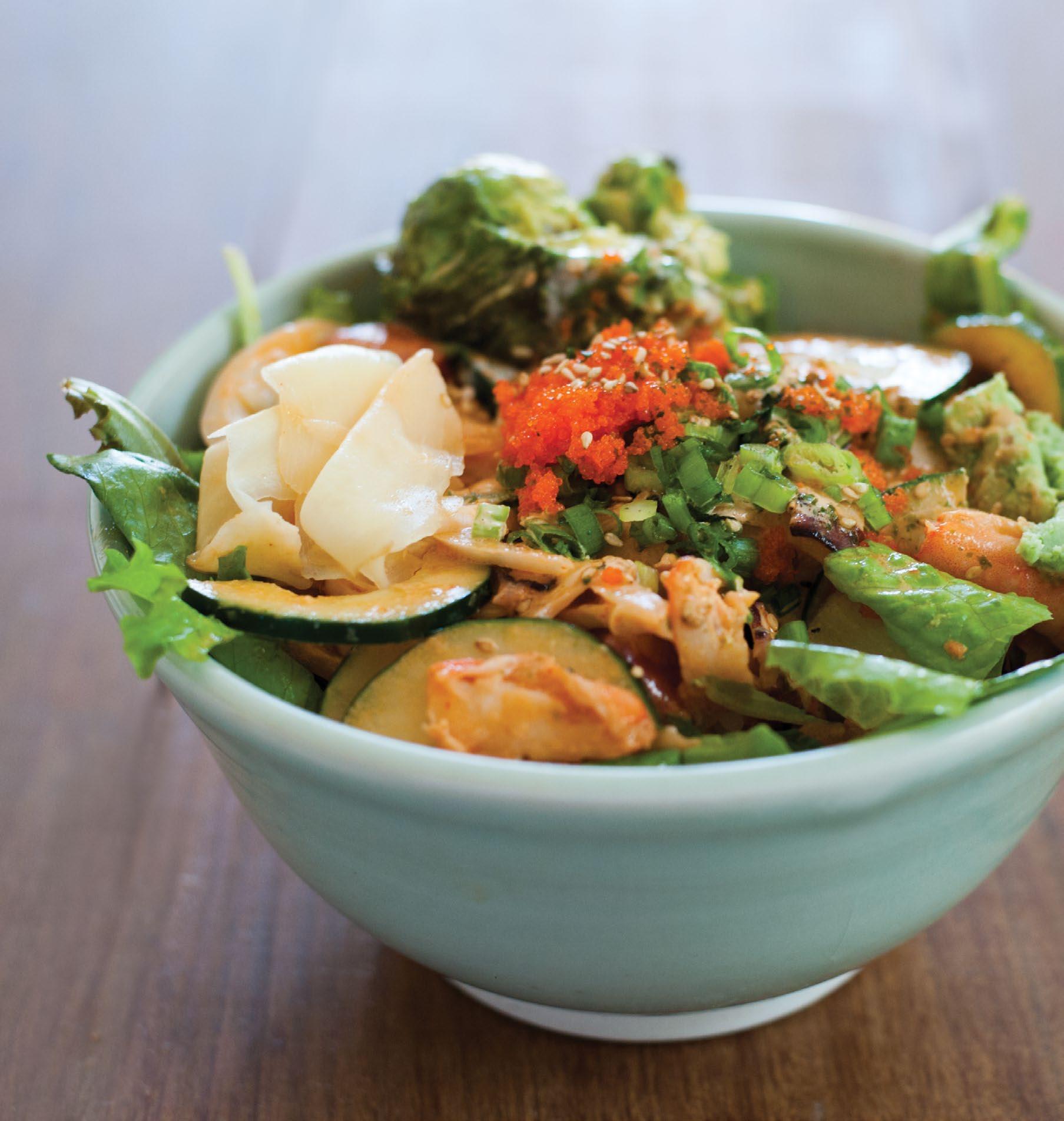
30
ordering food, and I got back in there very early. Some nights, I say, “Man, I wish it wasn’t that busy.” There was a line when we opened. There was a line an hour before we closed.
On his first few days of business: I had to close early on Friday. I was like, “We’re running out of fish. I need to prep for Saturday, because it’s going to be huge.” We ordered fish for Saturday and Sunday. It got delivered Saturday. We blew through probably 90 percent of what we ordered.
I didn’t have enough [fish] to open for Sunday, so I actually closed. I said, “You know what? I’m going to make an executive decision. I’m going to close it.”
I closed for four days. People were like, “What the heck?” I got one star reviews [on Yelp].
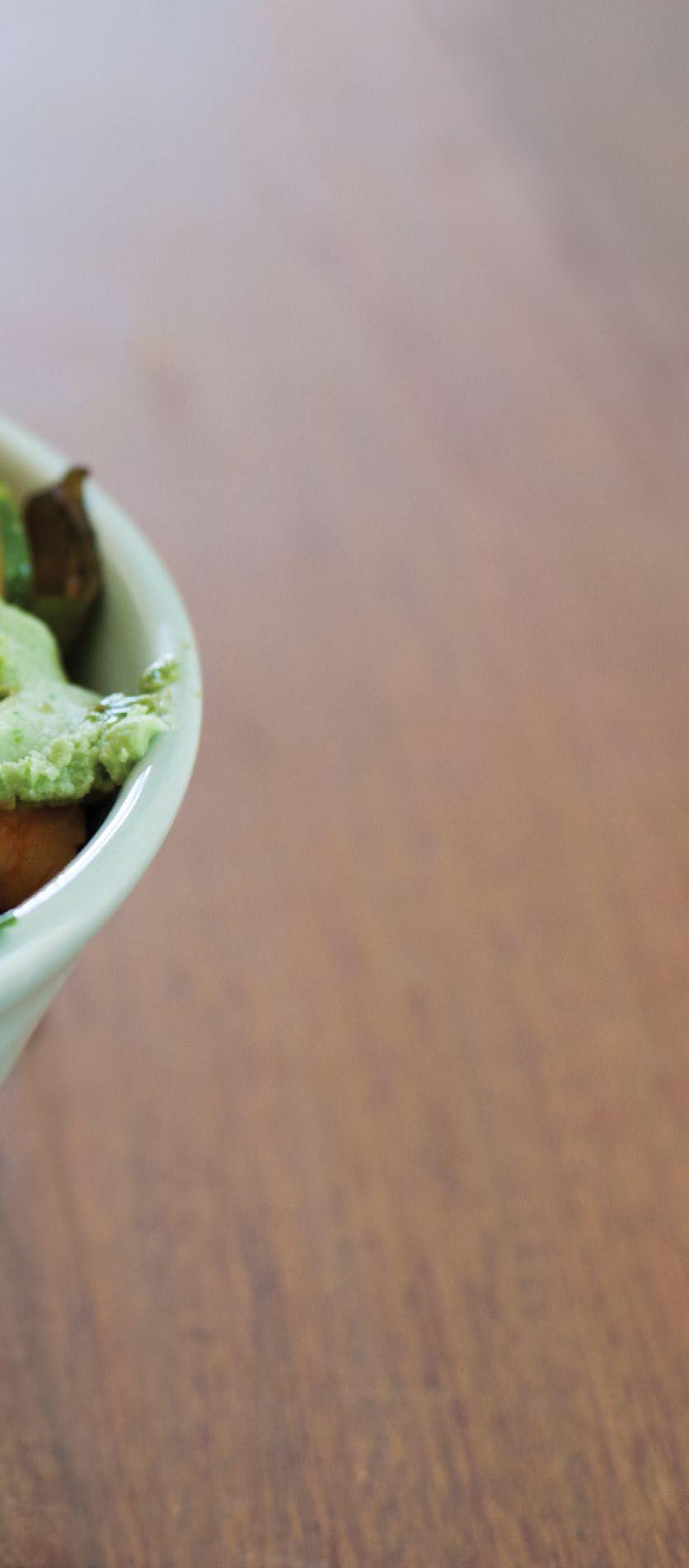
I think we were up front with it. That was a great thing, because in my mind, I knew what I wanted to achieve through social media. What I wanted to achieve through Yelp. We had 150 four-star reviews in 10 days.
On his definition of a successful business: [Success is] being happy. Obviously, you want that. I want to put out something that’s local, organic, sustainable, but what you realize is with these products, you have to get to a certain scale before you can get those items at a restaurant price.
Now I’m getting to the point where I can put out a product, invite all my friends, and say, “Hey, this is a great thing.” It’s not all about the money. Know what I mean?
31 PokiBowl.com 4750 Almaden Exp San Jose, CA 95118 530.430.POKI (7654) social media: pokibowl
“IN THE FIRST WEEK, I HAD CUSTOMERS THAT CAME BACK THREE OR FOUR TIMES.”
Uproar Brewing Company
A MALTY, REFRESHING, ALCOHOLIC UPROAR
 Written by kate evans Photography by Stan Olszewski
Written by kate evans Photography by Stan Olszewski
GOING TO LET THE GLOVES COME OFF IN TERMS OF CREATIVITY”
Mike Willaford is the Brewmaster, the creative force behind Uproar Brewing Company. As he shows the cavernous bare-brick space where the new brewery is slowly coming to life in San Jose’s vibrant SoFA district, his energy permeates the room. He gestures toward where the kitchen will be, walks along the chalk outlines that will soon hold stainless steel fermenters. Uproar Brewing might not look like much now, but the team behind it has big plans for its design, its place in the community, and, perhaps most importantly, its beer.
Ideally situated at 439 South First Street, Uproar is still in its construction phase, but it will be industrial chic, melding modern with handmade tables. It will have a taproom, a kitchen for creative small plates designed to be paired with what’s on tap, and a special events space where the team envisions pairing dinners.
Uproar Brewing Company’s future success seems guaranteed with the excellent team in place to guide it forward. Mike’s wife, Michele, the Head Brewer, is a stabilizing presence, offering her years of experience working in brew-pubs as well as her own ability to brew. In the perfect example of marital partnership, she is able to tell Mike that his idea for a smoked white chocolate blonde ale sounds ridiculous but is equally ready to admit that it is, in fact, delicious and that his creative concoction worked. Michele is classic and calm against Mike’s energy and imagination. Uproar will offer her own brews, carefully crafted with restraint and respect for traditions and spiced with her own hint of personality.
Steve and Christina Vandewater are the not-so-silent partners. Steve’s ponytail might be greying, but this guy knows good beer and knows what San Jose needs in a good brewery. The couple is helping to guide and build Uproar to fit seamlessly within the city’s culture while still causing a bit of a stir.
Grant Kjos, warm and genuine, is appropriately the man in charge of hospitality, while the final member of the family, Dietrich Wahlstrand, is managing Uproar’s food service and events. Seemingly by chance, or as Mike describes it, “an alignment of the stars,” these characters have all come together to combine their unique skill sets and their desire to pour San Jose the best damn beer she’s ever had.
Mike and Michele come from a proud Midwestern brewing and hospitality heritage but were eager to escape the cold winters of Minneapolis. It was there that Mike cut his teeth at major craft breweries—Surly Brewing Company, Lift Bridge, and Sociable Cider Werks. He started young, learning, drinking, tasting, experimenting, and building his knowledge base so that he knows what he likes and, more importantly, what just might work. With his own brewery, one that he and Michele have long been dreaming about and planning for, “things are going to get interesting.” He adds, “The beauty of this is that it’s an adventure.”
He feels the opportunities for creativity in San Jose are endless. Everywhere you turn, there’s a possibility. For example, Mike and Michele have an apricot tree in their backyard, so Mike is sure that there will be an apricot wheat lager on the menu this spring. He also happened upon a purveyor who sells hibiscus in bulk, and while he’s not sure yet how he might use it, he’s excited to let the ideas flow. “I’m going to let the gloves come off in terms of creativity,” he explains. He rattles off a few more potential and unexpected ingredients, including black pepper, bourbon, Grand Marnier, and tequila barrels for aging.
“I’M
33
__Brewmaster Mike Willaford
 Co-owners
Grant Kjos
Dietrich Wahlstrand
Michele Willaford
Mike Willlaford
Co-owners
Grant Kjos
Dietrich Wahlstrand
Michele Willaford
Mike Willlaford
Mike sees brewing as an art, a form of expression. He sees it as a chance to represent a sense of place, a sense of self, as well as a sense of collaboration. Each brew will have personality and a story behind it. It might be a brew that he has lovingly created with his wife, one that is designed specifically to pair with a dish whipped up by his soon-tobe-hired chef, or it might be a brew that came to him in a dream and incorporates lychees. He’s unpredictable in his combinations of flavors and his methods, but consistent in his knowledge of what makes a good beer. While Mike is confident in his talents, he won’t be brewing fantastical recipes just to prove he can. This isn’t about his ego—it’s about the artistry behind a good beer. “If it’s not good, I’m dumping the batch,” he says. “A bad beer gets dumped one of two ways: either I do it or the customer does it. I’d rather pour it out myself if it isn’t right.” Mike has enough professional experience and respect for his customers “not to put a train wreck on tap.”
Four flagship beers to be on tap are classics, the backbone of the brewery. The team envisions an oatmeal coffee stout, one that’s been perfected over time and has balance and warmth; a Midwestern-style IPA that eschews the Californian trend of excess hoppy-ness for a darker red, malty aroma; a blonde ale made from New Zealand hops with bright gooseberry flavors; and an ESB, Mike’s go-to home brew, one that is hearty and flavorful. The remaining eight brews will rotate, showcasing whatever Mike and Michele have created that day, week, month, or season.
Uproar will offer the excitement of diverse and extensive beer offerings while maintaining down-to-earth, approachable, and knowledgeable service. This is a place, they believe, that should feel comfortable, where you can ask the bartender for his advice on an order or even request a sample. It will be a warm, homey environment where you immediately feel like part of the Uproar family. In fact, the team invites all of San Jose to come watch their progress on South First Fridays—they are excited to meet their new city, as they prepare to open their doors for business this winter.
While the Uproar team spends a lot of energy dreaming up beer recipes, they perhaps expend more on imagining Uproar’s role in the SoFA district, San Jose, and the greater South Bay. The team specifically sought out a location that is part of an existing community, and according to Mike, the response has been overwhelming. Neighbors have become fast friends, other craft breweries have offered advice and support, and even the Downtown Association and City of San Jose have worked quickly and efficiently to help Uproar obtain the necessary permits and permissions.
The Uproar team is aware of the possibility for great things in their new home. One of the most important agenda items in their first formal meeting was to discuss the kinds of events they wanted to host for local charities. A big part of their mission, beyond providing excellent beer in a welcoming, stylish environment, is to support charities that are for and about their community.
When planning, strategizing, and dreaming about their brewery, one word keeps them all focused: finesse. Everything, from the brews to the pours, to the plates to the décor, to the welcome, should be done with finesse. According to this team, “Every day should be slightly better. We want to push every dollar so that we can give a little bit more. We want to make San Jose even better.”
Uproarbrewingco.com 439 South First St San Jose, CA 95113
uproarbrewingcompany twitter: uproarbrewingco 35
“EVERY DAY SHOULD BE SLIGHTLY BETTER. WE WANT TO PUSH EVERY DOLLAR SO THAT WE CAN GIVE A LITTLE BIT MORE. WE WANT TO MAKE SAN JOSE EVEN BETTER.”
instagram:
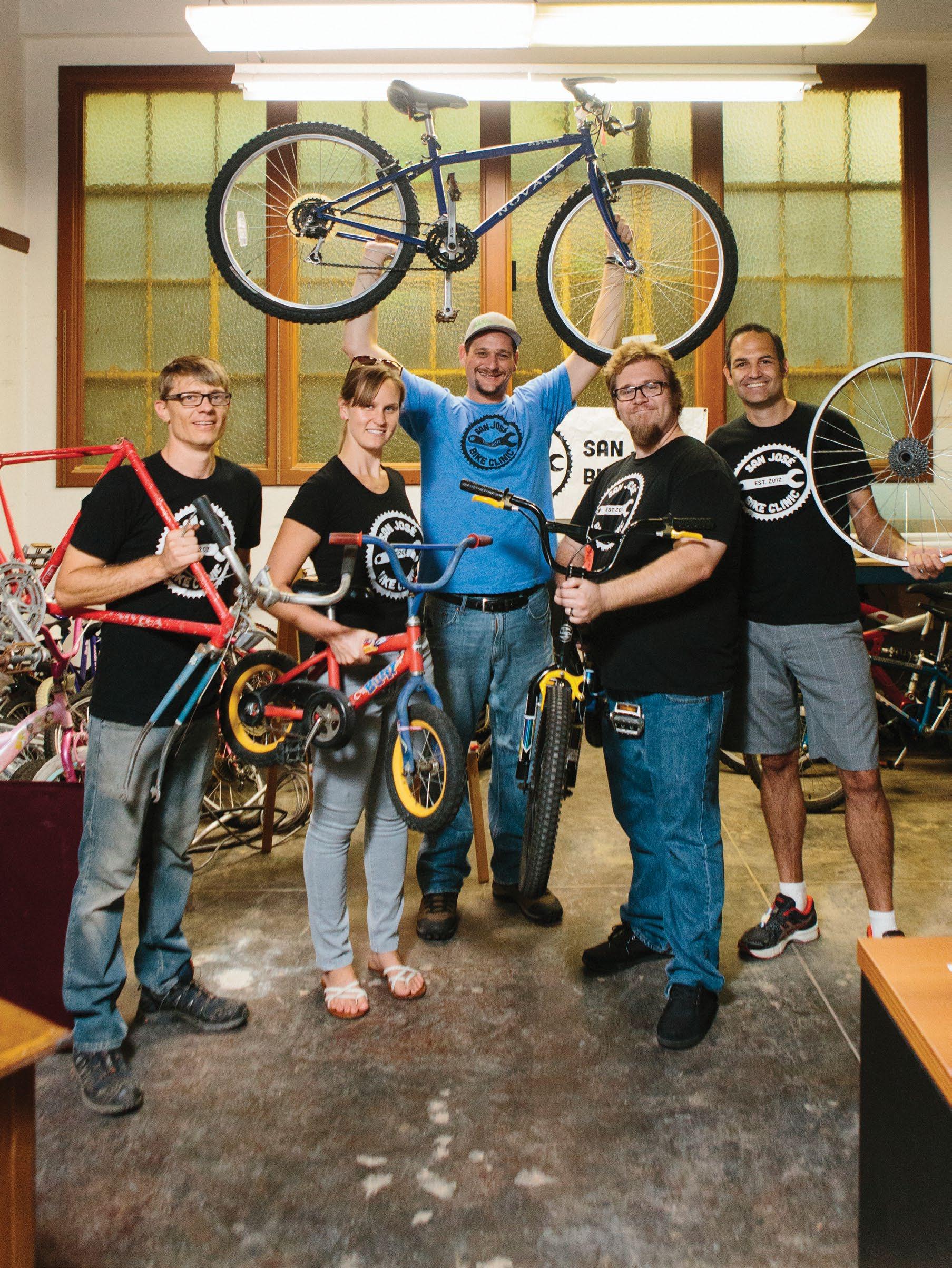 Co-founders Cody Kraatz, Angela Dube, Steve Barkley, Danny McCue, and Aaron Francis
Co-founders Cody Kraatz, Angela Dube, Steve Barkley, Danny McCue, and Aaron Francis
SAN JOSE BIKE CLINIC
When co-founders Steve Barkley, Aaron Francis, Angela Dube, Cody Kraatz, and Danny McCue met on Facebook, they didn’t know who’d posted the group “Does San Jose Need a Bike Co-op?” but it led to meetings, volunteers, collaboration with Silicon Valley Bicycle Coalition, a successful Indiegogo campaign, lots of sweat equity, and the September opening of a shop in downtown San Jose.
San Jose Bike Clinic provides low- to no-cost bicycle DIY repair workspaces, how-to classes, and pop-up services in economically challenged neighborhoods. Cody Kraatz explains how.
Phase I:
The Idea: Why did you think San Jose needed a bicycle co-op? At UC Santa Cruz, I rode my bike around campus, and they had a bike co-op there. A tiny little thing, and I volunteered. I’d tune up a bike or clean it up—really basic stuff. That was my introduction to the idea of a bike co-op and the idea that you could just volunteer some time and the more you give, the more you get out of it.
After I graduated, I went to work for the Community Newspapers. I knew Amy Frisch [co-founder of Veggielution] from Full Circle Farm, and at a San Jose Bike Party, I ran into her, I met my wife, Angela Dube, and I connected with the Veggielution people. Shortly after, I joined Veggielution as an AmeriCorp volunteer and then served on its Board of Directors.
In 2011, Angela and I did a cross-country bike tour. We biked from San Jose to Yellowstone to Denver, Detroit, Ontario, and then to Massachusetts and back. Having seen bike co-ops and bike culture in different parts of the country, I knew that they were in place and they were flourishing. Detroit, this dystopian place, has one and San Jose, one of the most innovative and richest places in the country? If Detroit has one, we should have one.
Phase II:
First Steps: Meeting Each Other and Scoping the Need We were complete strangers. We started doing this round of talking to people and had the very first meeting of the minds at my mom’s dining room table in Willow Glen. There were maybe 25 people there.
The big questions were: Should San Jose have this? Do we need this? Is this something worth doing and what will you do to make it happen?
From there we met with Good Karma Bikes, the Bike Exchange, Turning Wheels for Kids, and Silicon Valley Bicycle Coalition. These meetings showed us there was an unmet need in San Jose.
Phase III:
Finding an Ally and a Fiscal Sponsor
When Angela, Danny, Aaron, Steve, and I decided to form this organization, Corrine Winter [then Executive Director of Silicon Valley Bicycle Coalition] proposed that SVBC become our fiscal sponsor, rather than us going off and creating our own 501(c)(3). In exchange for us being able to use their nonprofit status, their insurance, accounting, and all of the backend stuff, they receive a small administrative fee. Having a fiscal sponsor enables us to focus on our mission and not worry as much about the administrative backend side.
Phase IV:
From Fledgling Programs to “Let’s get a shop!”
The phase after SVBC said, “You’re fiscally sponsored, go for it!,” was a long phase. We’d do a major event here and there and a monthly clinic at San Pedro Square Market. It may have been wiser for us to get a shop sooner, but we weren’t quite ready. We were still asking, “Does San Jose need this?” We just kept coming back to the answer “yes” and kept moving forward with baby steps.
Interview by Diane Solomon Photography by Scott MacDOnald
“A LOT OF IT FOR ME IS ABOUT THAT NEXT GENERATION. I DON’T KNOW WHAT THEY’LL DO WITH IT, BUT I KNOW IT WILL BE BETTER.”
COMMUNITY BIKE REPAIR
37
__Co-founder Cody Kraatz


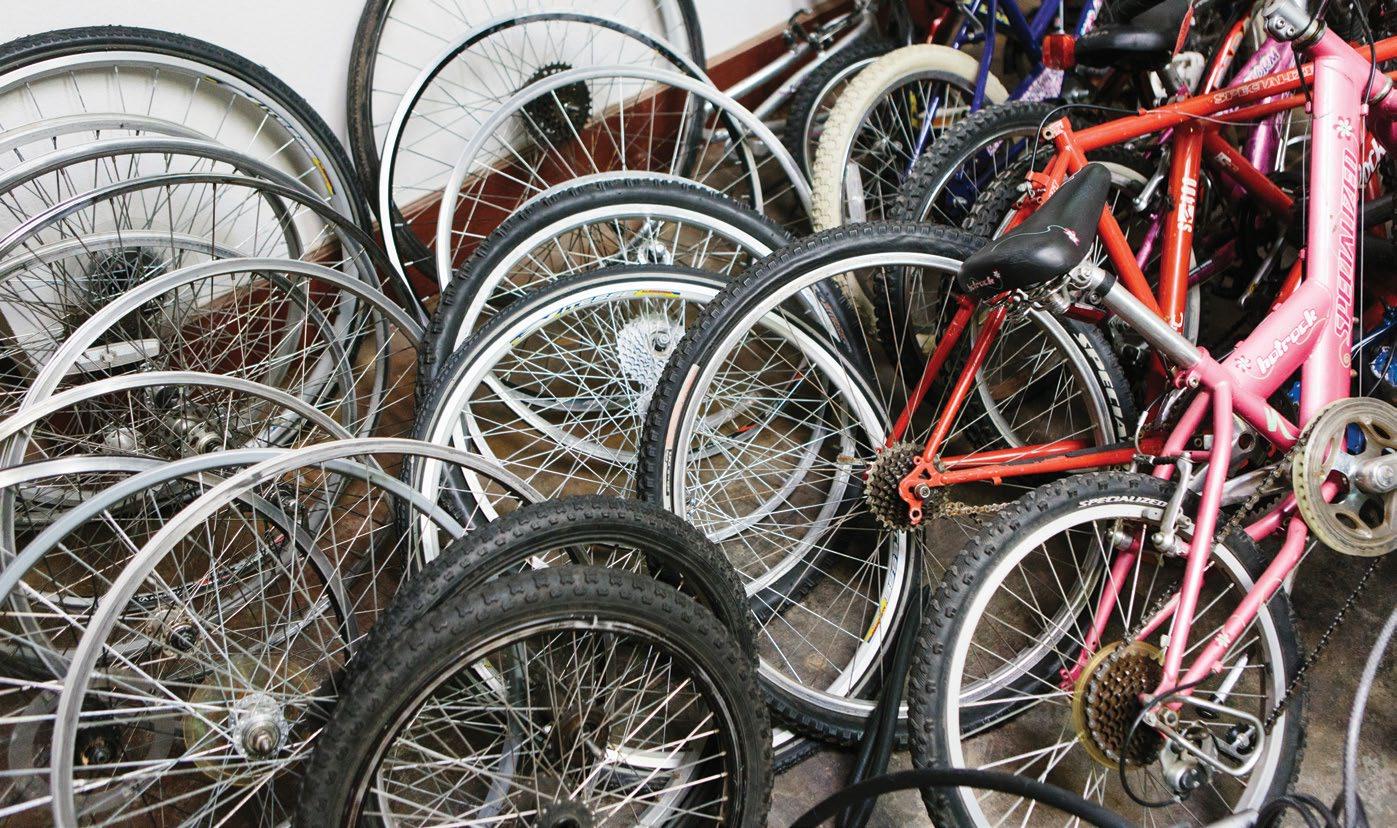
In November 2014, Cain Ramirez [Cowgirl Bike Courier] initiated the downtown pop-up shop. The Camera 12 space was technically Cowgirl Bike Courier and Bike Clinic. Cain did all of the paperwork and got it going. That really kicked off the “Let’s do it. Let’s open a shop” phase. Cain helping us get into that pop-up shop to test the idea for three months led us to the Indiegogo campaign and move-in team meetings.
Phase V:
Fundraising for a Spot Planning for the Indiegogo campaign started January/ February 2015. We launched it in April and wrapped it up in May. It wasn’t easy to do. We put a lot of sweat equity into it and raised over $5,000, which exceeded our goal. The downside of Kickstarter is, if you don’t hit your goal you don’t get the money. You get to keep everything you earn with Indiegogo.
You’ve got to have a community already and you have to activate that community well in advance. You email and speak with them; you have a Facebook page with a bunch of followers; you want to have a Twitter account and a video, which is an anchor to a crowdfunding campaign. You want to set a good goal that’s definitely attainable. Indiegogo says that you should be able to hit 30 percent of your goal, guaranteed, with people you know.
If I calculated how much we raised and how many hours of volunteer time were put in? The time spent was tremendous. But we were friend raising as we were fundraising, getting community buy-in and demonstrating to future funders that we have people who put their money where their mouth is. This continues to give us reassurance that this is worth doing.
Phase VI: Launched
The city of San Jose’s strategic plan, Envision 2040, and the Knight Foundation’s local focus are seeking to develop in San Jose the urban elements that make cities like Copenhagen, San Francisco, and Portland desirable places to live and work: accessible efficient public transportation, more walkable and more bikeable, and a hub for culture and innovation. Where does Bike Clinic fit in?
The really creative and hip and cool places that attract talent tend to have a bike co-op. They inspire creativity and doing-it-yourselfness. The people who avail themselves of bike co-ops and hacker spaces and maker spaces are the types that try to make things better. Having a space for different kinds of people coming together and meeting each other and building community—you never know what’s going to happen, you could meet your wife there. Companies start. Organizations like Silicon Valley De-Bug and Veggielution start all through happenstance and chance meetings. You can’t plan this stuff out.

But what Knight Foundation is doing and what Bike Clinic is trying to do, is build the space. You can’t control it too much. You have open hours, you have the wrenches, you have the stands, you have the volunteers, and then while we’re fixing up a bike, we’re getting to know some new people. We’re making friends and who knows what those friends will do?
Who knows what the teenagers that come in here will be like? I don’t know why this chokes me up so much, but a lot of it for me is about that next generation. I don’t know what they’ll do with it, but I know it will be better.
sjbikeclinic.org 19 North Second St Suite 101
“THAT WAS MY INTRODUCTION TO THE IDEA OF A BIKE CO-OP AND THE IDEA THAT YOU COULD JUST VOLUNTEER SOME TIME AND THE MORE YOU GIVE, THE MORE YOU GET OUT OF IT.”
San Jose, CA 95112
39
__Co-founder Cody Kraatz
AWE SOME
The Awesome Foundation is a global community advancing the interest of awesome in the universe, $1000 at a time.
The San Jose Chapter is but one of 82 around the world. Each chapter is fully autonomous, in charge of defining what “awesome” means to it. For us, an awesome project exists in the public realm and fills people with wonder, awe, and inspiration. It is about creating a memory that shapes the spectator’s relationship to, and image of, our city and makes them cherish the time they spend here.
We support awesome projects through micro grants, usually given out monthly. These micro grants come out of our “trustees’” pockets, and are given on a no-stringsattached basis to awardees. Founding members of the San Jose Chapter include Nicole Tindall (co-dean), María Gabriela Huertas Díaz (co-dean), Mark Haney (treasurer), Erin Salazar, Amy Anderson, Joe Noonan, Adam Mayberry, Andrea Diaz, Dorothy McClelland, Freya Seeburger, Jaime Fearer, Justin Triano, and Wayne Chen.
We all have long histories of being engaged in making our city better in one way or another. Some of us already collaborated in several projects before joining the AF, mostly through our professional endeavors. However, we all craved a platform where those people who had terribly great ideas, but who either had not had the chance or did not know how, could get involved.
And so, four months and many applications later we have chosen one winner, and we look forward to many more. We encourage everyone with a great idea to apply. The idea does not have to be big, but it must be creative. Think outside the box. Or inside. Or wherever in or on the box you need to think to come up with a unique project that improves everyday life in San Jose for all.
Photography by Daniel Garcia
Intro by María Gabriela Huertas Díaz 40
foundation | San Jose Chapter
María Gabriela Huertas Díaz Co-founder, Awesome Foundation | SJ

I remember the day I realized that the teeny tiny island in the middle of the Caribbean where I was born and raised was not the whole world, that there were millions of humans out there who did not speak Spanish and with whom I could not communicate. The anxiety that ensued from this discovery lit my passion for languages, cultures, and communication. I learned to speak English, Italian, and French, and eventually stumbled upon writing professionally. My goal as a writer is making wonkiness accessible to all demographics.
The Spanish poet Antonio Machado defined my life journey in his famous quote “there is no road, walker, you make the road by walking.” I never imagined being where I am today. I do not mean that in a presumptuous way. Rather, I mean that literally. I am still confused at the fact that I live in California, and that I do what I do. How did I get here?! I still remember the day I realized New York was an actual city where millions of people live, and not just a movie set. Unfortunately, that day was September 11, 2001—a terrible, terrible awakening.
Inside that island everything always felt a long way away. My passion for languages and culture meant I craved travel, living elsewhere, and emerging myself into different lifestyles. At the age of 17, I moved to the East Coast to attend university. In the seven years since, I have travelled to several countries and lived in Italy, twice.
twitter: MaGabsinHD
Mark Haney Co-founder, Awesome Foundation | SJ

Locally born and raised, I graduated from SJSU, and shortly after created thinkbiggersanjose. com—an urbanist blog about downtown San Jose. In addition to the blog, I have contributed to CONTENT for three years, writing San Jose history articles and “What If?” thought pieces that look at transforming the city into a modern, diverse place of innovation and intrigue. This year I transitioned out of work in the public sector, assisting the Knight Foundation’s San Jose Program Director, Danny Harris. In my personal life, my wife, Genny, and I have been married for nine years and are expecting our first child in early 2016. Genny and I enjoy taking walks with our three dogs—Slapshot, Charlotte, and Lily—throughout downtown and especially to Philz. For fun, I like to experience new foods and beers whenever I can. I am a die-hard hockey fan, and my favorite team is the Sharks. When I’m not with family and friends, I like to blog and Tweet about my downtown experiences.
thinkbiggersanjose.com
instagram: thinkbiggersanjose
Nicole tindall Co-founder, Awesome Foundation | SJ

Changing the world, one project at a time: I strive to live in a world where each day I spend my time combining creativity, innovation, and the human spirit to work toward a more awesome future. Volunteering with local organizations, including co-founding the Awesome Foundation in San Jose, has left me truly inspired by what we can create together. It is a delight to work with a team of trailblazing individuals to fund projects that inspire conversation and awe in San Jose, and this is just the beginning.
Exercising my curiosity, I am drawn to the unique culture that is created in each place. By encouraging creative placemaking and supporting social innovation initiatives in my hometown, I feel I am playing an important role in helping to build a vibrant Silicon Valley. My experience as a researcher, storyteller, and foresight practitioner has given me insight into what makes people and communities work; ever since I was young, I have been drawn to sustainable development and design. I believe that a strong creative community signals a sustainable and thriving city. I am proud to live in such a dynamic city as San Jose and to be able to add my voice to its multifaceted and perpetually transforming beauty.
You can find me out on the town supporting art and music, social innovation, urban planning, and anything that catalyzes human happiness and brings more awesome to the universe. See you out there!
twitter: wonderosity
BIZ PHASE
Whether you step out to make your hobby a career, bring an invention to market, or simply identify a market niche to fill, expect to go though what business leaders and researchers call the four phases of a business lifecycle. Each has its own set of challenges and opportunities.
In startup phase , you do it all. You run on adrenalin and the good will (and often money) of family and friends. Your focus is on customers and proof of concept. As demand grows, so grows your overhead and your need to have systems and people in place to support your growth phase. Life is getting more complex. And if you make it this far, you have plenty of customers and new markets to conquer, but not enough working capital. Cash becomes king in the expansion phase. If you successfully expand, you have funded your growth from within or have earned the “borrowing capacity” to meet the challenges of your success. You now have people to manage the people, you have systems to support your growth, and life is beginning to feel more manageable, but not as much fun. Until you realize that the maturity phase is fraught with obsolescence, competition, and a changing world that may push you right back into startup mode. Businesses live and die along this continuum of startup, growth, expansion, and maturity. But for those that live, they have conquered what academics call the “S-curve” and jump to their next phase of existence.
Photography by Daniel Garcia
Intro by Connie Martinez
Photographed at NExt Space | San Jose 44
NExt Space community
Pek Pongpaet Entrepreneur

After a decade and a half of working in the tech industry in Chicago, I finally decided to make the jump to Silicon Valley to see what all the hype was about. When I first arrived here, I had in mind to do a proper Silicon Valley startup, complete with VC funding and all the trimmings. I found a co-founder, built a product, and pitched to VCs. After several rejections, I decided to go back to what I do best: build digital products. This time, for other people. That’s how Impekable, a San Jose–based digital studio, was born.
Impekable started out three years ago purely as a design studio, but it’s now a thriving 15-person (and growing) virtual team, spread around the world, doing everything from app design and development to SEO services for companies like Discovery, Motorola, Accenture, Aruba Networks, Twilio, and LegalZoom. Unlike many small firms, Impekable has always invested in R&D and sees itself as an incubator of ideas. Rather than raising capital from angel and seed investors, Impekable uses a portion of the profits to fund its own products, such as Marquee—a gorgeous movie discovery app that was featured in Time the day after it came out.
twitter: pekpongpaet instagram: pek
Corina Mitu Marketing Consultant
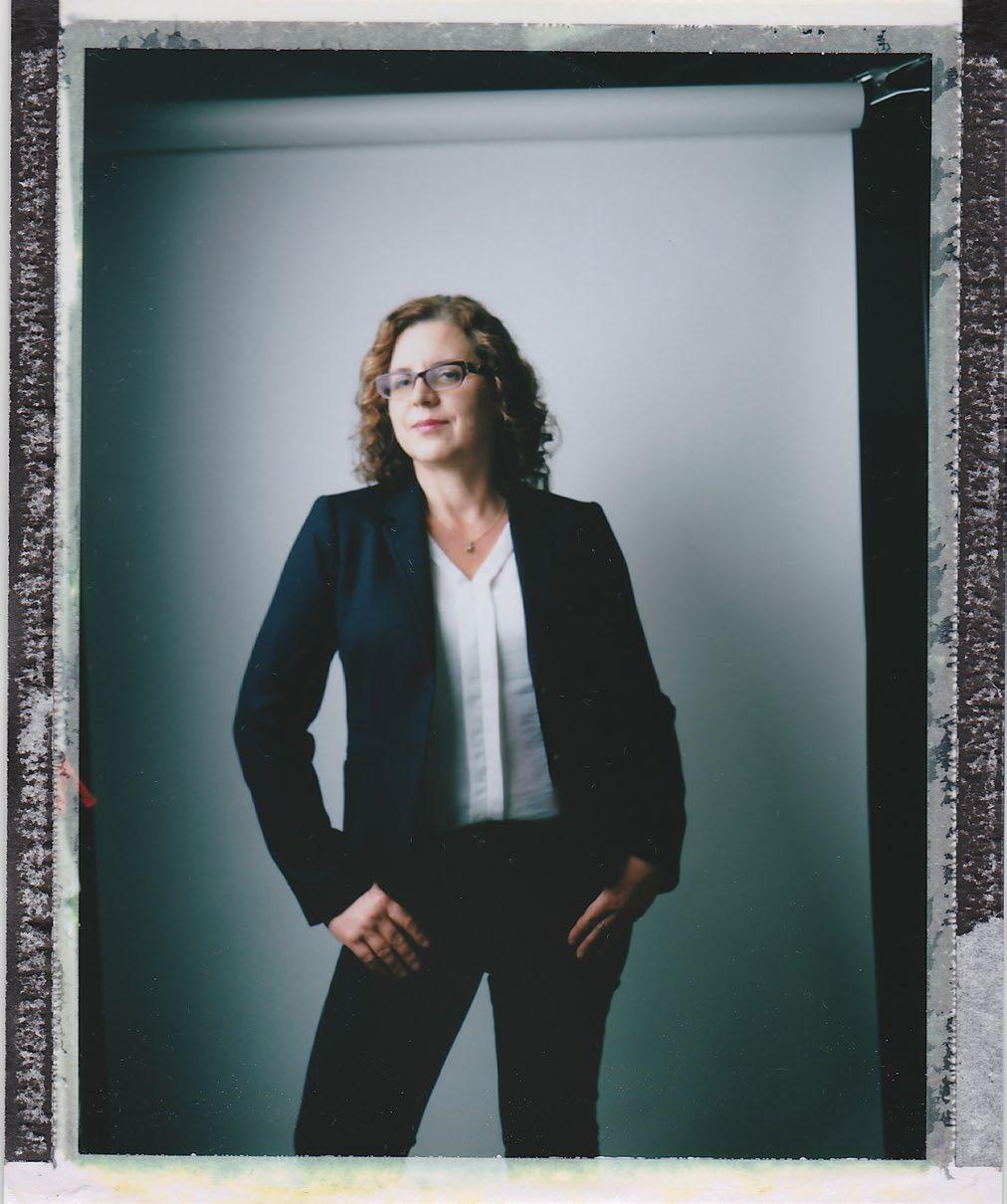
I’m a versatile marketer with a technical background, sales experience, an MBA degree, and a thirst for personal and professional growth. I am always looking at strategies, plans, and tactics with an eye toward integration: how to make all the pieces work together, how to more tightly collaborate, how to create synergies. I believe that to achieve great outcomes you need to select the right mix of digital and traditional channels and then deliver a consistent message across all channels so that each supports and reinforces the others.
After more than a decade of working in product and channel marketing in the high-tech industry in both the US and Europe, I decided it was time to start my own company. I’m in the starting phase of that project now. My aim is to create a thriving marketing consultancy or agency to help startups and small businesses clarify their marketing strategy, launch new products, and create integrated marketing campaigns that increase online visibility and brand awareness and generate business growth.
My focus since August has been on bringing this new business into being: crafting the strategy, creating a business plan, the website, and other branding elements. The work is both satisfying and exciting.
senergix.com
twitter: CorinaMitu
Mike Higuera App Developer
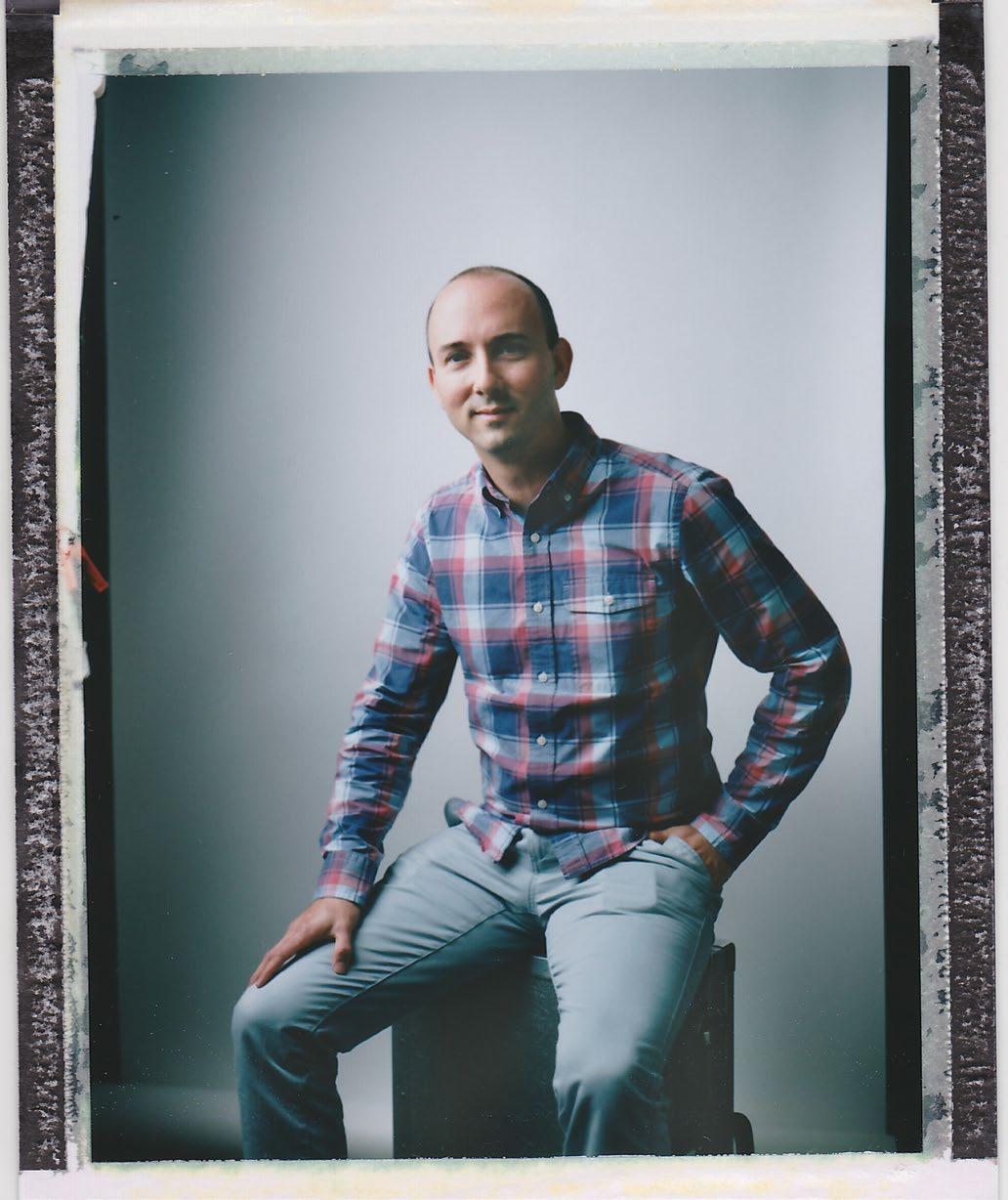
Just what the world needs, another food app! Or, to put it another way, the world needs another food app…seriously.
I wasn’t satisfied with the state-of-the-art food-discovery experience. It is noisy, and cluttered with information that I don’t need and don’t care about. So I’ve set out to build something different. Something simple, elegant, and entirely visual. Palate will show me amazing pictures of food at restaurants nearby, and then provide a way to get it. Even better, the experience will adapt to my tastes and preferences over time. A sophisticated machine-learning algorithm and loads of data drive the experience behind the curtain, but on the surface, it is just pleasure, adventure, and a dash of serendipity.
I have been bootstrapping the project for five months and am one month away from a beta release on iOS. My background is in software, but mostly of the dry corporate variety. I’ve had more fun building Palate than anything else in the last decade. The million-dollar question is when and how the fun will become profitable. Soon, I’ll be faced with the decision of continuing to bootstrap or seeking outside funding. So here I am, with an almost-complete product that will soon be dropped into an ocean of food-eating app users. If it floats, then I have a business to grow.
palatefoodapp.com
REDEMPTION
A Space for Ethical Makers and Buyers
 Written by Gillian claus Photography by Daniel Garcia
Redemption Boutique Owner Tammy Liu
Written by Gillian claus Photography by Daniel Garcia
Redemption Boutique Owner Tammy Liu
REDEMPTION
Redemption Boutique owner Tammy Liu has watched the items we buy become increasingly disposable. While a low-priced tee from your local big box might work as a one-off, she believes, a beautiful garment made by hard-working, passionate hands can become a keepsake to treasure forever.
Liu’s mother was a maker. When she and her husband moved to the US from Taiwan for her husband to attend college, they brought everything she had made with them: clothes, curtains, an entire household. They didn’t have the luxury of discarding their belongings to later replace them; nor could they ever replace what Liu’s mother had lovingly made.
When Liu was two years old, her mother made her a plaid velvet dress with lace tulle lining and a Peter Pan collar. Liu says, “The dress that my mom made me—it made my year.” Over time, Liu became more conscious of the meaning behind the items her mother made—this appreciation for scarcity became the root of her buying mantra.
Inspired by her mother’s craft, Liu’s been determined to work in fashion and open her own store since she was a child. After graduating from Cal Poly with a business degree, she began working in a small Bay Area–based boutique as a sales associate. She was soon managing several stores and ready to break out on her own.
“It had always been a solo mission,” says Liu. But then Liu spent a year in Australia, where she met Dave MacGregorScholes. Connected by their mutual love of “thrifting,” they discussed Liu’s ideas for her dream clothing store and expanded the concept into a lifestyle emporium, one that would promote quality over disposability and offer ethically, locally made goods instead of generic products.
Back in the US, Liu had to find the right location to make her and MacGregor-Scholes’s vision a reality. While Liu was considering how much capital would be required to launch a startup given pricey Bay Area rents, the downtown Campbell space practically fell into her lap: 1000 square feet of shop space in a prime location on Campbell Avenue.
Liu’s customers endorse her ideals and support local,
handmade goods. Says Liu, “The majority of my customers are just like me: 30-somethings who want to feel good about their purchases.”
Documentaries about poor working conditions in clothing factories inspired Liu to research production methods. Wanting to reach artists who could produce merchandise for her space, she started looking for creative craftspeople in California. “I wanted to design a collective space that showcases the talent all around us,” says Liu.
Liu made it her mission to personally meet every artisan and visit his or her workshop. By being selective, she hoped to find people who shared her passion for quality.
When she finally opened in May 2015, she had 40 vendors—now the total is closer to 60. Many of these artists donate a portion of their proceeds back to the community.
All of the bath and body products are fair trade; the display fixtures in the shop were made from reclaimed wood. The unfinished edges and stark geometric shapes echo the simple message of finding value in all kinds of materials.

During her thrift adventures in Australia, Liu developed an eye for good recycled clothing, too. “I don’t shop in department stores,” she says, “because I don’t want what everyone else has.” Her store features a section for recycled clothing that she’s sourced from antiques and estate sales. The racks are filled with men’s and women’s lines that are manufactured in California, using local materials and fabrics.
The positive response she has received from the community so far reinforces why she opened the shop. One customer emailed to praise her excellent sales associate. Liu laughed about this as she’s the only employee, working seven days a week.
The longer the shop has been open, the less research she has had to do. Customers bring in products and vendors. While Liu would like to take some time off occasionally to take her dogs to the beach or catch up on laundry, running Redemption has never felt like work.
“This is the happiest I have ever been,” Liu says. “I am exactly where I wanted to be.”
shopredemption.com . 241A E Campbell Ave Campbell, CA 95008 408.628.4877 shopredemption@gmail.com
“I WANTED TO DESIGN A COLLECTIVE SPACE THAT SHOWCASES THE TALENT ALL AROUND US.”

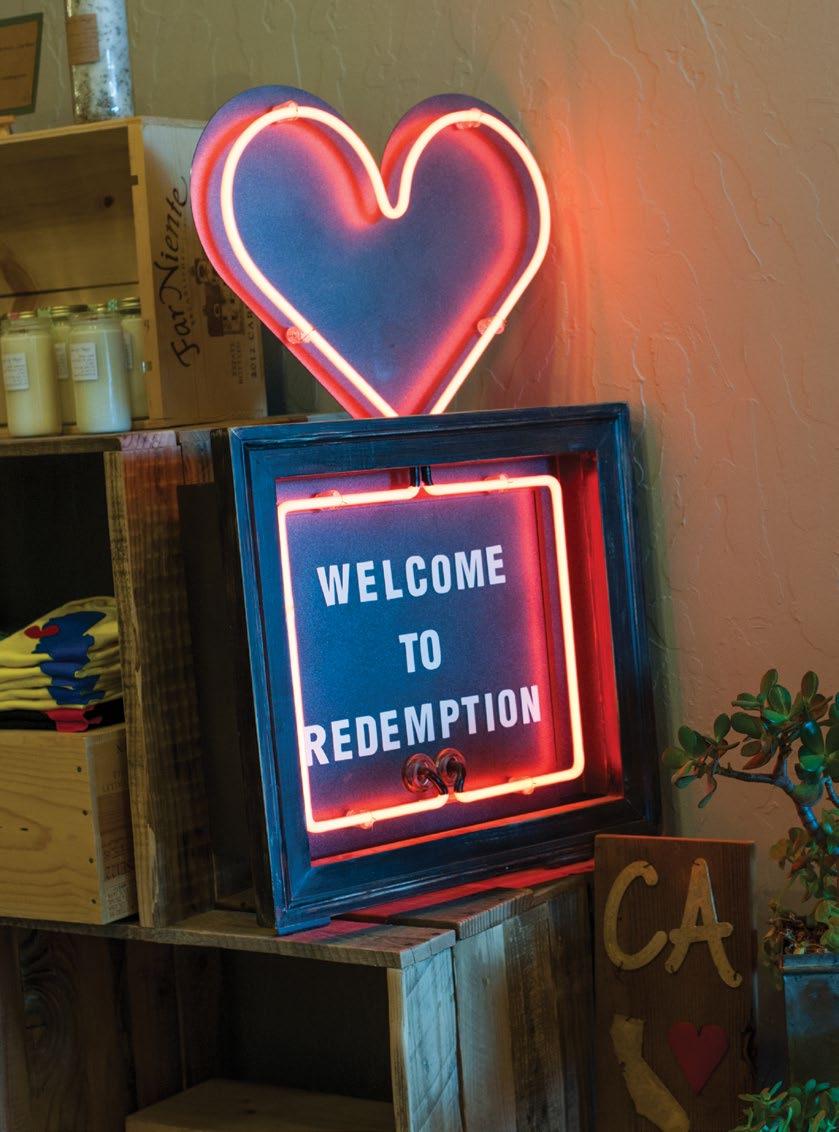
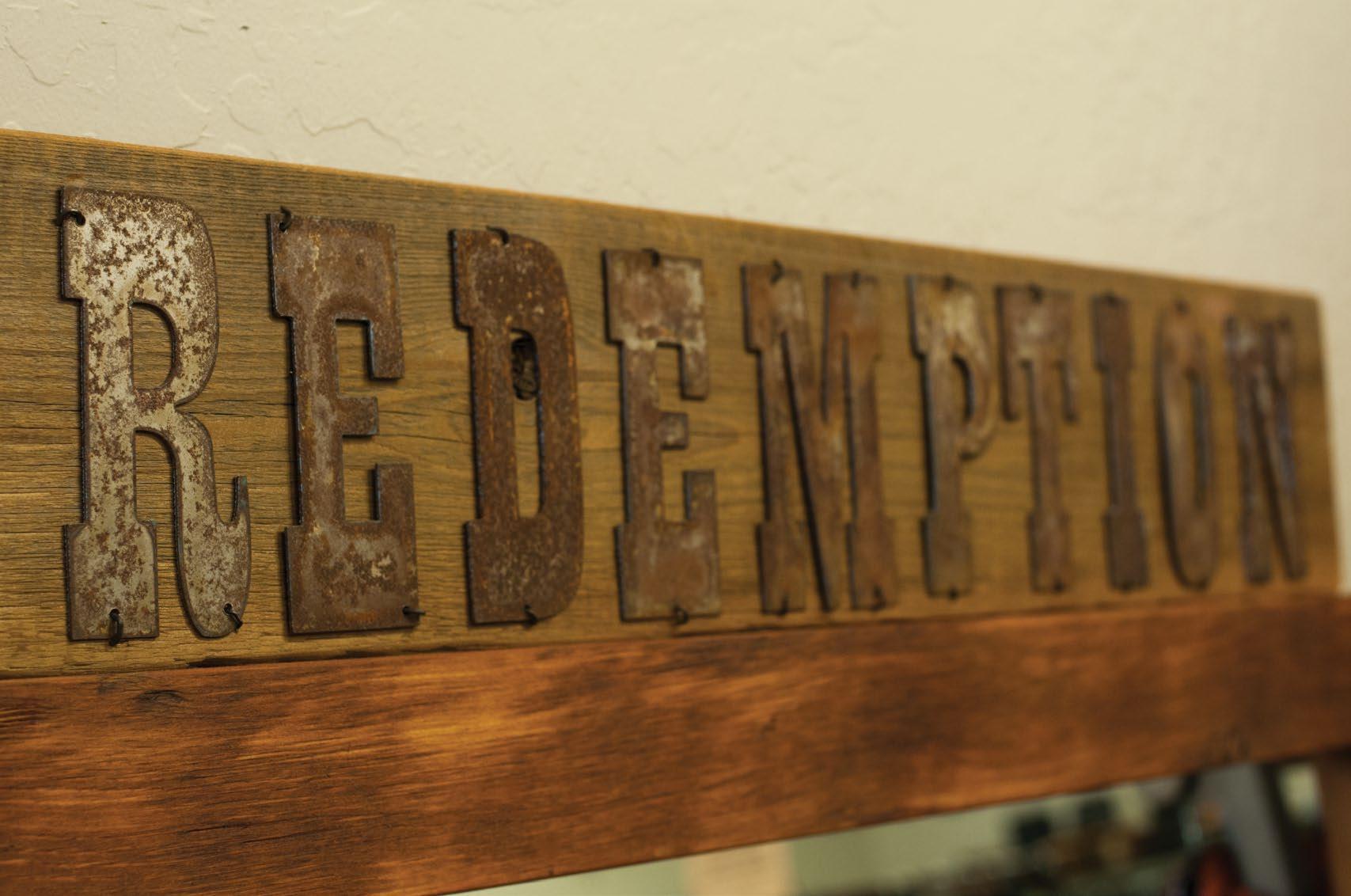
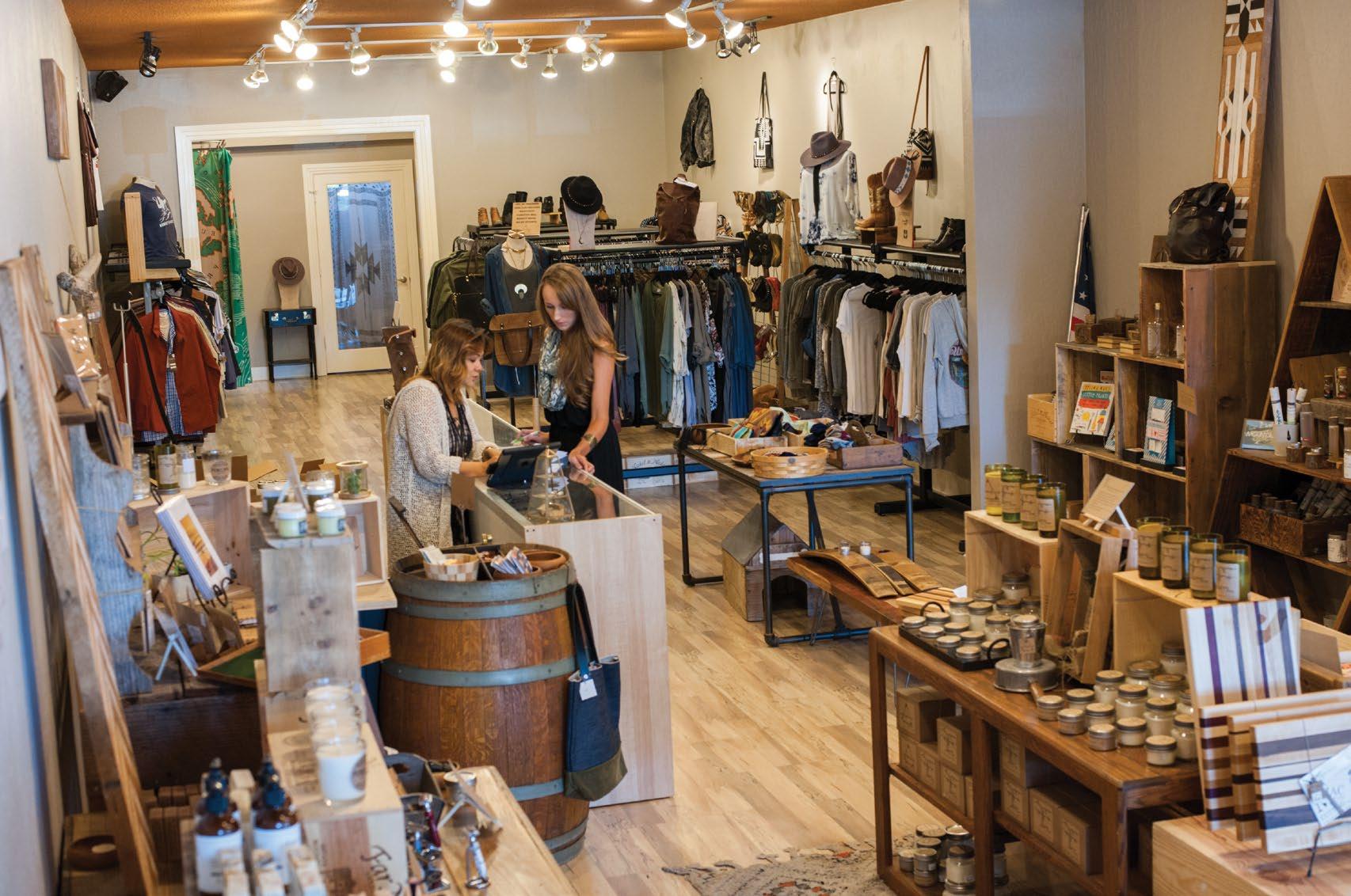
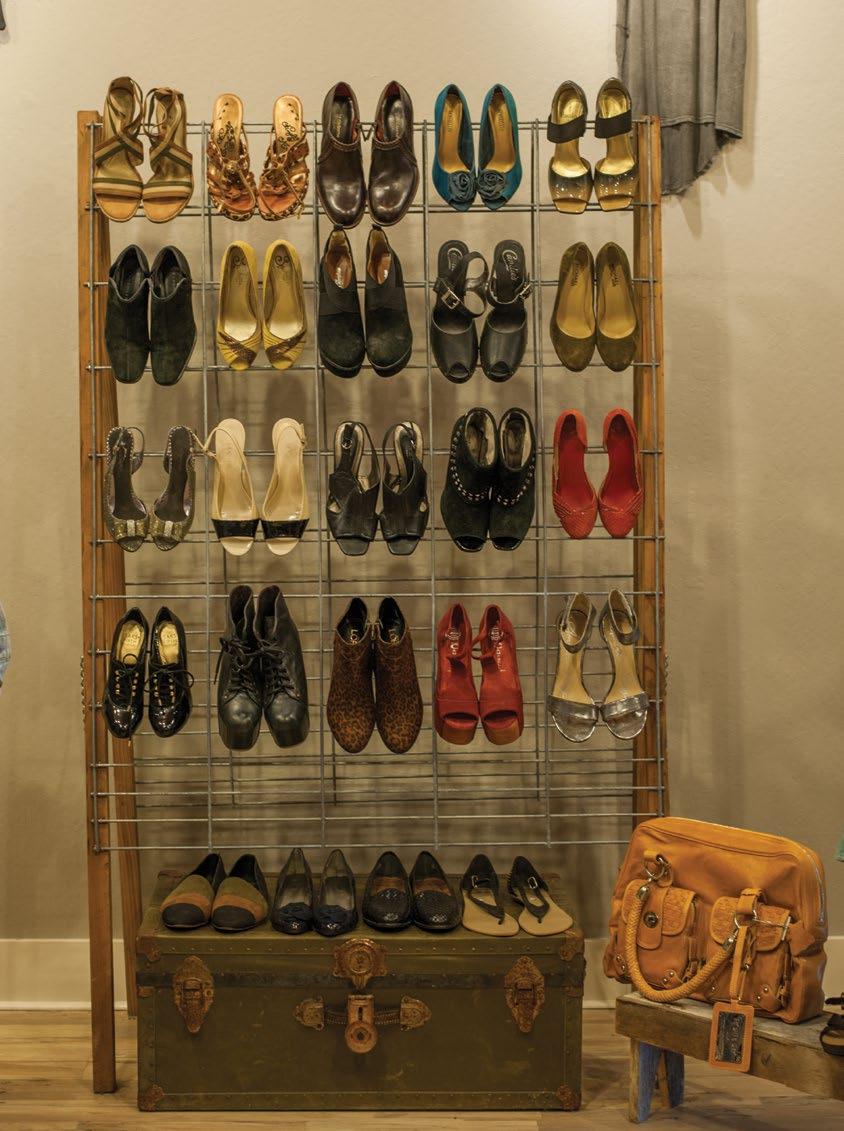
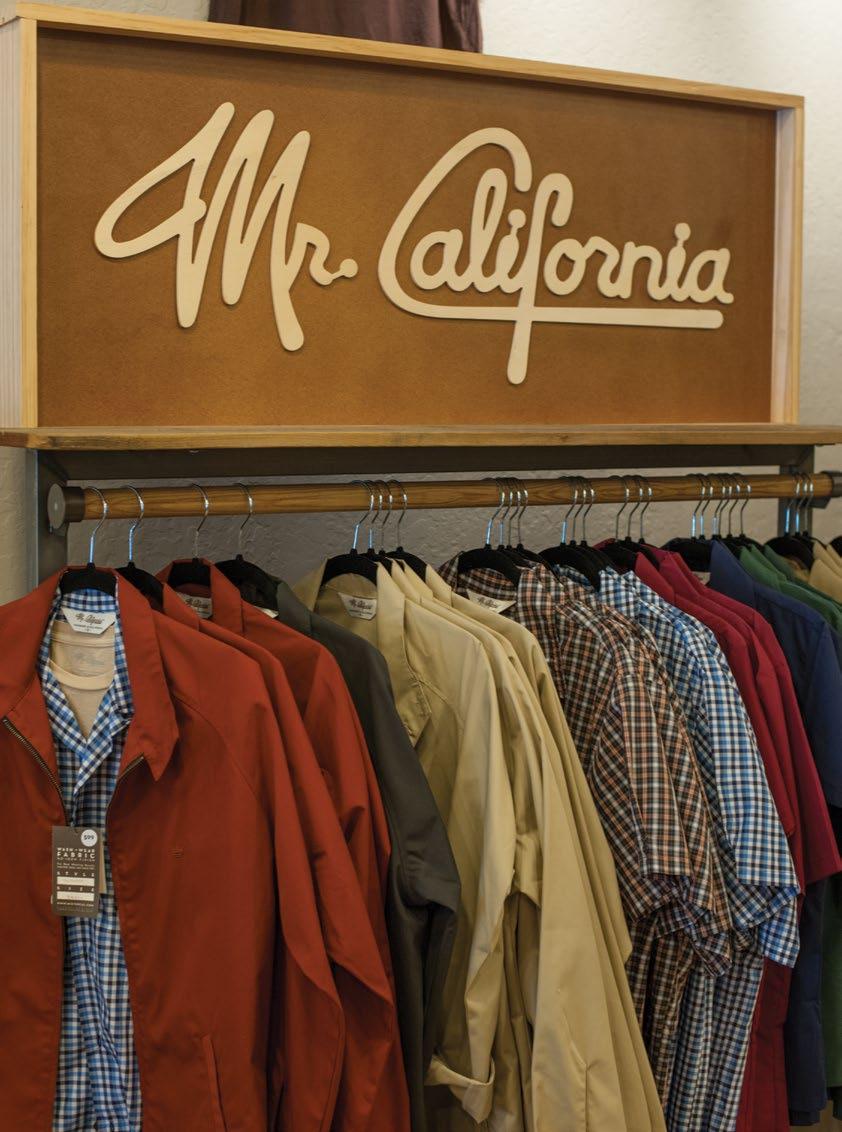

“Being from California is a big part of who I am as a person.”
MATT MAHOOD
Written by Michelle Runde Photography by daniel garcia
Matthew Mahood (pronounced May-hood) is native Californian to the core. As president and CEO of the San Jose Silicon Valley Chamber of Commerce, he takes great pride in what he has achieved for the city over the past four years. It’s no surprise he has accomplished so much: with years of management experience under his belt, Mahood is a natural at what he does.
Mahood is proud to be California born and bred. “Being from California is a big part of who I am as a person,” Mahood says with a smile. “My hobbies, my personal life— it’s all ingrained here.” It was while attending California State University–Hayward that Mahood took his first step into the professional world, working at a UPS store while also serving as Associated Students president at CSUH. Degree in hand, he remained at UPS for another 20 years, rising steadily through the ranks. Following UPS, he moved on to FedEx as senior manager of operations. Mahood credits the shipping business with teaching him much of what he knows today. “I was naturally good at managing people,” he says, “but it was there that I learned more about leadership, which is a core principle for good management.”
After seven years at FedEx, Mahood heard other opportunities calling, and it was time to move on. In 1999, he became vice president and general manager at the Webvan Group, a home-delivery grocery business based in Silicon Valley. At the time, Webvan was valued at $4.8 billion. Unfortunately, the money spent on infrastructure far exceeded actual sales growth, and the company eventually went under. It was the biggest dot-com bust in history. However, Mahood is pragmatic about it: “There are two things that I took away from my experience at Webvan. First, in business you must be nimble and agile in order to change your strategy and tactics in the blink of an eye to remain competitive. The world in which we operate changes quickly. And second, if you are truly doing what you love and working with people you enjoy—all the hard work, all the crazy long hours, all the middle-of-the-night conference calls, and even the failures—that makes it all worth experiencing…even if in the end things don’t go the way you planned.”
After Webvan, Mahood wasn’t sure what his next move would be. Then, opportunity came calling again in 2002, when a recruiter contacted him to ask whether he’d be interested in a position as president and CEO with the Sacramento Metro Chamber. And so Mahood moved his family to the capital to begin the next phase in his career.
Working at the chamber helped Mahood further develop his communication and leadership skills. While there, he joined the American Leadership Forum (ALF) and went through a yearlong program where people from different work environments— nonprofit, commercial, political—came together to learn from one another. “My time in Sacramento fortified things I thought I had already known,” Mahood reflects, “and made me value the ability to reach out across perceived political and social boundaries. I don’t necessarily have to agree with you on everything, but it still doesn’t devalue what you’re telling me, or whom you’re representing. It opened my eyes more to a leadership style that I wanted to utilize over time.”
53
As president and CEO of the San Jose Silicon Valley Chamber of Commerce, Mahood is no stranger to taking charge and orchestrating change.
Nine years in, Mahood felt his tenure in Sacramento had come to an end. He was eager to get back to his roots in the Bay Area, and his family wanted to return as well. Once again, fortune smiled. “When I heard the CEO for the San Jose Chamber of Commerce was retiring,” Mahood says, “I immediately set my sites on the position. The timing was perfect: I had just received recognition as Chamber Executive of the Year and was ready for the next step. So my family and I made the move.”
In 2011, Mahood accepted the position at the San Jose Silicon Valley Chamber of Commerce. His agenda is ambitious. “What I’ve tried to do is utilize the 20-plus years of experience I’ve had in the public and private sectors to help shape the organization to make sure that we’re relevant across different areas of focus. As a member-based organization, we want to show support for all [members], to build value for them. We also want to bring value to our community and make sure our engagement is around economic development. We want businesses to stay here, and we want them to grow and prosper here in this region,” he says.
The business of economic development, in particular, drives Mahood. “What I found when I got here,” he explains, “was that there was no single organization focused on economic development. Oddly enough for Silicon Valley, one of the most innovative, job-driven economies in the world, there was no coordinated strategy. Everything has been organic. That’s unusual for a region like this. Most regions sit down with committees and discuss things like ‘What are our competitive advantages?’ and ‘What do we need to do to grow that industry sector?’ Nobody’s been doing that here.”
One step forward is the new program named REDI (Regional Economic Development Initiative). It’s focused on the region’s competitive advantages, and what industry sectors the chamber can leverage around that. It’s still in its earliest stages, but Mahood is confident it will have a substantial impact: “REDI requires us to convene, collaborate, and ultimately as an organization, to champion some things on behalf of the community.”
One of Mahood’s areas of focus is bringing people to the table who might not normally talk to the chamber of commerce. He wants it known that the chamber is open to the private sector, the public sector, nonprofits, for-profits—to anyone and everyone who wants to be involved—with the hope that the chamber can provide value. “I want the light bulb to go off and for them to think ‘Oh, the chamber is relevant to me, they are engaging in areas that are important to me,’” Mahood says earnestly. “Along the way, we’ve had to engage a whole new set of volunteer leaders. We’ve hired new talent at the chamber. And in the process, my leadership style has evolved. I used to be much more hands-on: managing every little detail, especially at UPS and FedEx. I made sure every ‘T’ was crossed. Now I’m managing a smaller staff, and I empower them to pursue their fields of expertise. They know what they’re doing, I just get out of their way.”
There is much more to be done at the chamber of commerce, but that’s not Mahood’s only focus these days. “I’ve worked some crazy hours. But I understand now the importance of balancing life with work,” he says. “I have three children, and I missed a lot of my first two’s childhoods. Now I make being there for my youngest daughter a priority, whether it’s driving her to school, events, games, all that. They’re all so important to me. My work will always be here, but creating a balance between work and spending time with my kids, my wife—that’s so much more important to me now than it was 20 years ago.” Family man, president, CEO. Now there’s a résumé to be proud of.
“WHAT I’VE TRIED TO DO IS UTILIZE THE 20PLUS YEARS OF EXPERIENCE I’VE HAD IN THE PUBLIC AND PRIVATE SECTORS TO HELP SHAPE THE ORGANIZATION TO MAKE SURE THAT WE’RE RELEVANT ACROSS DIFFERENT AREAS OF FOCUS.”
54
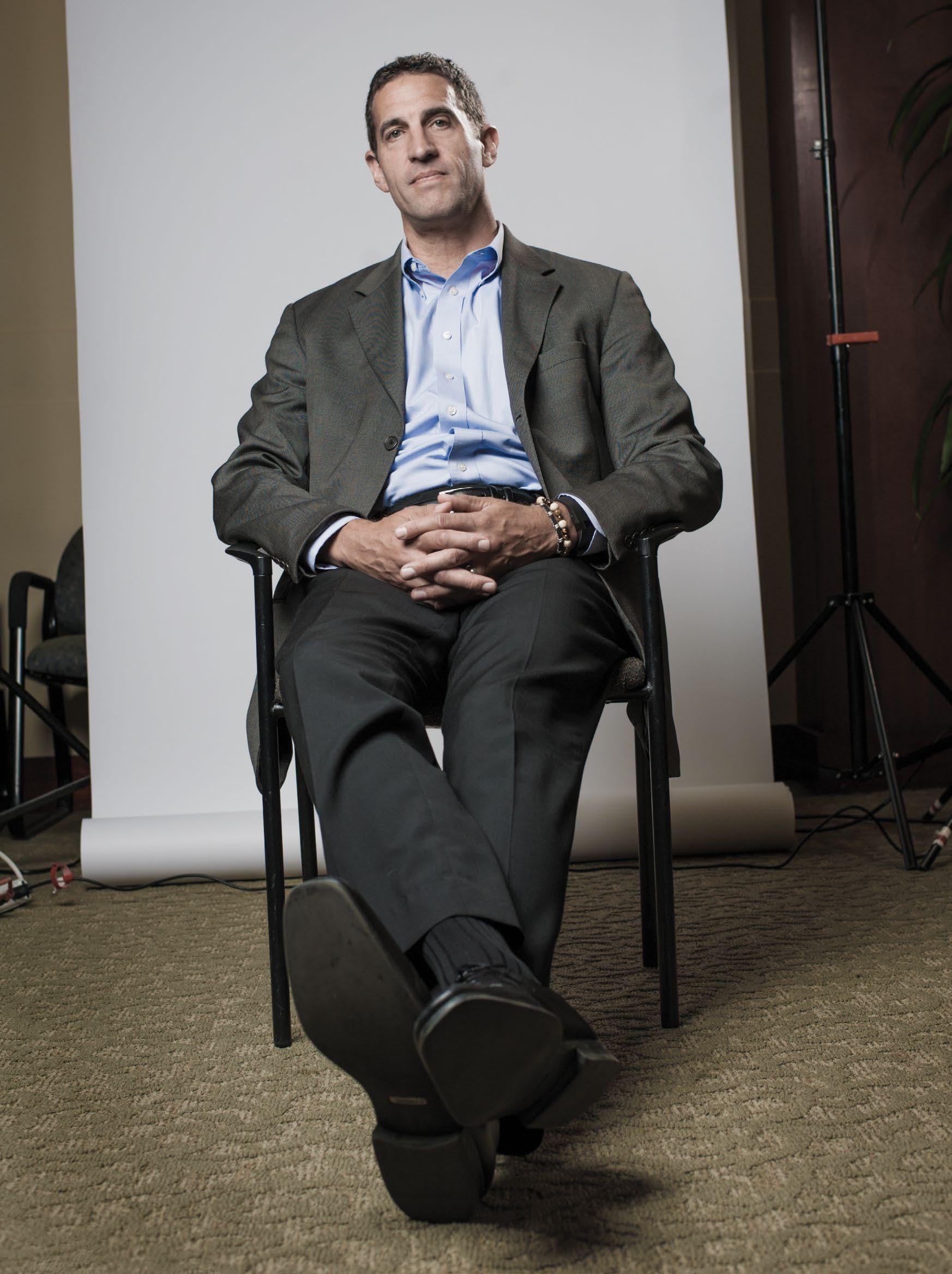
sjchamber.com.
ROAD TO COLLEGE
DOWNTOWN COLLEGE PREP
Written by Antoinette Siu Photography by Daniel Garcia
EDUCATOR AND ADVOCATE, JENNIFER ANDALUZ WANTS TO REFORM THE WAY SCHOOLS PREPARE STUDENTS FOR COLLEGE.
Astudent who once took little interest in school herself, Jennifer Andaluz ended up building a career around helping students pursue higher learning. Andaluz, executive director of Downtown College Prep, co-founded the public charter high school in 2000 to focus on college readiness for students who are the first to attend college in their families. In San Jose, the disparity between students who are ready for college and those who are not remains an enormous gap.
“I also am a first-generation college-goer in my family,” Andaluz says. “I wasn’t very connected to the idea of learning and education and school [while] growing up.” It wasn’t until she lived abroad in Spain during high school that she witnessed an environment where high schoolers worked hard and committed to doing well. “When I was there,” she says, “I sort of had a ton of heart for myself and started to think, ‘Hey, I want to learn more about the world. There’s a great big world out there.’”
So Andaluz returned from Spain, determined to go to college, and applied to colleges, only to find that she did not get accepted. Like many of the students at DCP, she didn’t have the standardized test scores or classes under her belt to apply to universities. She wound up at Cabrillo Community College before transferring to UC Santa Cruz, where she eventually found her way to teaching. “I decided it was time for me to get serious about learning,” she says. “I decided to really become a teacher mostly because it was the easiest way for me to keep learning. I felt like there was so much out there. I felt like teaching was also a place where I could do that and also really start to nurture that sense of learning and personal discovery in students. That’s why I pursued teaching.”
Before Andaluz and her co-founder had the idea to start
DCP, she worked for San Jose Unified School District. “I never thought that I would live and work in San Jose and become as committed to this community as I have become,” she says. Before she knew it, she was teaching at Gunderson High School and started noticing the kids who weren’t going to end up in college, whether it be due to family responsibilities, testing resources, or not knowing all the college requirements.
“There was a group of kids who were going to make it to college, either because they had the support of their families, because they had a particular mentor, because they had the right classes. And then there was a whole bunch of other kids, a vast majority of them, and they weren’t. They weren’t going to make it to college,” Andaluz says. “They hadn’t had their mind and spirit ready for the journey. They hadn’t really built that college-going identity.”
Along with her colleagues at Gunderson, Andaluz worked to try to change the school structure and prepare those students for taking on college. They tried extending the 54-minute school periods, starting literacy programs, and bringing more students into AP classes. Some of their efforts were met with success, while others gave them more momentum to start something new. At that point, Andaluz and her colleague Greg Lippman thought to themselves, “Let’s go and see if we can actually make a college-prep school for kids who are typically not thought of as college-prep. Let’s redefine what college-prep really means.”
They started off with creating a smaller school, focusing more attention on each individual student no matter what point in their college readiness they arrived at DCP. DCP’s approach to education, from the class sizes to the way the faculty, staff, and students speak to one another, revolves
56
“THERE NEEDS TO BE MUCH MORE TRANSPARENCY ON THE EDUCATION RESULTS OF THE K–12 SYSTEM.”
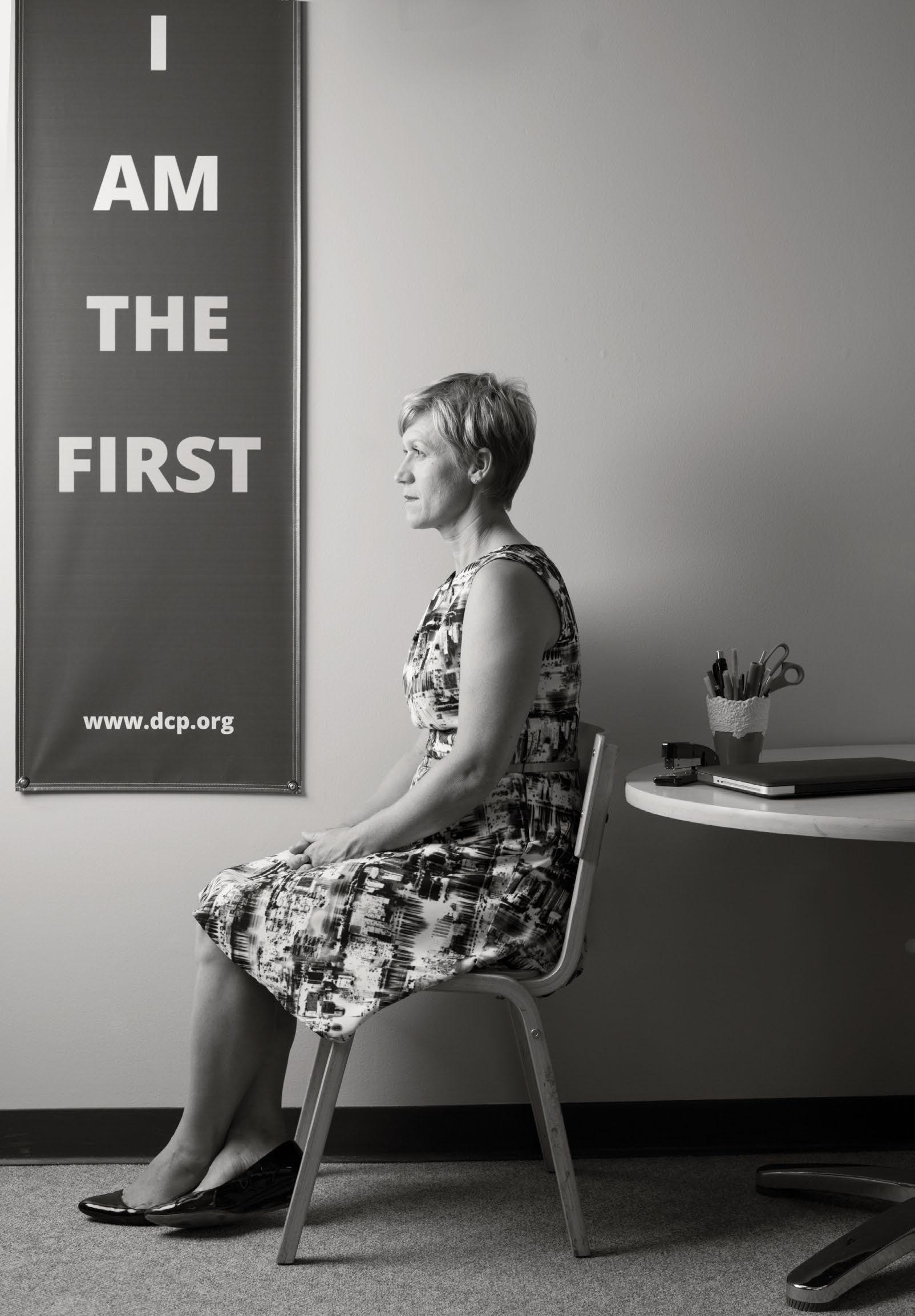
around building a college identity for students who never expected to have a next step after high school.

DCP has grown to four campuses and is on the way to opening at least two more middle schools in the future— but the charter school reaches well beyond its walls. It has made data on their students public for the past 15 years: acceptance rates, matriculation rates, whether students stay in college, and whether they complete college. “There is no data, national or statewide database, that’s tracking this,” Andaluz says. “There needs to be much more transparency on the education results of the K–12 system. We’ve really pioneered publishing that data, sharing what the findings are, specifically with first-generation students.”
“DCP’s power is not so much in how many schools we actually run. It’s in how many schools and districts and nonprofits we’ve really touched over the last 15 years, really sharing this body of wealth. That’s more of what needs to happen going forward. And fortunately, it is happening. There are dozens of charter schools, and if you look at their mission statements, they sound a lot like DCP’s.”
When it comes to schools, Andaluz believes the emotional and social needs of students typically go unseen. With the majority of students coming from low-income families, schools often have to become more than a school, offering a support system, longer school days, and financial aid advising. Twelve percent of DCP’s students are homeless, and many of their students assume the role of caretaker for their siblings while parents are working two jobs or night shifts; some students have their own jobs to help support family expenses. With all that in mind,
it becomes easy to see how first-generation students fall through the cracks in mainstream schools.
“School has to be a place where the student is being nurtured and the family is being nurtured on lots of levels,” Andaluz says. “I think the primary needs right now are for enriching after-school programming and extending the learning day, as well as fulfilling the social and emotional needs of the students. And if we think kids are going to get that somewhere else, they’re not. The school has to step in and recognize that the child’s academic wellness is second to his social and emotional wellness.”
DCP’s alumni speaker this year was from the class of 2005. Though bright, he experienced disciplinary issues that prevented his success in school. He didn’t end up finishing the school year. “I think in any other school, he would have been suspended and expelled,” Andaluz says. “We didn’t let him give up on himself, and we didn’t give up on him.” Through counseling and building trust, he eventually got through school and went on to graduate from UC Santa Cruz. He “wears suits and is a businessman now.”
“He’s a financial advisor, for God’s sake,” Andaluz reflects. “His story is what DCP is best at, and it’s really what schools need to become best at. Our schools need to be places where kids build their sense of confidence and purpose. When they do that, when we build those trusting relationships with adults, we’re going to see even better outcomes for kids.”
“THE SCHOOL HAS TO STEP IN AND RECOGNIZE THAT THE CHILD’S ACADEMIC WELLNESS IS SECOND TO HIS SOCIAL AND EMOTIONAL WELLNESS.”
58

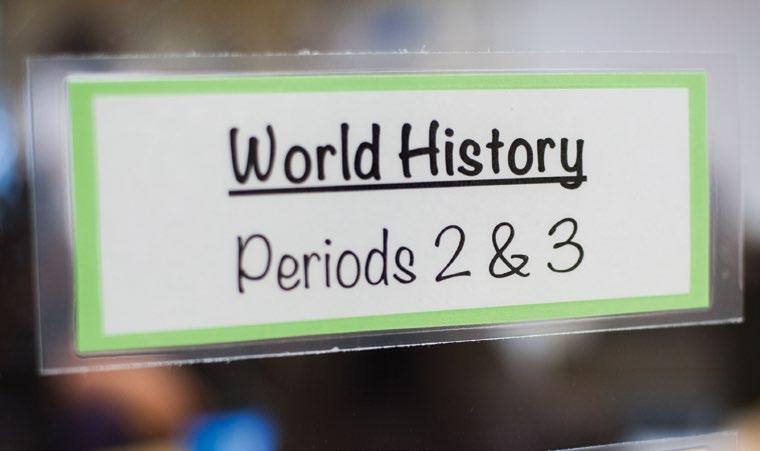

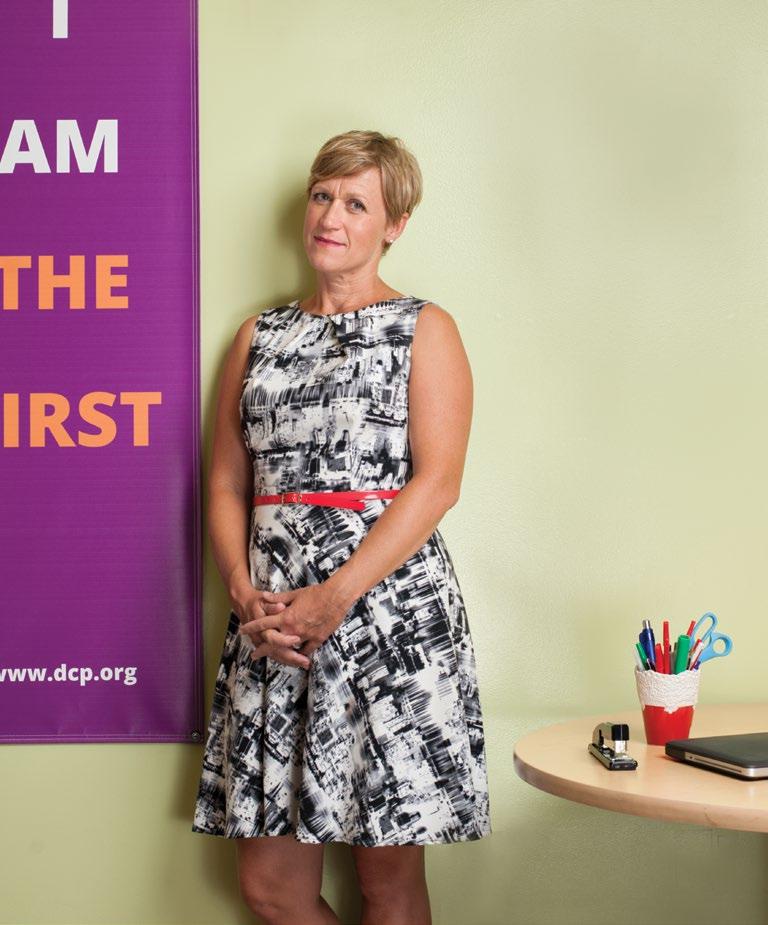
dcp.org Downtown College Prep 1460 The Alameda San Jose, CA 95126 59
ROCKBAR
Written by Anna Bagirov Photography by Daniel Garcia
LET THE GOOD TIMES (ROCK AND) ROLL
Rippling waterfalls over granite greet you as you walk into the RockBar Theater. Medieval gargoyles smirk, reaching out of red and black walls, bathed in blue and golden light. The stage is the size of Shoreline Amphitheatre, but the front-row audience sits within arm’s length of performers, close enough to reach out and touch someone. Performers are ferried to and from the airport in a black stretch Hummer limo embellished with flames; back at the venue, the six-foot custom-made dragon mascot “Spike” can often be seen stalking the aisles.
The vision of RockBar is that of owner Susan Cramer, whose tastes are diverse. “I like everything from Symphony to Slayer,” she says. Cramer understands the appeal of the dive bar—and the country club. “I do not want this place pegged as an ’80s rock club. Rock, reggae, fashion shows, comedians. We like it to be eclectic.” Indeed, RockBar has hosted both heavy metal bands and local opera singers. For the performers, in addition to the standard dressing rooms, there are showers, a weight room, and a soundproof green room. The performers are as appreciative of the RockBar’s many behind-the-scene amenities as the audience is of the presentation on theater and stage. RockBar was designed with the goal that everyone in attendance, patron and performer alike, experience the rockstar lifestyle.
The RockBar approach is possible because Cramer has hand-picked RockBar’s leaders, whose expertise is tenured and exact. “It’s imperative we get on the map,” she says. “San Jose is not San Francisco’s little sister.” The restaurant, which serves from morning until last call, was designed by a celebrity chef. You can dine at any time of the day, in any part of the venue. There is live music almost every night of the week. General Manager Graham Kimura is also a cocktail expert who hosts molecular mixology classes. His Bloody Marys, a favorite of retired martial artist Chuck Lidell’s, are an aromatic and spicy mix of 25 ingredients, garnished with a guitar pick and a Slim Jim stick. He has been known to experiment with liquid nitrogen and steaming flower water.
RockBar’s talent buyer, Jimmy Arceneaux, spent decades booking bands in the Bay Area, helping to discover some of today’s biggest names in rock and roll and alternative music. And the schedule has something for everyone. There are karaoke nights, women’s-only events, corporate mixers, and cover bands from every decade. Twice a year there is a demon rock-off, where guitar legends come and judge entries. Wednesday nights, local bands compete to win slots to open for world-renowned artists.
The Vodka Bar—lovingly nicknamed the “Game of Thrones” room—is a cross between a millionaire’s Aspen ski lodge and a rockstar’s luxurious living room, and it features over a hundred types of vodka. The room is crowned by a majestic, feathery red maple–leafed chandelier, and filled with pillowy velvet armchairs and sofas in which to sit, eat, drink, and kick back. “There is such a comfortable vibe here. We treat everyone like family. You don’t feel this at the Warfield or the SAP center,” Kimura says. People can come in for lunch with co-workers or dinner with friends and stay for a show, play pool, and hang out. “It was not easy to create an atmosphere both neutral enough and appealing enough, but we did it,” Robert Farrell, director of operations and Cramer’s husband, adds.
There’s something else that’s very special about RockBar that you can’t find in an arena theatre. “You never know who you are going to run into at RockBar,” Cramer says smiling. “One night,” Arceneaux reminisces, “a man said ‘Is that f-cking George Lynch at the end of the bar?!’”
The allure and accomplishment of RockBar is that you can walk in any way you choose—in ripped jeans and a T-shirt, hair sculpted into a Mohawk, or wearing high heels, a dress, and lipstick—and feel completely at home. You can order a rib eye steak or macaroni and cheese, a beer or the “Goblet of Rock,” a signature four-liquor cocktail from which lazy dry-ice smoke drifts. You can be who you are, get what you want—and catch a live show. It’s no wonder the staff call RockBar “The Rock and Roll Disneyland.”
60
THEATER rockbartheater.com instagram: rockbar_theater twitter: rockbarSJ
“I DO NOT WANT THIS PLACE PEGGED AS AN ’80S ROCK CLUB. ROCK, REGGAE, FASHION SHOWS, COMEDIANS. WE LIKE IT TO BE ECLECTIC.”

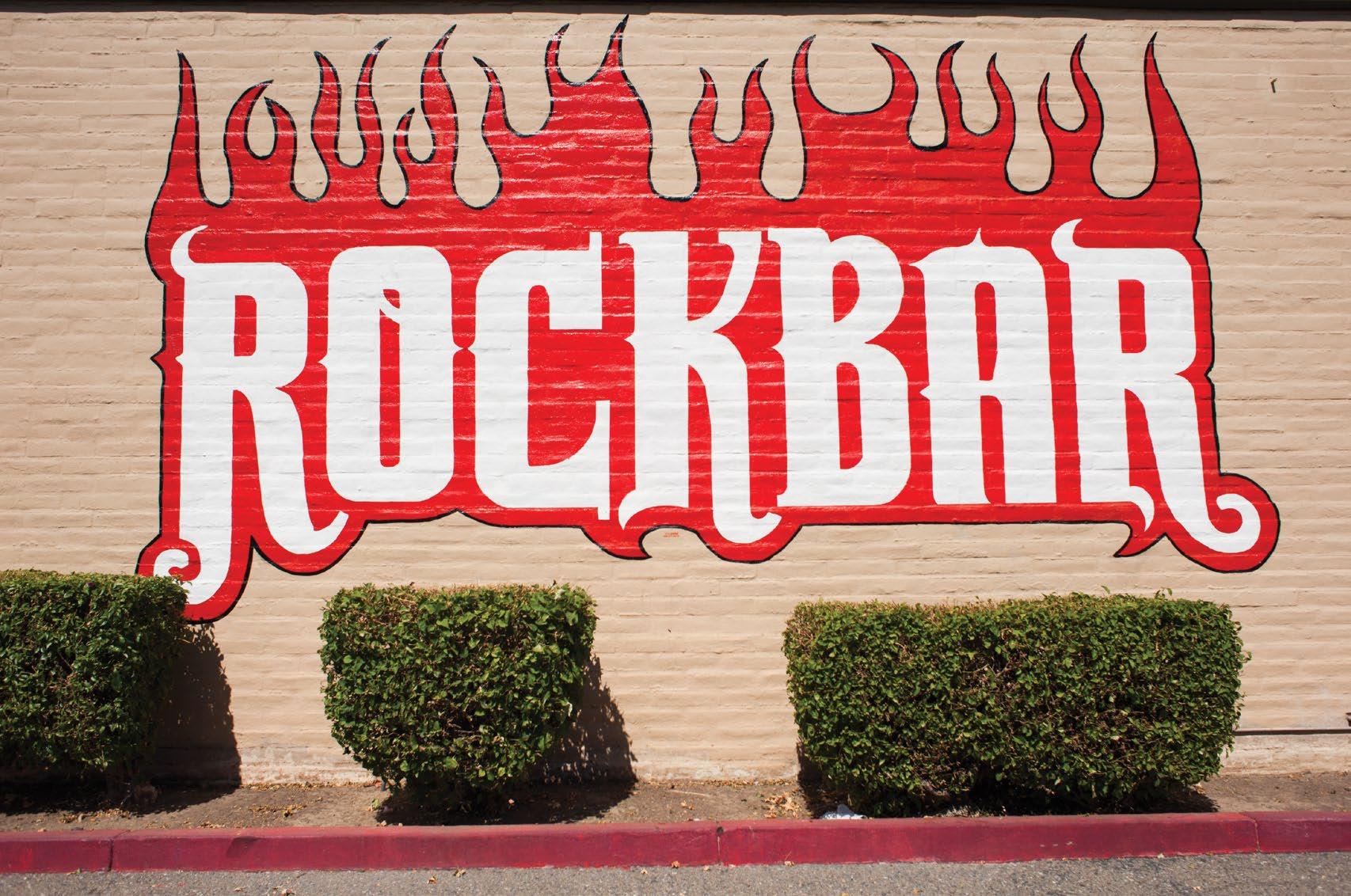
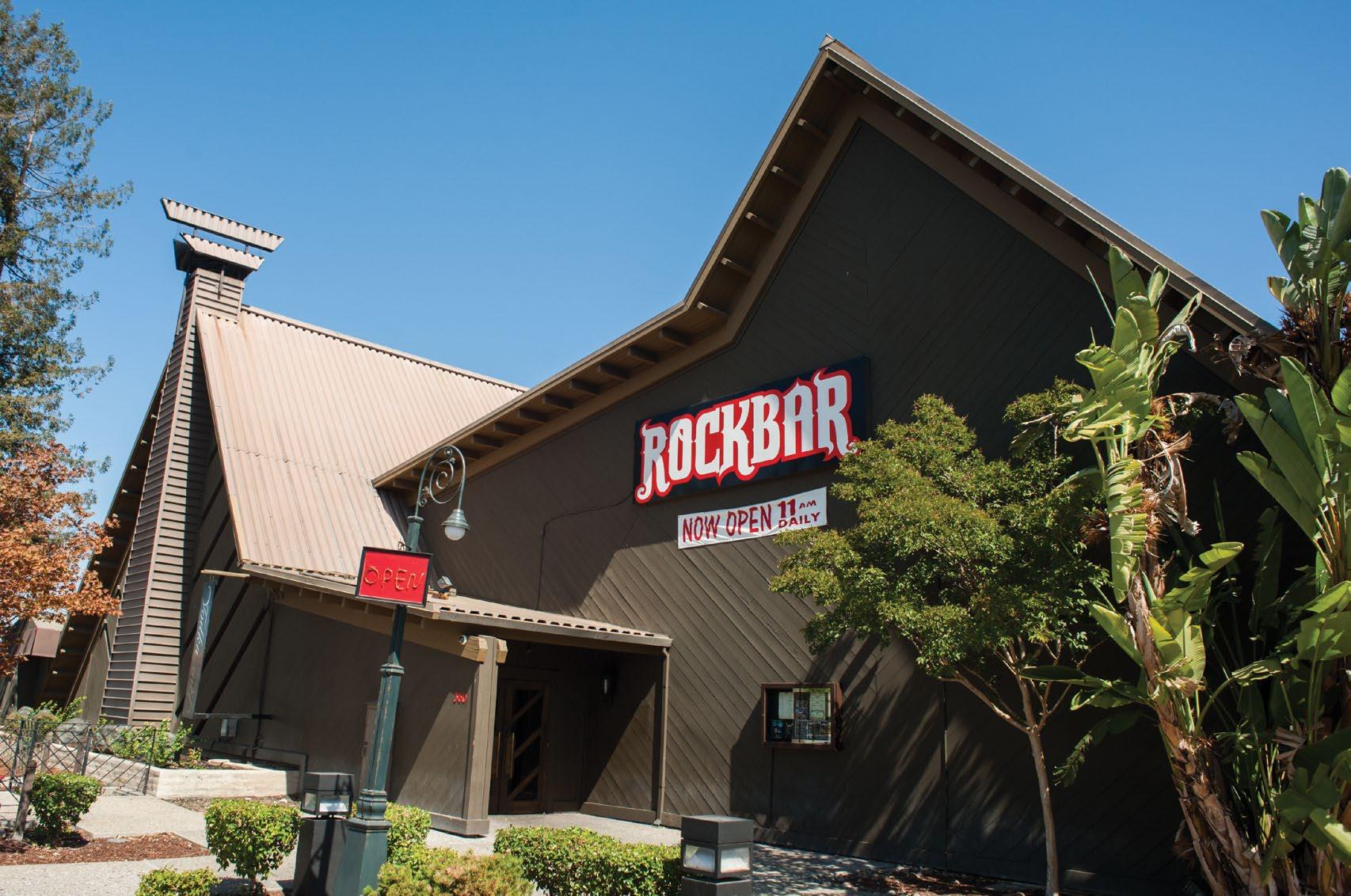


HER DANCE HER DANCE
Photographer: Jeremy Castillo
Photographer Assistants: Simpson Yiu & Travis Leech
Model: Amy Baylis
Stylist: Elle Mitchell
Hair & MUA: Suzanne Codella for Headcase Salon
Art Director/Producer: Kristen Pfund

64

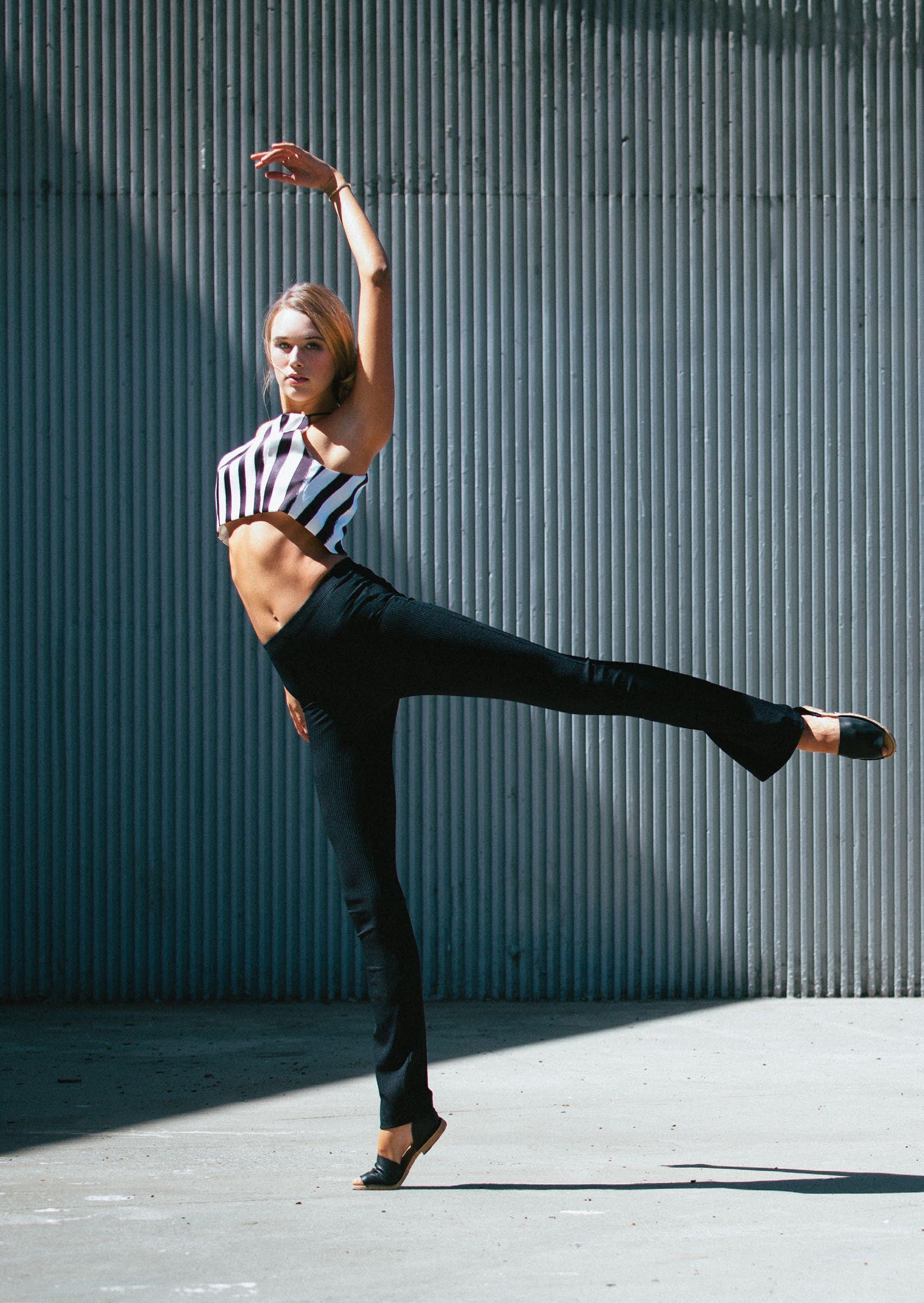

67
Top: Top Shop, Nordstrom Valley Fair $68 Pants: Top Shop, Nordstrom Valley Fair $48 Sandals: Top Shop, Nordstrom Valley Fair $65 Jewelry: Isharya.com
 Top: Top Shop, Nordstrom Valley Fair $16
Underwear: Calvin Klein, Nordstrom Valley Fair $22
Boots: Dr. Martens, Nordstrom Valley Fair $140
Top: Top Shop, Nordstrom Valley Fair $16
Underwear: Calvin Klein, Nordstrom Valley Fair $22
Boots: Dr. Martens, Nordstrom Valley Fair $140
68
Overalls: Stylists


 Dress: Top Shop, Nordstrom Valley Fair $48
Socks: Free People, Nordstrom Valley Fair $22
Dress: Top Shop, Nordstrom Valley Fair $48
Socks: Free People, Nordstrom Valley Fair $22
71
Boots: Dr. Martens, Nordstrom Valley Fair $140 Jewelry: Isharya.com


72
Top: Top Shop, Nordstrom Valley Fair $25 Shorts: Top Shop, Nordstrom Valley Fair $60 Sweater: Undefeated, Aristocrats $80 Jewelry: Isharya.com Shoes: Stylists

Songs in a Suitcase
 Written by Nathan Zanon Photography by David Ho
Written by Nathan Zanon Photography by David Ho
JEFF CONLEY PACKS BLUESY FOLK-ROCK INTO HOMEMADE GUITARS
Originally from Cape Cod, Massachusetts, singersongwriter Jeff Conley spent the early part of his career touring the Northeast, developing his style and voice as a musician. After working with some bands, he went solo—but needed to distinguish himself. “I didn’t want to be just another 26-year-old kid with a guitar in my hand,” he explains.
Hoping to create more sound on stage, Conley started experimenting with electronic drums that he could control with his feet, making them out of objects he had at home.
“I’ve been obsessed with vintage stuff since I was a kid,” he
the skills he’d acquired making drums and build his own guitar to replace the lost ones. So he took the electric guitar he’d practiced on as a kid, put the parts into an old clarinet case, and wired up his own instrument. Once he performed with it, he felt “a whole new love of music.” Eventually, he was playing shows only with instruments he’d made himself. He now has ten homemade guitars with varying functions, most of them made from vintage suitcases.

As he was reinventing his performances, Conley was also simplifying his music, taking cues from the musicians he’d grown up with, like Bob Dylan and Paul Simon. “When I was in my band in Boston, we were always trying to write these crazy, complicated songs,” he says, “[but] simple seems to win out in most cases in life. So I just kind of stopped trying so hard and started writing lyrics that came to mind, instead of searching for lyrics and writing some cool metaphor.”
says. “I used to go to antique shops with my mom.” His first drum was forged out of an antique umbrella stand.
The visually interesting props helped set him apart. “I found a lot of people coming up to me after shows saying, ‘I’ve never seen that before.’”
A turning point came around 2007 after two of his vintage Gibson guitars were stolen. A friend suggested he use
Conley and his wife moved to the Bay Area in 2013. The technology and maker cultures here seem to be a perfect fit for his offerings, but it’s still a struggle. “You have great days, and you have back-to-square-one days. And when you’re doing that, the music itself can be really hard to deal with. I’ve found that a huge pick-me-up for me is building. I probably enjoy it as much as, if not more than, playing.”
jeffconleyband.com
facebook: jeffconleymusic
twitter: jeffconleyband
75
“I found a lot of people coming up to me after shows saying, ‘I’ve never seen that before.’”
“WE’RE DRIVING A SCENE IN SAN JOSE WHERE IT’S PROGRESSIVE MUSIC, PROGRESSIVE TECHNOLOGY, PROGRESSIVE ART.”

DJ CUTSO
MIXMASTER
Written
When discussing his career, Paulo “Cutso” Bello says “we” almost as often as “I”—a nod to the collaborative spirit he brings to DJ’ing.
Cutso’s uncle let him loose on a turntable as early as age eight. “He was teaching me with Kraftwerk and Pet Shop Boys records,” he recalls. “I grew up around it.” By the time he was a teenager, he had entrenched himself in the San Jose DJ scene. “We learned how to set up speakers, DJ weddings...we learned how to scratch, do battle tricks, and it all shows in what is considered a Bay Area DJ style. Very involved and very skill-heavy.”
That “we” is the Bangerz, a six-person production group comprising Cutso and fellow DJs Goldenchyld, Replay, Nick Ngo, Squareweezy, and G-Wrex. The group originally formed in 1998, when they were in high school. They began by doing battles together, and they’ve remained connected ever since.
Their first break came working with the JabbaWockeeZ, winners of MTV’s America’s Best Dance Crew in 2008. That win earned the dancers a show in Las Vegas, for which the Bangerz produced the music. Cutso tried a stint in Vegas, too, but soon returned to his roots, where he felt he had more creative freedom. “Over there…they only want to hear certain things at the club,” he explains.

In 2010, a DJ collaboration at the SubZero Festival with San Jose Taiko became the stuff of legend. The unlikely combination worked, says Cutso, because “we both share the same raw energy.”
Today, Cutso is connected to as many projects as ever. In addition to regular nightclub gigs, he formed the San Jose chapter of Motown on Mondays, spinning classic R&B and future soul tunes at The Continental every week; he co-hosts a Saturday night show on Wild 94.9 called Rebel Pop Radio, featuring cuts by nationally touring DJs; and he continues to record with other musicians, from underground rapper Lyrics Born to local star Anya. Cutso is hoping his work helps push the envelope in the South Bay. “We’re driving a scene in San Jose where it’s progressive music, progressive technology, progressive art. We’re doing everything we can to set the climate for that.”
“Everyone here is open,” he continues. “Everyone here is hungry, everyone here is looking to create something new. The culture is rich. There’s so many creative people, it’s only a matter of time before [they] start crossing paths and making something.”
When they do, DJ Cutso will be there with the perfect soundtrack.
ULTIMATE
djcutso.com socila media: cutso 77
by Nathan Zanon Photography by mark chua
ALBUM PICKS
 Curated by Tommy Aguilar @ungrammar
Curated by Tommy Aguilar @ungrammar
Christian Rich, FW14, LP (Lucky Number)
Forty seconds into FW14 ’s opening track, you’ve already heard a multitude of sounds, ranging from jazzy bass strums to uptempo bass soul rhythms, from future boom bap to techno. Welcome to the world of Christian Rich, Chicago-born, Nigerian-raised, Los Angeles–based producers and DJ duo consisting of twin brothers Taiwo Hassan and Kehinde Hassan. Grammynominated for producing, the brothers have a track record in the industry. They were mentored by Pharrell and Shae Haley of N.E.R.D. and have worked with Diddy, Lupe, J Cole, and others. But FW14 speaks for itself. Many albums in 2015 have me elated and bouncing, but when I came across this record, had no expectations, and was automatically moved—that meant the album was special. And if it’s special upon first listening, then it’s probably going to have lasting power in my book. If you know my other work as a presenter and promoter, well, you know what it means when I get excited about new work.
FKA twigs, M3LL1XX5X, EP (Young Turks)

Great new work by FKA twigs. M3LL155X (pronounced Mellissa) is also a product of talented producer Boots, who was very instrumental in most of the production work for Beyonce’s 2013 eponymous album. FKA twigs gives Boots’s sound another voice, allowing him to take his music in another nuanced direction. Cop it.
The Foreign Exchange, Tales From the Land of Milk and Honey, LP (+FE Music)

Like most of the Foreign Exchange records, Tales From the Land of Milk and Honey comes to us as a breath of fresh air in the current soul landscape it enters. However, this is the first time since their first album, Connected, that FE is bringing something new to the table. If Disclosure is breaking ground in popular music with their sound ode to the house music of the nineties, Tales From the Land of Milk and Honey surely deserves its due respect. This record, however, is not a remixed version of the original sound, but rather great production and songwriting that is the FE original duo of Nicolay and Phonte.
Tame Impala, Currents, LP (Interscope)
I hope this band is sneaking up on no one. Tame Impala, the work and creation of lead frontman Kevin Parker, has been a mainstay in the festival circuit for the past three years or so and should be reaching a new level of popularity with Currents. With Currents, Tame Impala expands upon its psychedelic foundation with deep grooves throughout. The polished new album will definitely garner wider popularity for the band, which is fine by me as long as they keep releasing good music. Lastly, seeing them live took my fandom to another level—a great band to see perform.
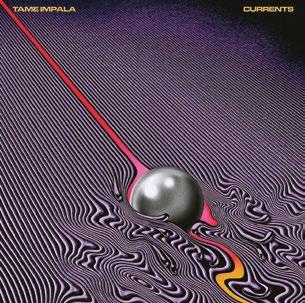
1 2 3 4 78
Contributors
The production of Content Magazine would not be possible without the talented writers, editors, graphic artists, and photographers who contribute to each issue. We thank you and are proud to provide a publication to display your work. We are also thankful for the sponsors and readers who have supported this magazine through advertisements and subscriptions.
Want to be a part of the Content community?
Contact us at: Editor@content-magazine.com
Diane produces and hosts a weekly public affairs program on Radio KKUP, 91.5 fm, and writes freelance for Content, Atom Magazine, De-Bug, and Metro Silicon Valley newspaper. She’s also a big-time San Jose BikePartier, Willow Glen neighborhoodie, and Silicon Valley wage slave.
A photographer in love with fashion and street photography, Mark was born in Manila, but has spent half his life in San Jose. He picked up his first camera when fashion first called to him. His primary focus is his family and documenting the lives of his wife and two daughters. VISUALSBYMARK.COM
DAVID HO
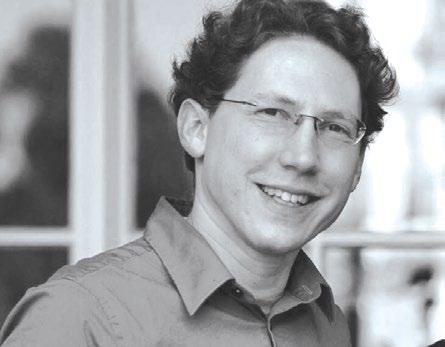
Born in Oakland, David is currently living in San Jose and attending SJSU. His obsession with photography started in 2011 when a high school teacher gave him a camera. He went from shooting school events to shooting fashion. By 2014, he’d joined the Darkside of the Moon photography and cinema team, as well as Flawless Victory Productions. visualsbydavidho.com
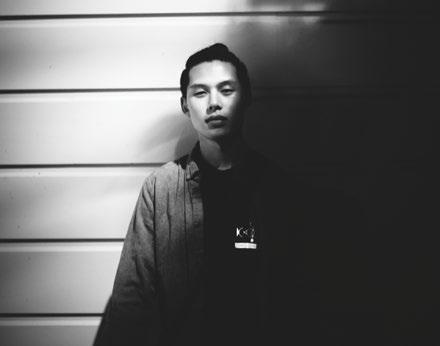
A native of San Jose, Julianne has edited a variety of publications, including the Santa Clara Review and Outdoor USA Magazine
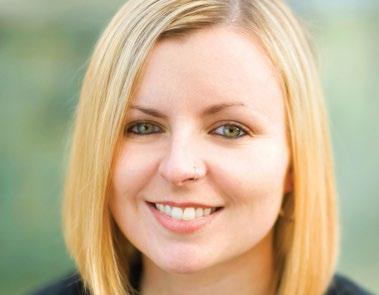
She was a founding member of the San Jose–based Cardboard Box Theatre Project, and she holds an MFA in Dramatic Writing from Carnegie Mellon University.
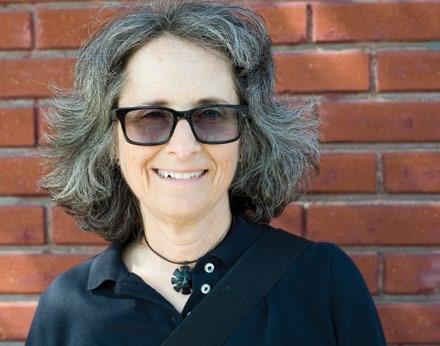

MICHELLE RUNDE
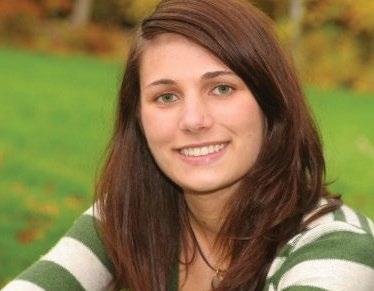
Michelle moved to San Jose recently from Washington State. She graduated from Gonzaga University with two BAs: Political Science and History. With so much to do and see in the Bay Area, she spends her time strolling street festivals, seeing plays and musicals, and exploring San Francisco.
Nathan is a social media geek, a frequent doodler, and a pretty good juggler. He has called San Jose home for more than a decade, and has ingrained himself in the arts and cultural scene through his work with the Montalvo Arts Center, the Camera Cinemas, Cinequest, and the San Jose Downtown Association.
Gillian is a freelance writer based in San Jose. With a fascination for arts and technology, she loves meeting new people and learning more about what drives them. Besides writing, Gillian is also a humanist celebrant and president of Sunday Assembly Silicon Valley, a secular congregation that celebrates life.
Jeremy is a San Jose native. As a filmmaker, Jeremy has collaborated with musicians, artists, and the world’s largest technology companies. You can find him wandering the streets with his camera, in his lab making beats, or at the driving range working on his swing. jeremypcastillo.com
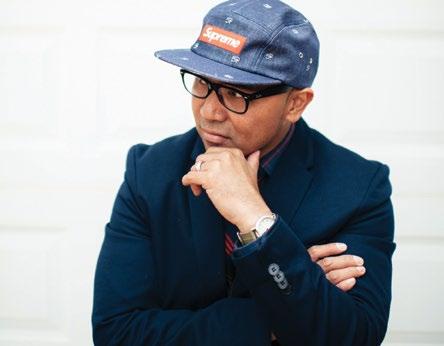
 GILLIAN CLAUS
MARK CHUA
JULIANNE JIGOUR
DIANE SOLOMON
JEREMY CASTILLO
NATHAN ZANON
GILLIAN CLAUS
MARK CHUA
JULIANNE JIGOUR
DIANE SOLOMON
JEREMY CASTILLO
NATHAN ZANON
79
EVELYN SO LONGING FOR CREATIVE POSSIBILITY
Dream dinner party: You, Andy Warhol, and...?
What a fun idea. Some people that I would be very interested in meeting, hearing, and talking with are Ken Burns, Laura Hillenbrand, Dr. Elizabeth Blackwell, Emily Dickinson, Audre Lorde, Oliver Sacks, Yo-Yo Ma, and Ang Lee.
Which historical figure most fascinates you?
I remember one of my picture books was a mini biography of Abraham Lincoln. I remember being moved when I read that his mother had died when he was young. I think, at the time, I was a bit envious of anyone who grew up in the countryside (as I recall, he grew up on a farm), compared with my suburban childhood. I remember that all the illustrations were woodcuts, which I hadn’t seen much before, and there was something about the woodcuts that made a lasting impression on me. Maybe their bold textures or shadows or the way they were used to tell a story. There are so many things that I find impressive about Lincoln’s life. His humble upbringing, all the jobs and skills he learned to do on his own, studying on his own to become an attorney and succeeding, even though he had little formal education. I guess there were no law schools then, but I can’t imagine doing that today. As an adult, I’m still fascinated with Lincoln. I find myself more curious about his personal story now, which I’m much less familiar with than what the history books say about him as the 16th president or the commander-in-chief or aspiring politician. It seems there were many sides to this complex man.
In his “Ars Poetica?,” Czeslaw Milosz writes, “The purpose of poetry is to remind us how difficult it is to remain just one person.” What are your thoughts on that? This quote reminds me of what I’d call the longing for creative possibility, the impulse to embrace it when it’s found, and the difficulty and necessity of trying to be one’s own self.

Content Magazine Literary Series is curated
by Santa Clara County Poet Laureate David Perez
Interview by Chad Hall
After Supper
Tonight I sit at the table eating fruit. Watch the sky darken. Feel the coolness of evening through the open window.
On my bookshelf, a photograph. Granmama’s Chinese dress, gray as the Rochester sky with hints of blue and coral. White carp, birds in mid-air. Granpapa’s black suit, black bow tie. He was so proud of her. They beam at the camera.

On the wall behind them, one of her Chinese watercolors. Red petals.
Gray-black leaves, shadows. Or birds resting on a branch? I never saw Granmama or Granpapa lift an apple, or pear, or peach to the mouth and bite into it, the way I’m eating my Gala.
Flesh tangy and sweet, crisp. First I washed the apple with soap, as they did. I left in the drawer the knife they used to pare away long curls of bitterness.
Rain Song
Swaying holly— polished leaves and berries, wind against wet window-glass. It must have rained overnight— I heard splashes on the roof, the tambourine patter, the drip drip off the eaves. The downpour onto thirsty ground.
The drumming on pavement and asphalt. I listen to rainwater coursing along the length of gutters. The liquid song like notes falling from the fingertips of someone at the piano. Each pause the sound of waiting. I close my eyes and listen.
Excerpts: Provided by Evelyn So
81
M W SU T
Impulsive!
22
This contemporary Persian dance show and concert features Tara Kamangar on piano, Yahya Alkhansa on percussions, and choreography and dance by Sahar Dehghan.
Trianon Theatre diasporaartsconnection.org
Sofa Sundays
15
One Sunday each month the SoFA District, including the galleries, theaters, and food trucks in Gore Park, will present performances, music, activities, and food to the community.
Gore Park FACEBOOK: SOFASUNDAYSANJOSE
Santa Run
13
This 5K run or walk through downtown San Jose celebrates the holiday season with runners racing in holiday garb. From Mrs. Claus to a dreidel, the ideas are limitless.
Commedia Night
Grab a cappuccino and check out up-and-coming comedians from around the Bay as they perform at this open mic night in downtown San Jose.
Jazz on Tuesdays
Pianist Denny Berthiaume hosts a weekly jam session featuring a special guest vocalist and a rotating lineup of talented musicians for his trio.
Angelicas Weekly angelicasllc.com
RiverDance
24
The international Irish dance phenomenon is back by popular demand in Riverdance —“The 20th Anniversary World Tour.” Broadway san Jose Nov 24–29 broadwaysanjose.com
From Flapping Birds to Space Telescopes
The Art and Science of Origami Robert Lang, one of the foremost origami artists, will describe and share origami designs of mindblowing complexity and realism.
Stanford University continuingstudies.stanford.edu
Santa Cruz Holiday Lights Train
20
Vintage cars, adorned with thousands of colorful lights, roll through the streets of Santa Cruz as passengers sing holiday carols, and sip hot spiced cider.
Santa Cruz Beach Boardwalk Dec 18–23 roaringcamp.com
An Evening with David Sedaris
With sardonic wit and incisive social critiques, Sedaris will appear for one night only, featuring all-new readings of his work and a book signing. SJ
The Christmas Ballet
From classical to cool, Smuin offers two acts filled with a stunning and original array of ballet, tap, and jazz. Celebrate the season with this “Nutcracker alternative.”
Mtn View Center for the Performing Arts Dec 9–13 smuinballet.org
Motown On Mondays DJs, producers, musicians, and music enthusiasts who share a passion for soul music and dancing converge on Monday nights.
2
the Continental Bar weekly Motownonmondays.com
Center for the Performing Arts sanjosetheaters.org 18
9
2
Caffe Frascati Weekly caffefrascati.com
Weekly
9 8 3
Clay Sculpture class Hands-on sessions with sculptor Nicolas Echeverri von Broen to explore the art of clay. Ages 8 and up. No experience necessary.
School of Visual Philosophy
schoolofvisualphilosophy.com
Santa Clara St & Almaden Blvd santarunsv.com 82
TH F S
Drink & Draw
Bring your art supplies, and draw to the sounds of DJ Third Eye Shrined. While there, sample one of the varieties of bottled beer available.
3rd Thurs artboutiki.com
The Brother From Another Planet
A 1980s classic science fiction film from John Sayles, this vibrant gem of a comedy has much to tell about US culture.
A Spontaneous Fantasia Thanks Imagining Performer, interactive designer, filmmaker, graphic artist, and composer J-Walt explores the harvest season through an improvised virtual reality show.
Content LAB
Bacon & Beer Classic
Come to the baseball stadium for craft brew samples and mouthwatering, bacon-inspired tastes cooked by local restaurants along with music, dancing, and interactive games for all.
Trans-Siberian Orchestra
The Ghosts of Christmas Eve follows the journey of a young runaway who seeks shelter in an abandoned vaudeville theater—and the ghostly visions she experiences from that concert hall’s past. SAP Center sapcenter.com
Chopshticks
Chinese food and comedy mix at this annual holiday laugh fest. This year features guest performer Wayne Federman, a comedian, actor, author, comedy writer, and musician. Oshman Family Jewish Community Center paloaltojcc.org
Christmas in the Park Tree Lighting
Come to downtown San Jose to relax and enjoy the opening of Christmas in the Park. This Tree Lighting Ceremony is the unofficial kick-off to the holiday season in San Jose.
Plaza de Cesar Chavez christmasinthepark.com
Great Dickens Christmas Fair
21
Enter the world of Charles Dickens and Victorian London! Over three acres are transformed into lamplit lanes, pubs and theatres, tearooms, and shops.
Cow Palace Nov 21–Dec 20 dickensfair.com
Abhinaya’s 35th Anniversary Concert
Excerpts from “Love Exquisite” and highlights of Abhinaya’s signature pieces celebrate 35 years of South Indian dance-making.
Mayer Theater Dec 5–6 abhinaya.org
To have your event considered for listing, send to: press@content-magazine.com
Nov/Dec
COntent Calendar #ContentPick
24
Iron
LAB #3,
Chefs,
dinner and wine. School of Visual Philosophy content-magazine.com 14 Hector Mendoza & Day of the Dead Lucas Artist Fellow Hector Mendoza discusses the role of flora in his new body of work and provides a participatory artmaking demonstration Montalvo Arts Center montalvoarts.org 6
Chefs At Content
Iron
learn to cast iron and satisfy your curious tastebuds with a special guest chef serving up
Fujitsu Planetarium planetarium.deanza.edu 20
27
San
Stadium baconandbeerclassic.com 14
Jose Municipal
5
12
Bluelight Cinemas bluelightcinemas.com
3
19 83
SLG Art Boutiki Every
LAB
gatherings for culture creatives
Our second Content LAB, Tiki & Typography, was in the transformed Blanco Square on a beautiful downtown San Jose Indian summer night.
Guests were invited to spray-paint with Sean Boyles, learn about letterpress and create cards with School of Visual Philosophy, and look through Christine Benjamin’s inspiring tiki painting and illustrations. They shopped through Mondo’s Amazing Vintage collection and letterpress-branded Tiki & Typography coasters with the Printers’ Guild. They created chalk art with Jorge Cruz, traditional Polynesian line art with Orly Locquiao from Cukui, and calligraphy with Nickki Honeycutt, owner of Amore Paper & Ink. They learned about and shopped custom signage with Ken Davis, and listened to Bruce Mitchell of Insider Software and artist Jason Mark Jones discuss font and graphic design.
As attendees began to settle in, Mark Holt, President of the United States Bartenders’ Guild, Silicon Valley Chapter, kicked off the night with a little tiki history. Then followed inspiring words about the world of typography from Joe Miller, SJSU professor and President of Design at Joe Miller’s Company. Afterward, Syrus Fotovat from Paper Plane guided us through the proper mixing techniques for tiki culture’s traditional mai tai with Denizen Rum. Many claimed these were the best mai tais they’ve ever had.
Do-Hee Kim concluded with some insights from her #100daysoffonts project, explaining that pushing yourself to create every day reaps great rewards from the connection with others and the work that you produce.
Hawaiian Poke Bowl served up their full menu—ahi and salmon poke over rice and greens, freshly squeezed watermelon juice, and sweet acai for dessert.
Before the night came to an end, The Cultivator began hacking coconuts as a surprise beverage for the guests to add to the traditional tiki beverages.
The night was full of laughs, great food and drinks, trying new things, and enjoying the exciting culture of tiki.
Thank you to Tiki & Typography’s event sponsors: Knight Foundation, Blanco Square, Hawaiian Poke Bowl, Jack’s Bar & Lounge, “the Silicon Valley Chapter of the Bartenders’ Guild, Denizen Rum, Rational Spirits, Mach 7 Sound, San Jose Jazz, and CreaTV.
Also, thank you to the talented contributors: Joe Miller; Do-Hee Kim; Mark Holt; Syrus Fotovat; Christine Benjamin; Jason Mark Jones; Jorge Cruz; Nickki Honeycutt, owner of Amore Paper & Ink; Orly Locquiao, owner of Cukui; Bruce Mitchell; Ken Davis; Sean Boyles, owner of The Arsenal; Armando Garay of Amazing Vintage; Dana and Yori Seeger of the School of Visual Philosophy; and Matt Kelsey, Katie Carter, and Katie Hoffman from the San Jose Printers’ Guild. We could not have done it without you!
Stay tuned for more information on Content magazine’s next LAB: Iron Chefs
November 14, 2015
84
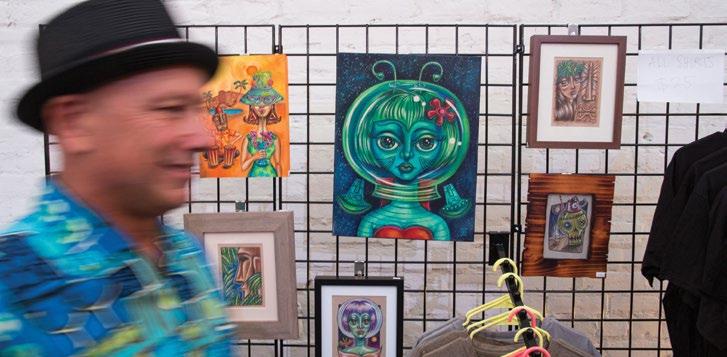

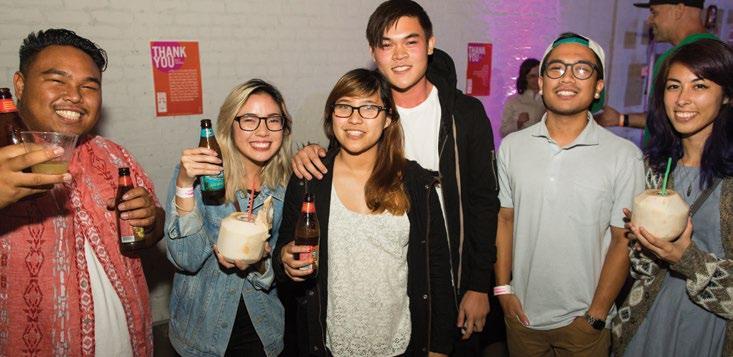
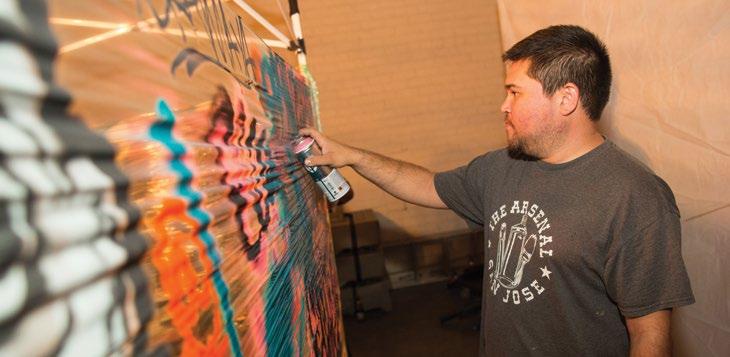


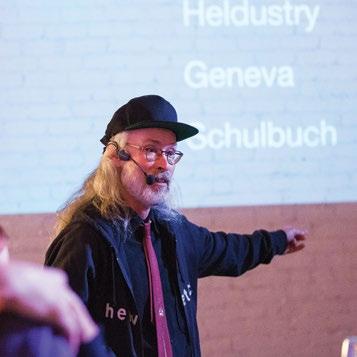

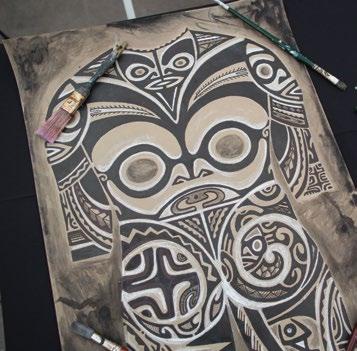
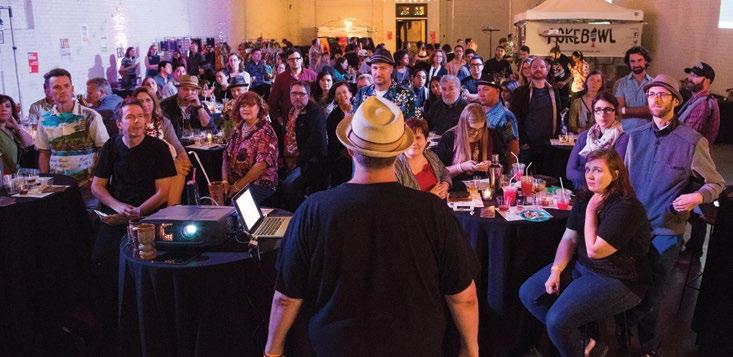
85
UPCOMING EXHIBITS
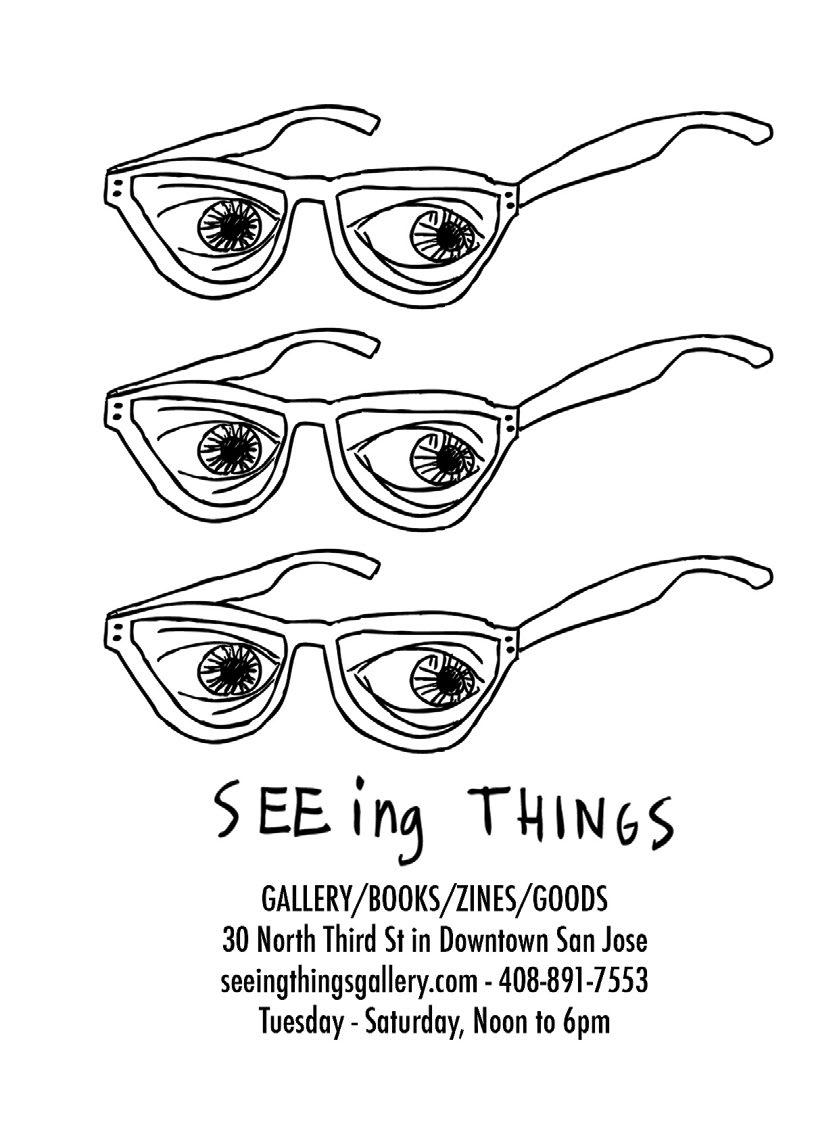
November: Spencer Keeton Cunningham and Erlin Geffard
December: Black Stamp Studios
525 N 7th Street San Jose, CA 95112
empiresevenstudios.com

Thank You
This issue is made possible with the support of our partners—companies and organizations who share our desire to support and develop the creative community of the South Bay. We are grateful for their contribution and support and for actively taking part in the betterment of our region.
For more information on becoming a mission partner, contact daniel@content-magazine.com
Knight Foundation supports transformational ideas that promote quality journalism, advance media innovation, engage communities and foster the arts. We believe that democracy thrives when people and communities are informed and engaged.
Knight is working to support the urbanization of a traditionally sprawling city with a specific focus on Central San Jose. Our investments tap into the region’s creative energy and disruptive history to accelerate the city’s significance as a well-connected, transport-accessible hub for culture and innovation in the South Bay.
Working with partners in the public and private sectors, we support a range of projects from prototypes and popups to in-depth research and sustained organizational support.
www.knightfoundation.org
Filco Events has been working on festivals, fundraisers, and events in the San Francisco Bay Area since 1988. Each event is individually tailored to the special needs and goals of the organization. While fundraising is always a significant part of festivals, other priorities include media attention, corporate support, and volunteer building, as well as the opportunity to showcase specific programs and services to the community.
In all cases, advancing long-term goals while still raising significant revenue gives each event purpose and recognition for many years into the future. From logistics to concessions to volunteer coordination, we can contract key elements of large festivals, provide consultation, or actually direct the entire production.
We are also available for national and multi-city events.
www.filco.com
THAnK YOU
Proud Sponsor of Content Magazine Pick-Up Parties for 2015
Parsley Sage Rosemary & Thyme offers a quality of service and cuisine that has raised the industry bar. Our services begin with a handshake and a smile: we delight in understanding your vision and executing each step. Our goal is to bring a restaurant-caliber dining experience to the location of your choosing. With a sommelier on staff, you are guaranteed a vast selection of wines from around the world. Parsley Sage Rosemary & Thyme offers signature cocktails, meticulously crafted with house-made tonics and infused syrups inspired by the aromatics of our namesake. With over 25 years of designing amazing experiences and a precedent for the best standards of service, you will see why our clients choose PSRT for the important moments in their lives and careers.
www.psrt.com
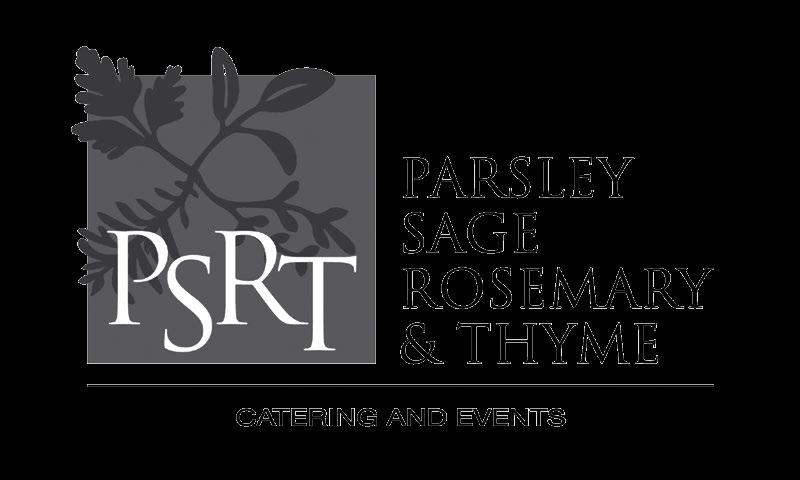
Hawaiian PokeBowl is a delicious fusion of Hawaiian poke (diced sushi-grade fish) and Brazilian hospitality! After five years at the San Pedro Square Farmers Market where they grew a loyal following, Hawaiian Poke Bowl has expanded to the SoFa Market, a super cute urban hipster food court with spacious wooden farm tables creating an industrial loft setting. The family runs every aspect of the business from the prep to serving the costumer with a total dedication to quality and freshness. They specialize in organic, wild, local fresh food. Check them out, right next to Fountainhead Bar.
THAnK YOU
www.hawaiian-pokebowl.com
Entertaining people with unmatched social & dining experiences throughout the South Bay. From singing karaoke daily at 7 Bamboo Lounge to grabbing a signature sandwich and craft beer at Spread Deli & Bottles to tasting wines and cheese at 20twenty cheese bar to meeting up for drinks with friends at Jack’s Bar & Lounge to enjoying local cuisine paired with craft beers & cocktails at Liquid Bread Gastropub to having us serving drinks at your next event with Your Pour Cocktail Catering, Dipsomania has something for everyone.
www.dipsomaniainc.com

Mach 7 Sound is a company local to the South Bay, catering professional sound reinforcement to a broad spectrum of events. Founded in San Jose as a hobby project, Mach 7 has grown to a versatile audio and lighting company with a proven track record of accommodating all their customers’ needs. With over 20 years of combined experience, Mach 7 has been supporting local music and arts in Morgan Hill, San Jose, Santa Cruz, and beyond.
THAnK YOU
www.mach7sound.com
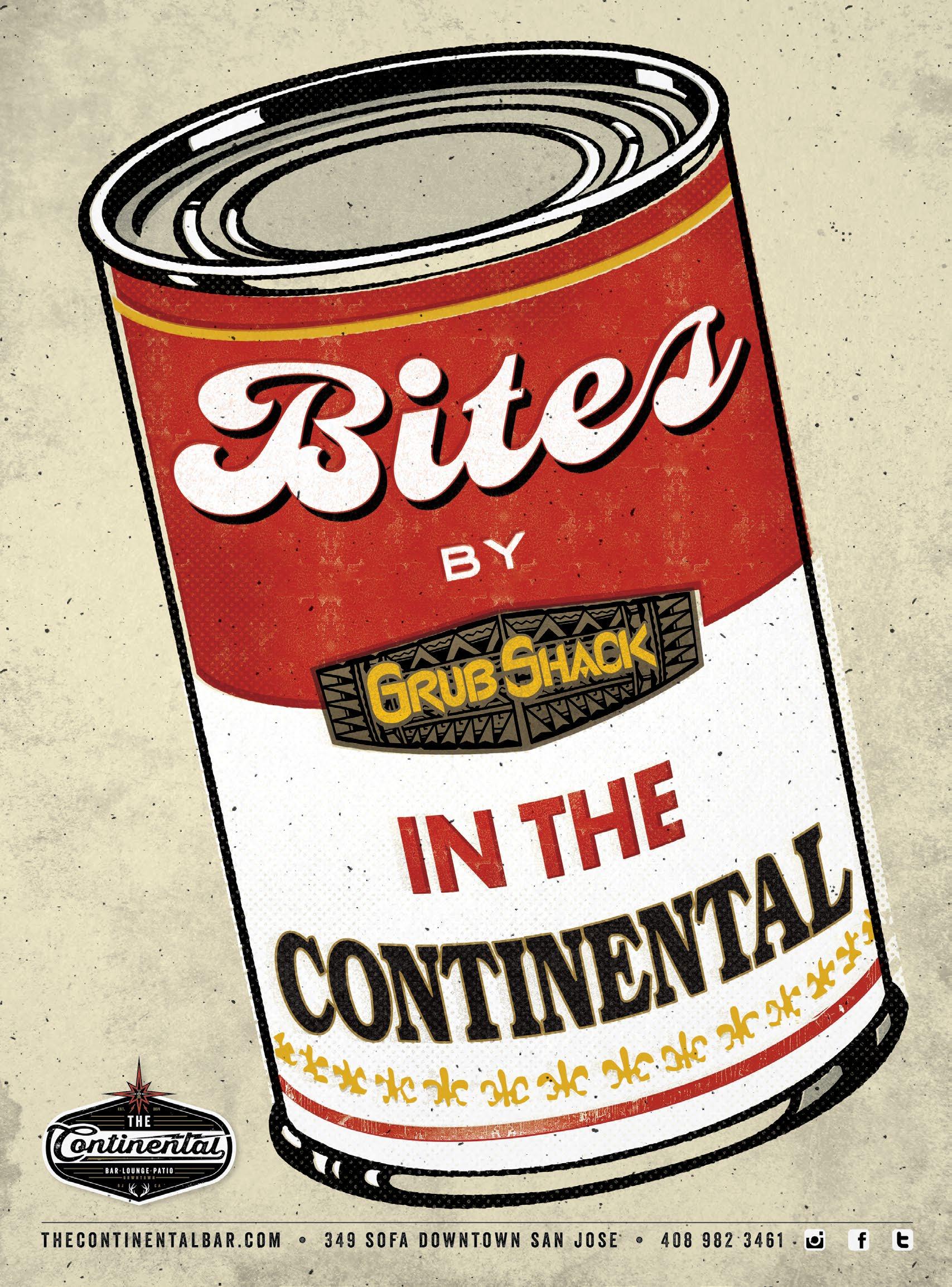
LAB Nov 14, 2015 #Iron_Chefs
gatherings for culture creatives
silicon valley’S INNOVATIVE & CREATIVE CULTURE
made in sanjose, ca
CONTENT NEXT ISSUE
SERVE 7.5
SAN JOSE 2015 WWW.CONTENT-MAGAZINE.COM
social media: contentmag ANNuAl SubSCripTiON priNT $42.00




























 la bandera
la bandera
 la muerte
la muerte














 Written by kate evans Photography by Stan Olszewski
Written by kate evans Photography by Stan Olszewski
 Co-owners
Grant Kjos
Dietrich Wahlstrand
Michele Willaford
Mike Willlaford
Co-owners
Grant Kjos
Dietrich Wahlstrand
Michele Willaford
Mike Willlaford
 Co-founders Cody Kraatz, Angela Dube, Steve Barkley, Danny McCue, and Aaron Francis
Co-founders Cody Kraatz, Angela Dube, Steve Barkley, Danny McCue, and Aaron Francis










 Written by Gillian claus Photography by Daniel Garcia
Redemption Boutique Owner Tammy Liu
Written by Gillian claus Photography by Daniel Garcia
Redemption Boutique Owner Tammy Liu
























 Top: Top Shop, Nordstrom Valley Fair $16
Underwear: Calvin Klein, Nordstrom Valley Fair $22
Boots: Dr. Martens, Nordstrom Valley Fair $140
Top: Top Shop, Nordstrom Valley Fair $16
Underwear: Calvin Klein, Nordstrom Valley Fair $22
Boots: Dr. Martens, Nordstrom Valley Fair $140


 Dress: Top Shop, Nordstrom Valley Fair $48
Socks: Free People, Nordstrom Valley Fair $22
Dress: Top Shop, Nordstrom Valley Fair $48
Socks: Free People, Nordstrom Valley Fair $22



 Written by Nathan Zanon Photography by David Ho
Written by Nathan Zanon Photography by David Ho



 Curated by Tommy Aguilar @ungrammar
Curated by Tommy Aguilar @ungrammar










 GILLIAN CLAUS
MARK CHUA
JULIANNE JIGOUR
DIANE SOLOMON
JEREMY CASTILLO
NATHAN ZANON
GILLIAN CLAUS
MARK CHUA
JULIANNE JIGOUR
DIANE SOLOMON
JEREMY CASTILLO
NATHAN ZANON


















